
In many ways, the Adani Ahmedabad Marathon reflects India's run of successes in every sphere imaginable.
The nation is racing ahead
editor’s note
Issue 9 | December 2023

“To a brighter and more triumphant 2024!”
As we wrap up 2023's final edition of a-connect, it is heartening to reflect on the myriad stories that have defined a truly remarkable year for the Adani Group. This December, a-connect echoes the themes of breaking barriers, nurturing hope and embracing inclusivity.
Embark on a journey ‘Down Under’ as we unfold the story of our ventures in Australia. Delve into the narrative of our Fire Team standing tall against menacing flames. Safety remains our beacon, and this commitment is reinforced every day across the Group.
Celebrating our diversity, the Adani Foundation took the spotlight on the International Day of Persons with Disabilities. Over 100 individuals with disabilities received appointment letters, not just within the Adani Group but also across 20 other esteemed companies, a testament to our dedication to fostering an environment where every individual can flourish. The GreenX Talks, another initiative by the Adani Group, served as an inspiring platform, empowering individuals with disabilities and championing a culture of equal opportunities.
The cover story unfolds the excitement and emotional backdrop of the 7th Adani Ahmedabad Marathon. Over 20,000 participants laced up to turn the marathon into a resounding success. Hosted at the newly inaugurated Adani Sportsline-managed Sabarmati Riverfront Sports Park, the annual marathon stands as a testament to the city’s fervour for fitness and community engagement.
As we bid farewell to 2023, let us carry into the new year the spirit of breaking limits and igniting hope. Each story within these pages reflects not just our triumphs but the collective efforts of the entire Adani family. Here’s to a brighter and more triumphant 2024! ●
contents
Adapting To The Universe’s Most Abundant Element
Adani Total Gas aims to decarbonise and diversify downstream fuel demand in City Gas Distribution by adopting hydrogen for blending with natural gas.
Newsmakers
Adani Total Gas
Suresh P Manglani
“All know that the drop merges into the ocean, but few know that the ocean merges into the drop.” — Sant Kabir
“The best way to predict the future is to create it.” — Peter Drucker
T
he first known use of fuel was the combustion of firewood by Homo erectus nearly two million years ago. Throughout most of human history, only fuels derived from plants or animal fat were used by humans. With scientific breakthroughs in human history, newer fuels were introduced ranging from solid fuels to gaseous. But, after all the scientific breakthroughs, techno-economical and climate challenges, circumstances led humans to adapt the simplest element in the universe, which is the fuel of all the stars yet the lightest in weight.
Hydrogen occupies approximately 73% of the mass of the visible universe and 10% of the human body by mass. Though abundantly available all around us, harnessing hydrogen from renewable energy sources efficiently and economically is still a challenge.
Hydrogen as a feedstock is not a new subject for the chemical industry and refineries. India’s current hydrogen demand is around 6 mmtpa (million metric tonnes per annum), out of which the majority is consumed in oil refineries (3 mmtpa) and ammonia production (2.5 mmtpa). This demand is expected to reach 12 mmtpa by 2030. The government expects around 40% of this demand to be met by green hydrogen.
The move towards green hydrogen is also seen as a strategic step to diminish India’s import dependence. Presently, significant imports of commodities like natural gas, ammonia-urea and cooking coal contribute to the country’s trade balance. Localised green hydrogen production offers an avenue to reduce these imports.
The present natural gas demand by India’s city gas distribution sector is around 35 MSCMD (Million Standard Cubic Metres per Day), which is projected to increase up to 150 MSCMD. Adani Total Gas touches 14% of the population for distribution of natural gas, which makes it a key enabler for decarbonisation of downstream demand in India.
Adani Total Gas has embarked on a green journey with a hydrogen blending project wherein hydrogen will be generated on-site by electrolysers using renewable energy and blended with the existing natural gas grid. This pilot study will help assess the characteristics and impact of hydrogen - natural gas mix on existing assets.
It also requires looking into many design and operational aspects of the network, which will be affirmed by the pilot undertaken. This pilot will reach 4,000 domestic and commercial consumers. Initially, 2% v/v hydrogen will be mixed with natural gas to study the impact on existing commissioned assets after which the blend ratio will be increased to 8% v/v based on regulatory approvals.
Whenever a new technology is explored, it cannot be delivered without proper alignment of the various business teams. Working collaboratively is the key aspect to enable successful implementation of any project and I deeply appreciate the kind of synergy the Adani Group has. All these challenges require crisp technical inputs and operational co-ordination where our remarkable teams shine brightly. In this, I thank the teams from Adani New Industries and Adani Realty, who are working closely with us on this project, for their sincere collaboration and commitment to deliver the project.
Adani Total Gas has always been keen to explore green fuels and is committed to India’s and the Adani Group’s vision and mission of decarbonisation and sustainable future. I firmly believe that despite all the technical, economic and social challenges, if we have to create a sustainable future, it cannot be without diving into numerous possibilities.●
The writer is CEO & ED of Adani Total Gas Ltd.
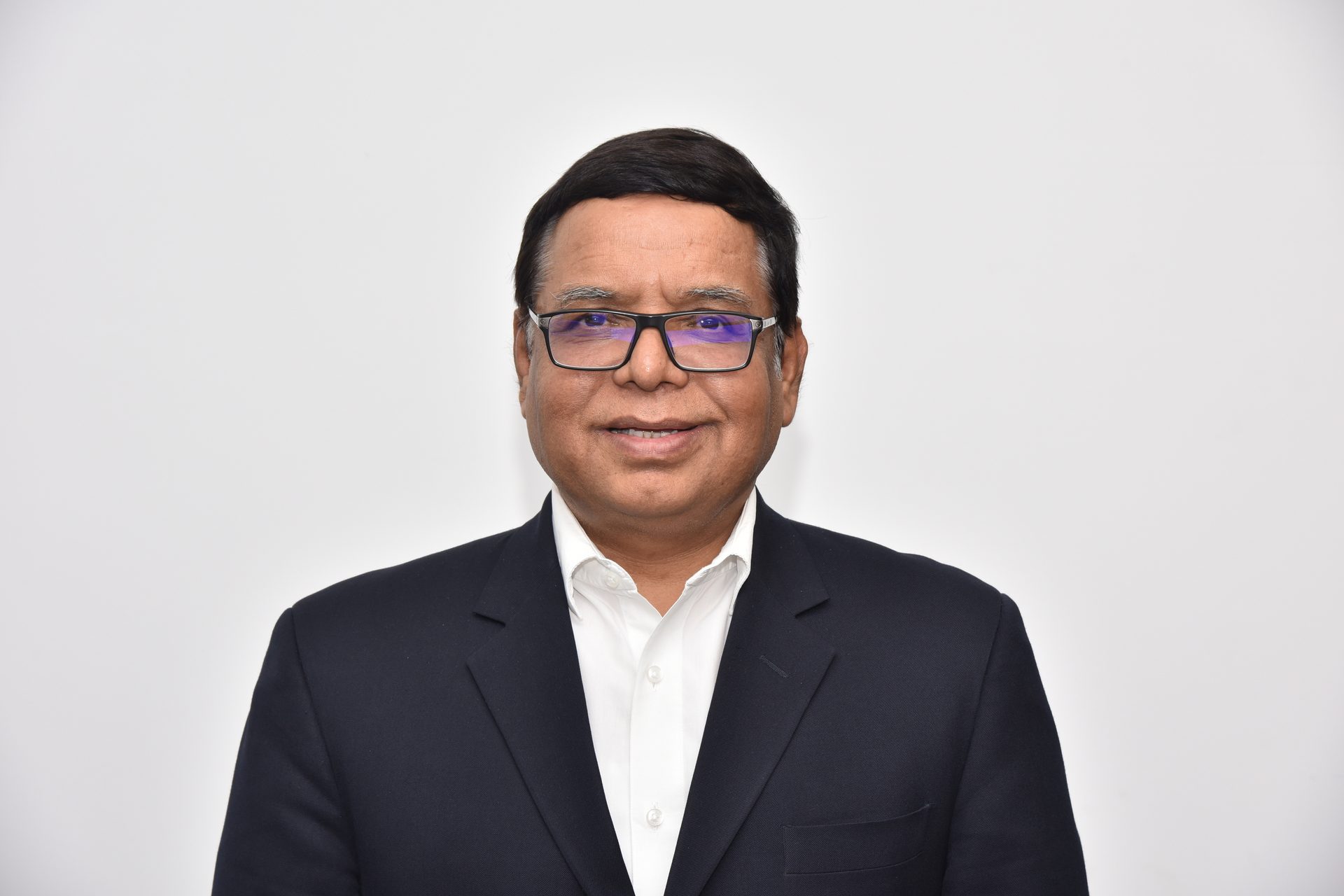
Adani Total Gas embarks on a green journey, blending hydrogen with natural gas to decarbonise downstream fuel demand, envisioning a sustainable future by embracing the most abundant element in the universe.”
expertspeak
Pioneering a Greener Future in the Cement Industry
ACC & Ambuja
Ambuja & ACC are leading a sustainable revolution.
Ajay Kapur
The cement industry plays a vital role in global infrastructure development, but its environmental impact cannot be ignored. However, in recent years, the industry has made significant strides in adopting sustainable practices, demonstrating its commitment to a greener future.
One of the key areas of focus is reducing carbon emissions. Cement production is responsible for a significant portion of global CO2 emissions and, to mitigate our carbon footprint, we have implemented various initiatives. Ambuja & ACC are leading a sustainable revolution in the cement industry with over 90% of the cement production now being blended cements recycling waste fly ash and slag. The new plants that we are going to put in will have one of the lowest thermal energy consumptions, one of the most efficient cement millings, and they will all be built with waste heat recovery systems. This significant shift not only enhances the environmental footprint of our cement but also marks a substantial step towards sustainability.
In addition to showcasing our dedication to environmental sustainability, our investment in green power offers our intended 140 MTPA (Million Tons Per Annum) capacity significant economic benefits. We are committed to powering 60% of our cement production with renewable energy sources by 2025. This ambitious goal will establish us as a frontrunner in the global arena of sustainable cement production. Further, green energy will help to facilitate the expansion of the supply of green cement and enable both housing and infrastructure projects to transition to green practices.
This is an integral part of our strategy, and we will continue to lead on the blended cements, the green cement strategy, which has been the fundamental strength of both ACC and Ambuja. So, when we look at our 2030 ESG Goals, we are aiming for ACC to be 400 kilos per tonne of CO2 emissions. We already reached 475 for ACC and, likewise, Ambuja has also taken a very ambitious goal of 453 kilos per tonne of CO2 emissions, which is currently at 528.
Our dedication to being the most profitable cement company necessitates a laser-like focus on margin growth and customer satisfaction. In line with this, we are investing heavily to maintain our position as the top premium brands in the Indian market by providing a broad range of services and solutions. We have started the process of strengthening our supply chain network and taking care of important areas like Other Costs and Freight & Forwarding.
As we become more technologically advanced, we hope to become one of the most value-driven, real-time decision makers in the cement industry.
On the mining front, we are trying to use more of biodiesel by modernising our mining operations. The kilns we are wanting to use through our Geoclean platform will utilise the waste of the society. We are looking at 30% thermal substitution rate through sludges and municipal solid waste. And then, finally, the cement that we produce, we only want to use 50% of traditional cement clinker, with the remaining coming from fly ash, slag and other materials which allow us to become a very green company.
Water conservation is another critical aspect of sustainability and remains a top priority for us. While we understand that cement production requires vast amounts of water and water is a precious resource, we are committed to its responsible usage with the help of our robust water governance practices that ensures responsible water management across our operations by reducing freshwater withdrawal and enhancing the usage of recycled water. By actively utilising harvested water, we are maximising its potential and contributing to the overall conservation efforts which has led Ambuja Cements to be 8 times water positive. This means that we replenish and conserve more water than we consume, ensuring the sustainable availability of this vital resource for future generations.
These actions demonstrate our commitment to being an even more responsible company in the years to come, as does our expanded usage of waste materials and green power.
Combining all these elements, we stand as one of the most environmentally friendly companies. We take pride in leading the way in sustainability. ●
The writer is CEO of Cement Business, Adani Group.
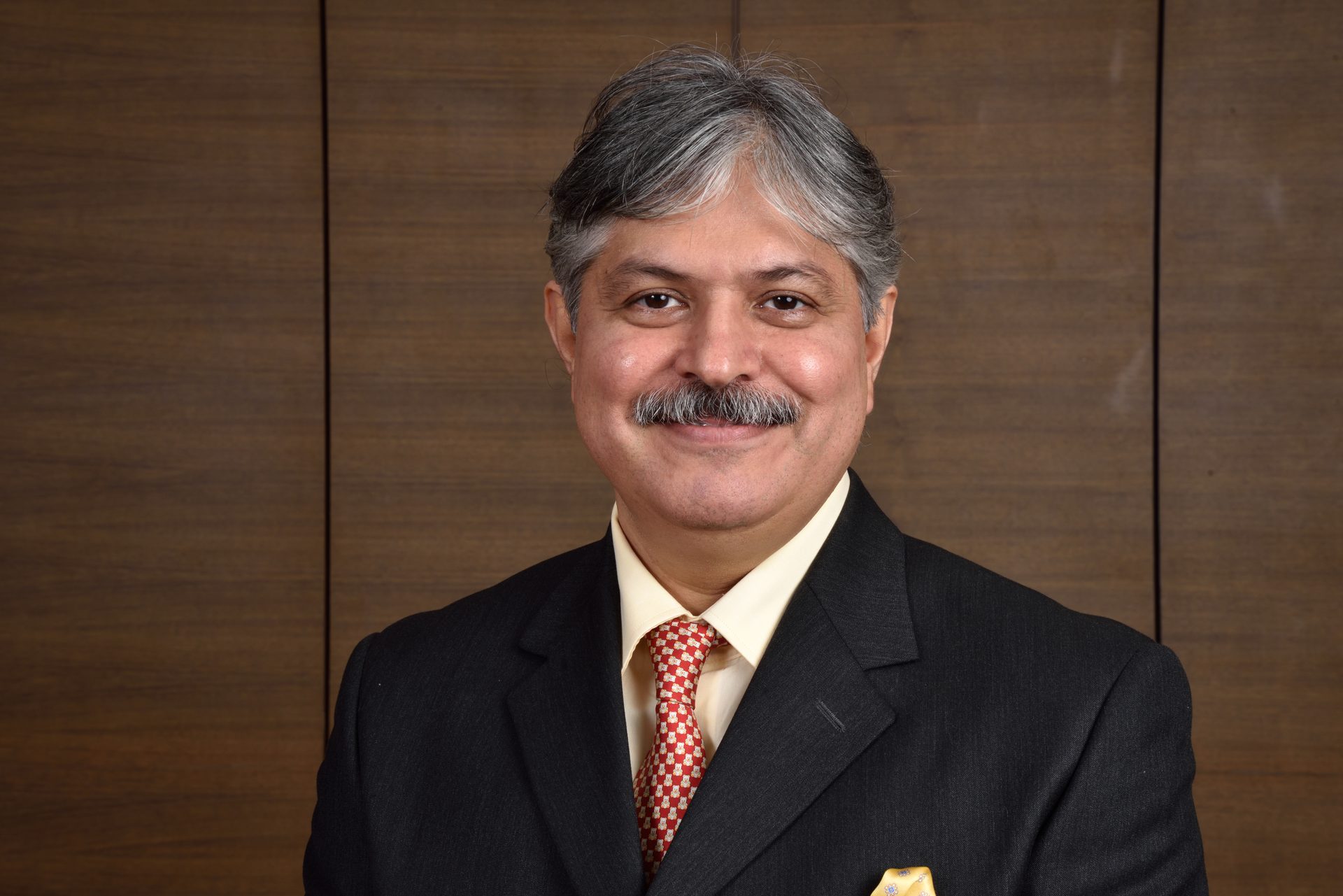
We are constantly exploring innovative ways to incorporate sustainable materials into our cement production processes. Our emphasis is on expanding the range of sustainable solutions to accelerate the transition towards low-carbon and circular buildings.”
Down Under, Another Great Year
column
Importantly, each of these commercial milestones was achieved while maintaining safe, efficient, and environmentally compliant operations, all of which are fundamental to our long-term success.
They are also milestones we wouldn’t have realised without the support of the tens of thousands of regional Queenslanders who so passionately fought for our business, or without the strong commitment and conviction of our Chairman, the Adani family, and other business leaders from the Adani Group over the years.
There is no question that this has been a long journey for the Group in Australia. And while there will always be new challenges to overcome, the foundation of what we have created here is paying dividends. We are proud of the role we play in helping the Adani Group create a brighter future for humanity. ●
The writer is Executive Director of Bravus Australia.
A year of milestones, growth and community pride

From the vast landscapes of Queensland to the ambitious Carmichael mine, Adani’s presence has become a beacon of success, weaving economic prosperity, social integration and environmental responsibility into the fabric of regional Australian communities.”
Samir Vora
As 2023 draws to a close, I’m delighted to provide our broader Adani family with an update on what has been another landmark year for the Group’s operations in Australia.
Our work ‘Down Under’ is delivered under the Bravus branner and spans export thermal coal, solar energy, port operations, and rail operations across six distinct companies based in regional areas of the state of Queensland. All up, more than 2,000 men and women work for or at a Bravus site every day, making us one of biggest private job creators in these communities.
Beyond the economic benefit created, our people and their families are a part of, and add to, the social fabric of the towns and cities they live in and that’s something we’re very proud of. We’re proud of our Indian heritage, too. Through Bravus, Adani is by far the biggest Indian investor in Australia, and we make an important contribution to both the nation’s growing Indian Diaspora and to championing bilateral trade between Australia and India.
This year was the second year of operations at the Carmichael mine, our flagship Australian investment under the Bravus Mining and Resources brand, and in August we celebrated the first 10 million tonnes of high-quality coal mined from Carmichael. This coal was then safely transported more than 300 kilometres from mine to port by our Bowen Rail Company business, which has gone from a start-up to a world-class rail freight operator in just three short years.
Our multi-user North Queensland Export Terminal, which received and exported Carmichael’s coal to the world, was Adani’s first commercial venture in Australia back in 2011.
This year saw 33.4 million tonnes of thermal and metallurgical coal from a dozen customers in the Bowen and Galilee mining basins exported through the Terminal to the end of June, setting new records for trains unloaded and coal shipped in a 12-month period.
Not to be outdone, our 65MW Rugby Run Solar Farm in the central Queensland town of Moranbah was consistently ranked month on month by Rystad Energy as among Australia’s best performing large-scale PV facilities. Rugby Run uses panels manufactured in Mundra by Adani Solar and is a regular good news story in the Australian market for the Group’s renewables credentials.
opinion
India’s Winning Ethos In World Sports
Gautam Adani
G
rowing up, we heard that cricket was a game of chance and subject to the law of averages. India’s cricket team emphatically challenged this notion and cruised into the World Cup 2023 final with an impeccable record.
‘10-1’ is one of the best performances across all World Cups.
We may have lost in the final, but the world recognises that there was just one team that stood unmatched. This wasn’t just a defiance of probability; it was a testament to a pervasive confidence synonymous with our nation.
Across sports disciplines, India’s athletes are not just excelling — they are redefining what it means to compete on the global stage. Over the past few months - be it Neeraj Chopra with his javelin or Grandmaster Praggnanandhaa on the chessboard, or the men’s 4x400m relay team at the World Athletics Championships or all the record haulers at our all-time best Asian Games – the successes have been more than individual success stories; they have been the heartbeat of India’s collective self-assurance.
These victories did more than add to our medals tally. They lifted our spirits, enhanced our international standing and initiated a virtuous cycle of confidence and prominence.
When our champions stand on the podium, our tricolour soars high — not just in their hands, but in the heart of every Indian.
These champions embody perseverance, the courage to challenge norms, and the power to break barriers. This infectious inspiration is now backed by a nation headed towards its best-ever growth decade.
This sporting outperformance is also helping reshape India’s global narrative. It is eroding an outdated stereotype narrative of our sportspersons lacking ‘killer instinct’. It is heralding the arrival of our nation as a formidable global force.
The power of sports diplomacy has always been recognised; today, it extends India’s soft power, fostering international goodwill and unlocking opportunities beyond the playing field. Each triumph therefore represents not only a personal milestone for our athletes but also a strategic victory in our nation’s quest for excellence and recognition.
Let us celebrate every win, for it is not just a score - but the score of India as a nation as we wait to hear about India hosting the 2036 Olympics! ●
The writer is Chairman of the Adani Group.
Running For A Cause
In the rhythmic cadence of pounding footsteps, the Adani Ahmedabad Marathon is more than a race. It embodies endurance, unity and generosity.
cover story
Sanjay Iyengar & Sania Ahmad
28year-old Ashish Kumar was excited when he woke up before dawn on the morning of 26 Nov in Ahmedabad. It had been difficult to sleep the night before, owing in equal parts to adrenaline and the butterflies in his stomach. After all, it was supposed to be a momentous day, a landmark event in his life. A day he would look back at later with pride and joy. As shivers went up and down his spine, he was not sure it was because of the pre-dawn chill or his excitement at what was coming. Even the small pang of dismay he felt at the pattering of unseasonal rain outside could not dampen his spirit.
He was going to be participating in the first marathon of his life. Nothing could beat that. He quickly got ready and headed out in his wheelchair to be among the 22 wheelchair marathoners and six specially-abled walkers that would participate in the Samarth Champions Wheelchair Drive at the Adani Ahmedabad Marathon 2023.
An unfortunate car accident in 2013 left Mr Kumar paralysed from the waist down after suffering a T9 spinal injury. In a moment, his entire life had turned upside down, body broken, dreams shattered. But more than the physical was the emotional and the psychological impact of this incident. “I did not have much information on how to deal with it, and as a result, I went into depression. Those were very tough times, but I slowly accepted and kept myself active and occupied in the best way possible,” he says. Every day came as a challenge and tested his belief in himself, but Mr Kumar persevered. His friends who had spinal injuries introduced him to wheelchair rugby. And the rest, as they say, is history. He played at the National Wheelchair Rugby Championship held in September earlier this year, and the experience has left him wanting for more. He now wants to participate in other individual games like table tennis and badminton, apart from running more marathons.
Mr Kumar, who hails from Uttar Pradesh and moved with his family to Gandhinagar just 6 months ago, is currently pursuing his MSc in Chemistry. His was one of the most inspiring stories from this year's marathon, which drew record numbers despite the weather playing havoc in the morning of the race. Held at the newly inaugurated Adani Sportsline-managed Sabarmati Riverfront Sports Park, the Adani Ahmedabad Marathon 2023 marked a significant departure from the usual trend as it was the first time the event unfolded in the heart of the city. The marathon witnessed more than 22,500 participants across various categories, showcasing the city’s enthusiasm for fitness and community engagement. The participants included over 2,500 runners from the armed forces, 150-plus police personnel, and around 4,000 enthusiasts from outside the city.

The Adani Ahmedabad Marathon had its inaugural run in Nov 2017. Since then, it has evolved into a highly anticipated event, known for its picturesque routes and commitment to honouring the bravery of India’s armed forces. The event features diverse race categories, including a full marathon, half marathon, 10 km run, and 5 km run. With nearly 20,000 participants in its initial two editions, the marathon saw participation of over 17,000 in the subsequent two editions. In the wake of the Covid-19 pandemic, the Ahmedabad Marathon pioneered the resumption of physical events, implementing time-slot based systems that enabled over 8,000 runners to take part in 2021 over two days while adhering to pandemic protocols. In a significant milestone, the 2022 edition of the Ahmedabad Marathon secured a place on the ‘Global Marathon Event List - AIMS World Running,’ becoming the only run from Ahmedabad featured on this esteemed global list.
Central to the ethos of the Adani Ahmedabad Marathon is the Run4OurSoldiers campaign, a unique initiative allowing participants to express solidarity and pay tribute to the nation’s defenders. This year, the campaign was a roaring success, getting a whopping INR 50 lakh in donations. The funds were earmarked for the welfare of the armed forces and causes chosen by the runners, underscoring the marathon’s commitment to philanthropy and community service.
2023’s marathon was flagged off in a grand ceremony by Air Marshal Narmdeshwar Tiwari AVSM VM, GOC 11 RAPID Major General SS Virk, cricketer Mithali Raj, Gujarati actor Malhar Thakar, Adani Ports and SEZ Ltd CEO Karan Adani, Adani Foundation Chairperson Dr Priti Adani, and Airport Business Director Jeet Adani.
This seventh edition of the marathon was a spectacular event that blended the thrill of running with a profound sense of patriotism and had many marathon veterans coming from all parts of the country to join in. As the city and the running community converged on the banks of the Sabarmati, it became a celebration of unity, dedication, and collective effort towards the welfare of the armed forces. Expressing his gratitude, Karan Adani, CEO, Adani Ports and SEZ, said, “I am delighted and grateful to everyone for making this day a monumental success. It gives me immense pleasure to see people from all ages come together to take part in the marathon and dedicate their efforts towards the armed forces.”
Jeet Adani, Director, Airport Business of the Adani Group, emphasised the impact of the ‘Samarth Champions Wheelchair Drive,’ stating, “The standout memory for me will be the active participation of the wheelchair marathoners and specially-abled walkers in the Samarth Champions Wheelchair Drive, which touched everyone’s hearts.”
Air Marshal Narmdeshwar Tiwari AVSM VM emphasised the significance of the marathon, saying, “One is the fitness aspect and the other is running for the city, which is happening in front of an iconic background of the riverfront.” Ace cricketer Mithali Raj noted, “The marathon showed us what a great atmosphere the city and its people can create. I am sure this will help kickstart a running revolution in Ahmedabad and Gujarat.” Actor Malhar Thakar was also impressed by the commitment of the participants despite the weather. “To see the city take part in the marathon with such enthusiasm was really great. It felt like the festive season was back and I congratulate the team on putting together such a fine event,” he said.
As the sun set that day on the Sabarmati Riverfront, the Adani Ahmedabad Marathon 2023 left an indelible mark, not only as a sporting spectacle but as a testament to the city’s sporting and philanthropic spirit. Ashish Kumar celebrated the successful completion of his first marathon ever, and the Adani Group family celebrated with him. “This marathon provided me with the opportunity to interact with fellow participants and get to know their journey. I’m thankful to the organisers for introducing the wheelchair category. I did not face any difficulties in terms of accessibility, and everyone was really helpful throughout the course. Since it was my first race, I was really excited. Although I did not expect it to go smoothly, it turned out to be amazing. I have gained a lot of confidence, and I will push myself for a 10 km run next year. I am just grateful for how the day turned out for me, and this will motivate me in various ways. And I hope my story, and the stories of the others here, go on to inspire more athletes,” he said. Indeed, Mr Kumar’s inspiring story will be a constant reminder to us all - to settle for nothing less than the best, and to never, ever give up on ourselves. ●
Beyond The Finish Line
The Adani Ahmedabad Marathon echoes the collective heartbeat of a community united by a common cause.
impact
Sanjay Adesara
As the adrenaline settles and the echoes of cheers linger, it is time to revel in the triumph of the 7th edition of the Adani Ahmedabad Marathon. The success of this monumental event echoes not just the pounding footsteps of over 22,500 runners but the collective heartbeat of a community that came together for a remarkable cause.
The Strategic Gamble: Sabarmati Riverfront Sports Park
Choosing the Sabarmati Riverfront Sports Park as the venue for both the Bib Expo and the race day was a calculated bet. Bringing thousands of runners from the scenic Adani Shantigram to the heart of the city for Run4OurSoldiers was a challenge we gladly embraced. And the response? Over 22,500 participants, including more than 2,500 Adanians, joined the race, turning our gamble into a resounding success.
Under the Hood: A 3-Month Long Symphony of Planning
Behind the scenes, the meticulous planning unfolded like a well-choreographed dance. Our race director, Dave Cundy, guided us in measuring the route according to AIIMS certification standards. The 14-member Adani Sportsline team orchestrated a strategic collaboration with key stakeholders to ensure a seamless runner-experience on the Bib Expo (24 and 25 Nov) and on D-Day (26 Nov).
Beyond Numbers: Crafting an Unforgettable Expo Experience
The heart of the planning was not just about numbers but about creating an unforgettable experience for our runners. The Bib Expo, spanning two days, became more than just a collection point. We transformed it into a carnival of excitement. Emcees infused energy, pacers met to discuss strategies, and sponsors engaged with participants, turning the expo into a lively celebration of the running spirit.
Smooth Sailing: From Route Management to Pacer Meets
Ensuring the success of the event involved converting challenges into opportunities. Strategic collaboration with over 600 volunteers across holding areas and on route, and more than 1,000 authorities between local police and traffic, ensured smooth route management, minimising disruptions, and enhancing the overall experience for our runners. Pacer meets, designed to bring together like-minded enthusiasts, added a sense of community and support, making the marathon not just a race but a shared journey.
Gratitude and Future Horizons
As I reflect on this journey, I extend my heartfelt gratitude to the entire Adani Sportsline team, our partners, sponsors, and, most importantly, the enthusiastic participants who made this event a grand success. It is this collaborative spirit, fuelled by the unstoppable Adani DNA, that propels us toward a promising future.
The road ahead is not just about a marathon; it is about continuous growth, innovative experiences and the unwavering belief in the power of community. Director of Adani Sportsline Pranav Adani and our Chairman Gautam Adani’s vision have transformed this marathon from a modest gathering to a colossal celebration, and the journey has only just begun. So, lace up your shoes, embrace the success and get ready for the exhilarating Season 8 coming your way. With each passing year, the marathon continues to grow in stature, leaving an indelible mark on the landscape of running events in India. This year’s event was not just the end of a race but the beginning of a legacy that inspires the very heart of Ahmedabad. ●
The writer is Chief Business Officer, Adani Sportsline.
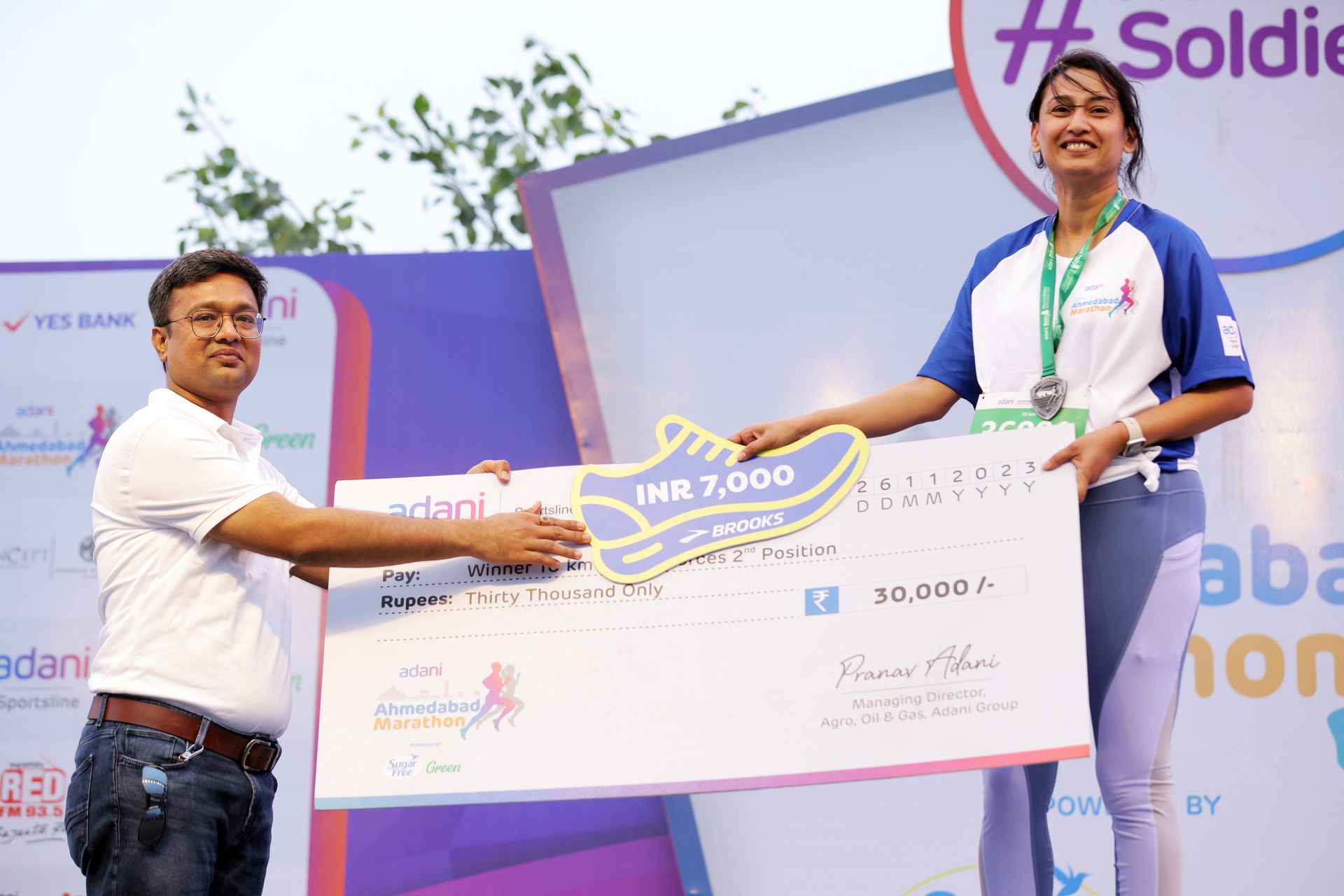
As the echoes of cheers linger, the Adani Ahmedabad Marathon 2023 stands as a testament to strategic brilliance, meticulous planning and the empowering spirit of a united community.”
achievement
World Record For Mumbai Airport!
Diwali 2023 got even bigger for Mumbai’s CSMIA as it set a new global mark.
Prakash Tulsiani
Airports are gateways to cities, states and nations. They play a vital role in connecting people. It is a combination of hospitality and aviation, blended together for passenger comfort and curating seamless travel experiences.
More often aviation is synonymous with the awe-inspiring aircraft that soars through the skies or the architectural marvels of a brilliantly designed terminal. However, behind every successful flight lies an unsung hero – ‘The Runway’. This serves as the lifeline for air travel, ensuring safe takeoffs and landings.
Like terminal capacity, runway capacity is crucial for airports as it directly influences operational efficiency and overall air transportation. Sufficient runway capacity, along with the capacity to accommodate all types of aircraft and future needs, enables airports to accommodate a higher volume of aircraft takeoffs and landings, reducing delays and enhancing the flow of air traffic. This is vital for meeting growing passenger demand, optimising airline schedules, and ensuring the economic viability of both the airport and the aviation industry.
Safe, secure, and efficient operations are the cornerstones of Mumbai CSMIA's (Chhatrapati Shivaji Maharaj International Airport) operating philosophy. Over the years we have tirelessly worked with our partners — the Ministry of Civil Aviation (MoCA), Airports Authority of India (AAI), airlines, CISF, Immigration, Customs and Ground Handlers — to identify opportunities to enhance the efficiency of our operations and initiatives around enhancing runway capacity.
The record-breaking movement of 1,032 Air Traffic Movements (ATMs) has been a journey that required a two-pronged approach - Strategic and Tactical. There are also many variables like weather that we cannot control but for which we build resilience into the system.
At a tactical level, the rigour of maintaining the integrity and functionality of a single runway and meticulous planning to minimise downtime is the holy grail. As an airport operator, it is about how we orchestrate the moving parts, while resolving conflicts and bringing together the various stakeholders to achieve this common objective. This ranges from providing the right mix of aircraft in terms of slots, stand allocation, etc., so that the Air Navigation Service Provider (ANSP) can minimise the holding times. At CSMIA, it is our belief that the health of the runway is our license to operate, and we are custodians of a world-class aviation asset.
The record-breaking 1,032 ATMs handled in 24 hours was achieved on 11 Nov 2023, and 1,61,760 passenger movements were recorded on 18 Nov 2023, which is the highest number of passengers seamlessly handled in a single day at CSMIA. This is a great example of how all the stakeholders came together as one cohesive unit.
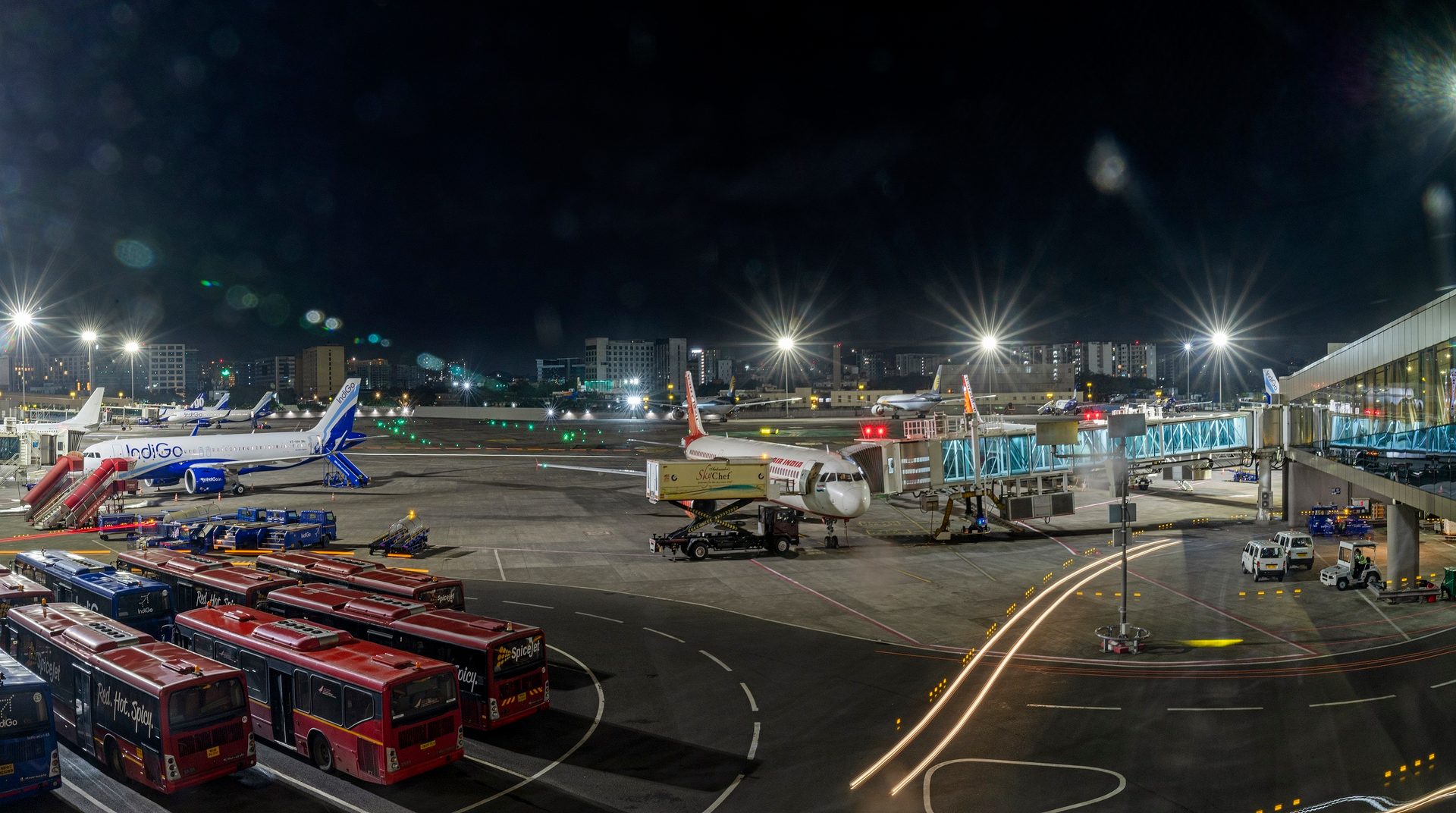
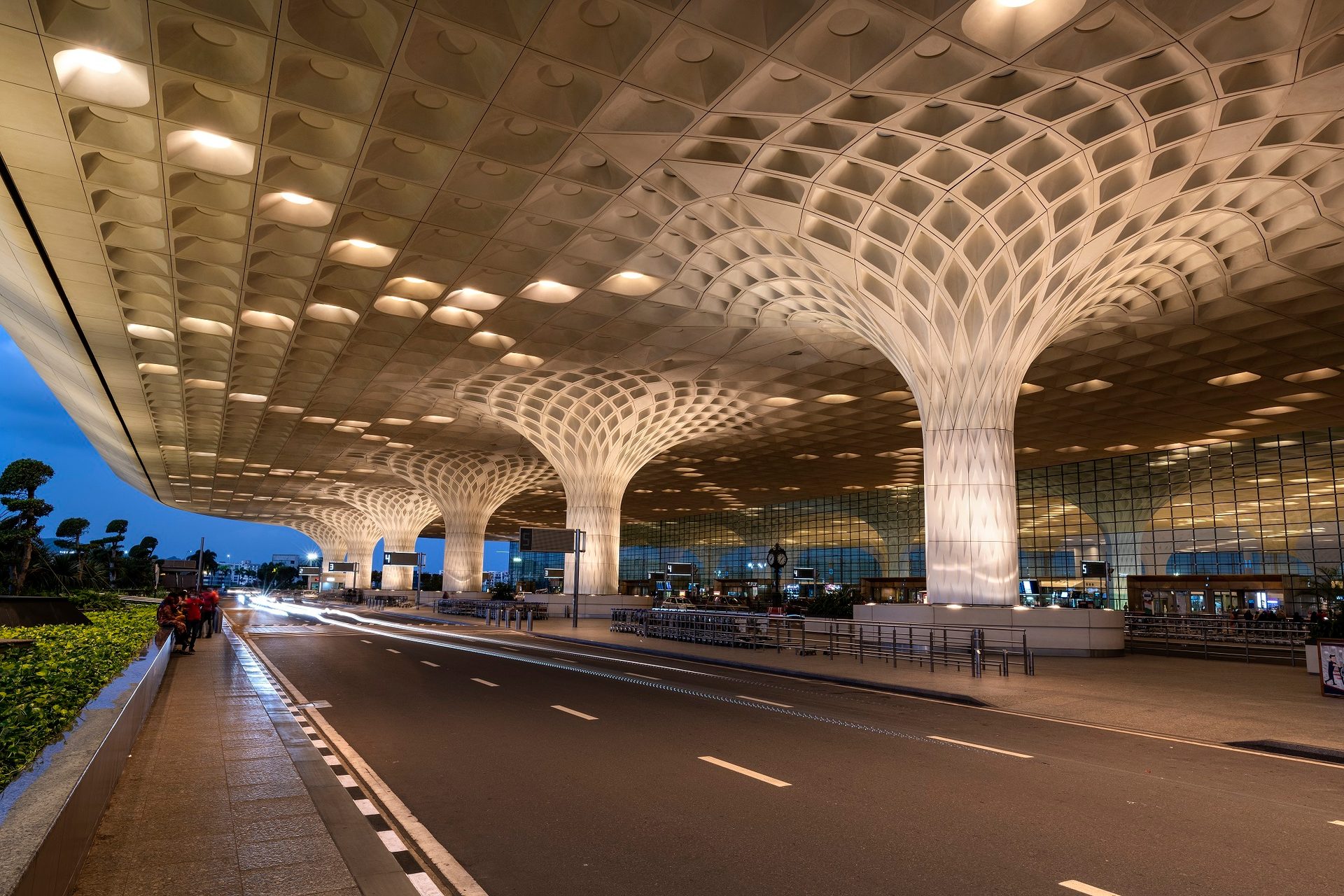

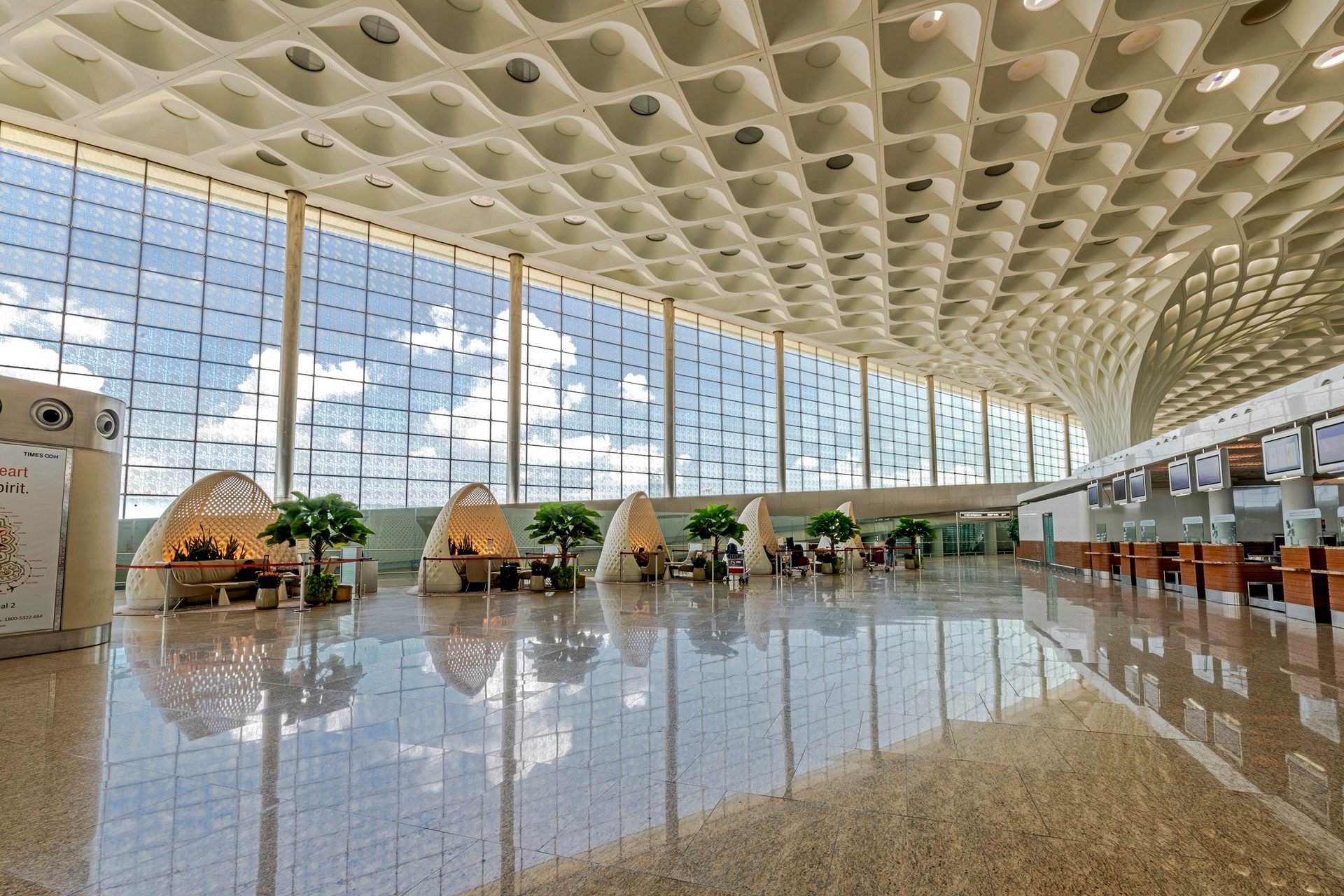


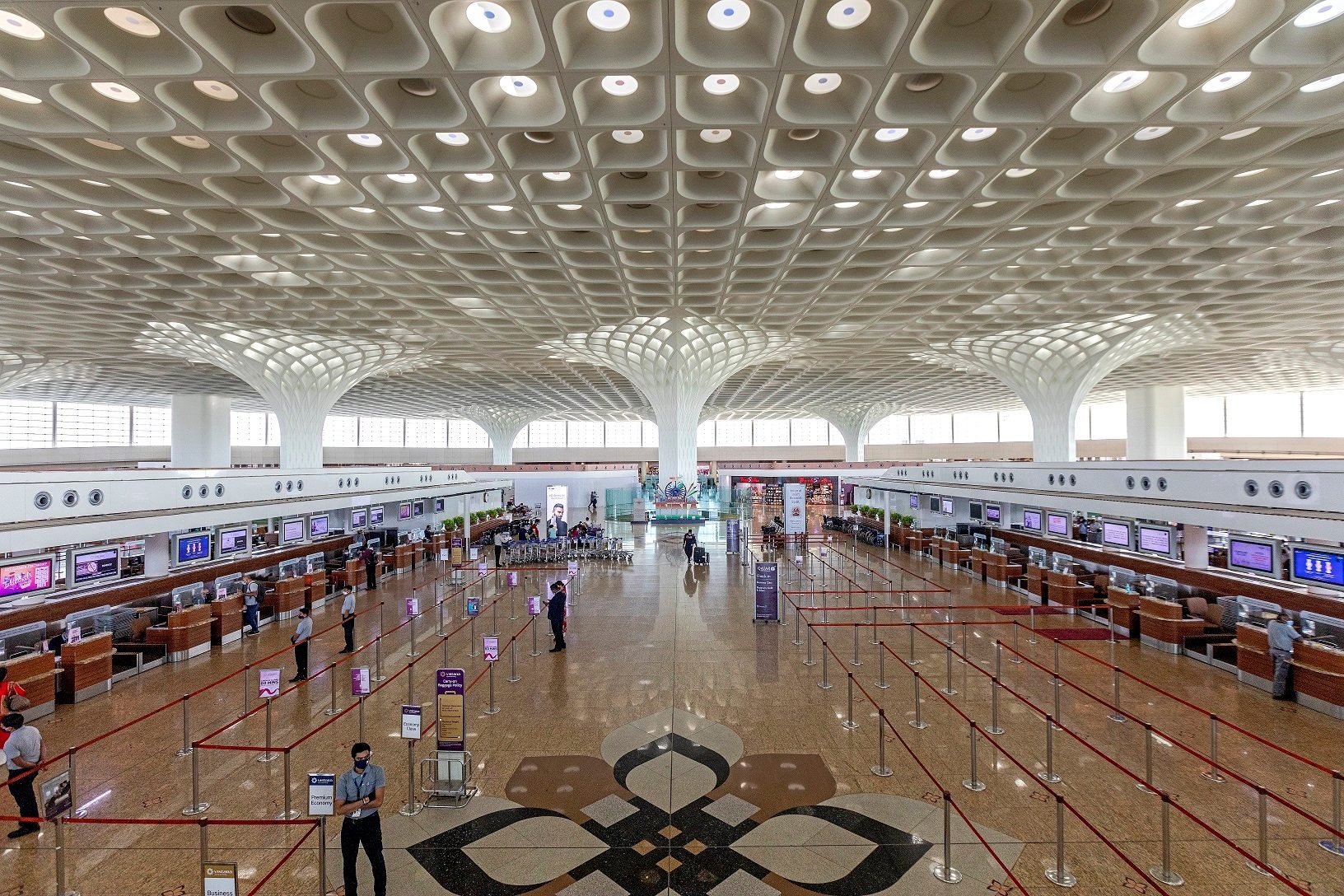


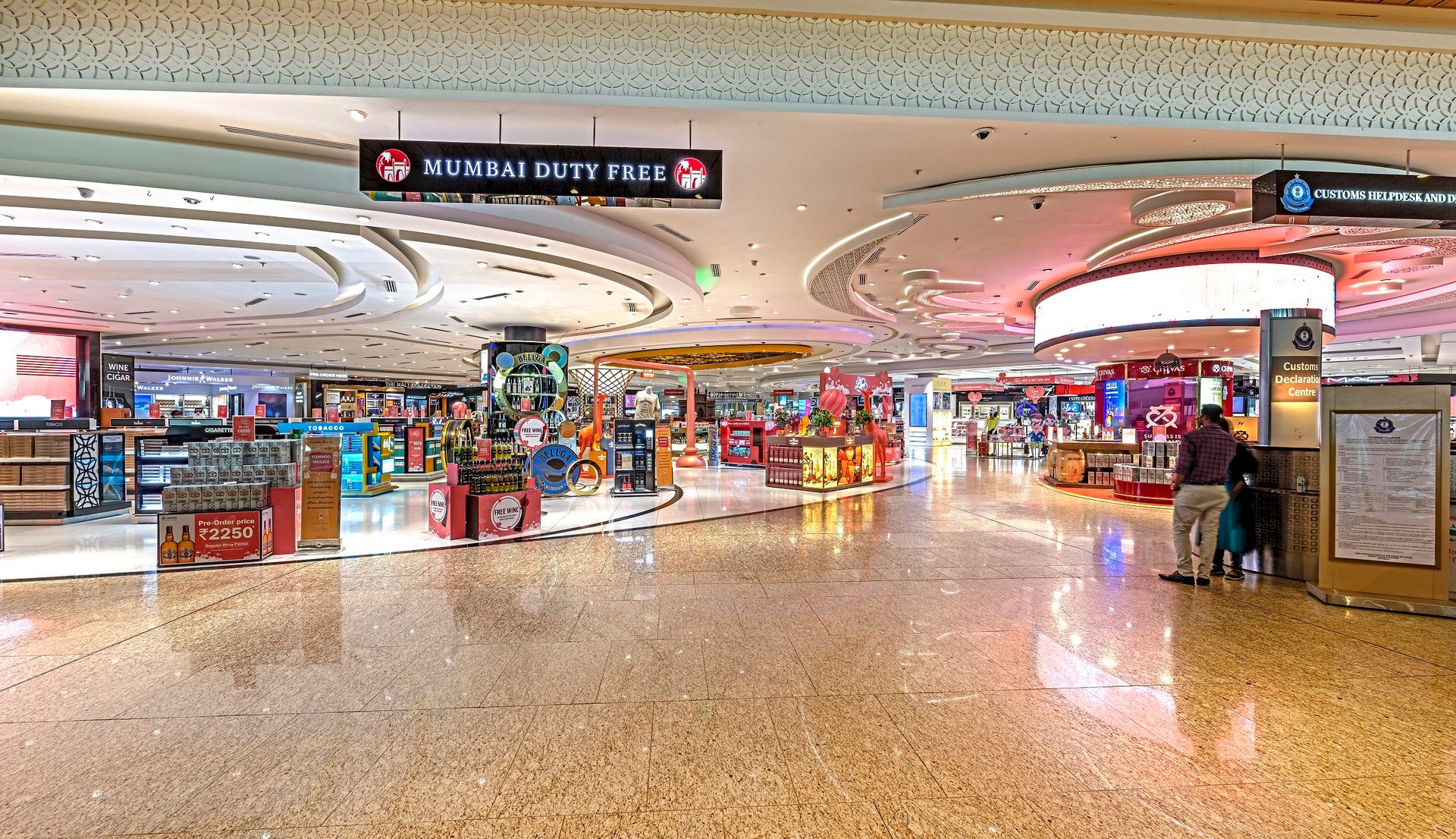
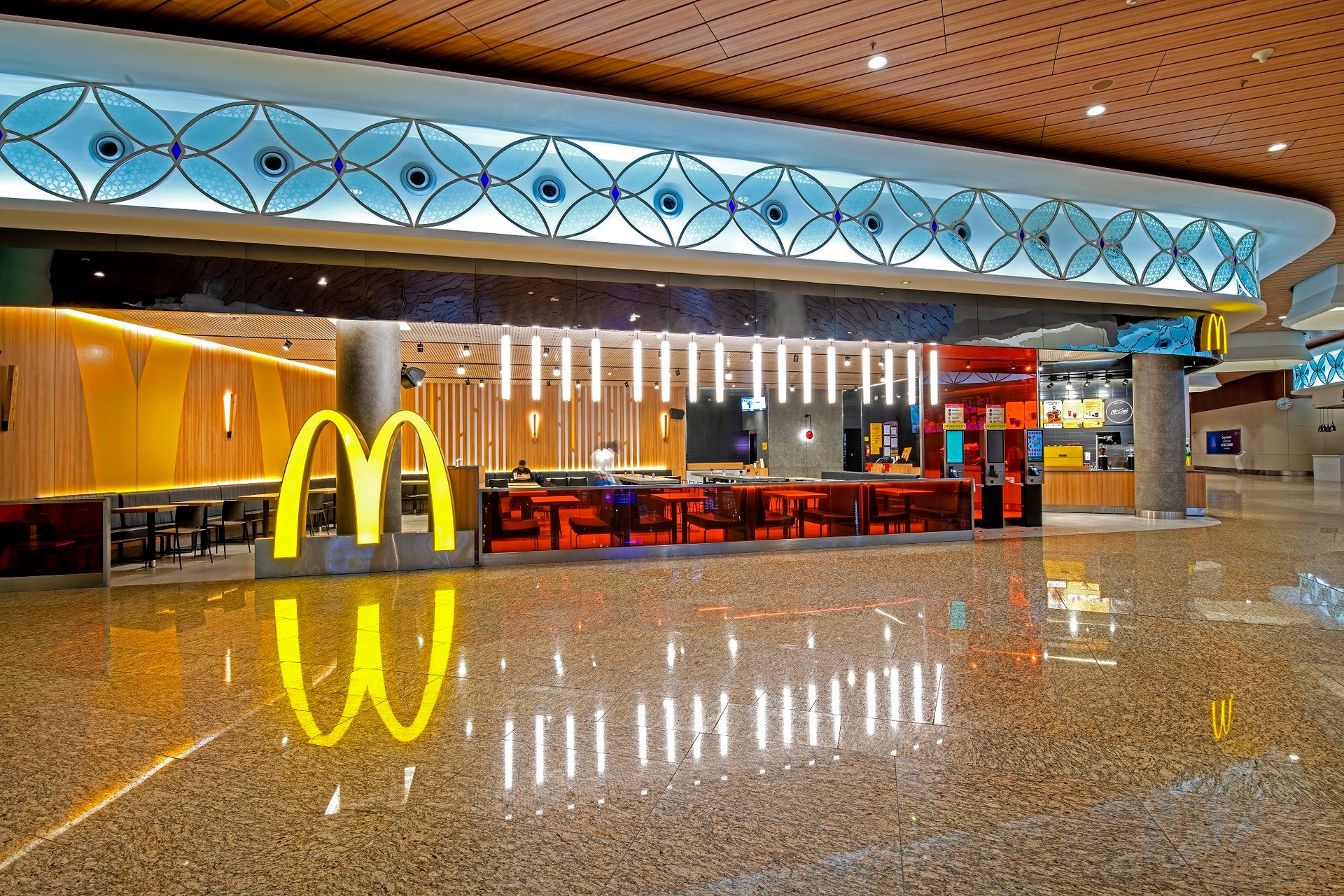
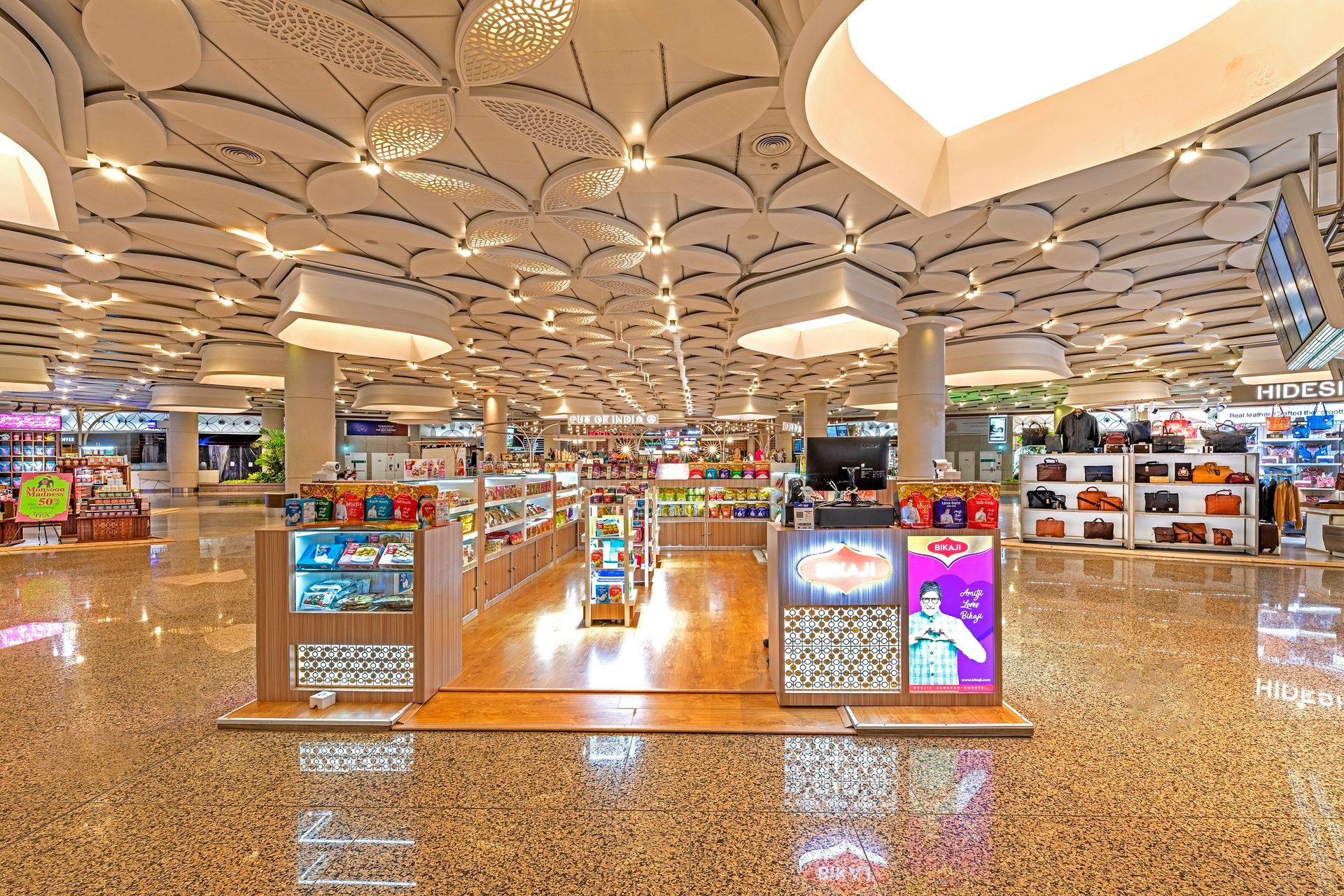

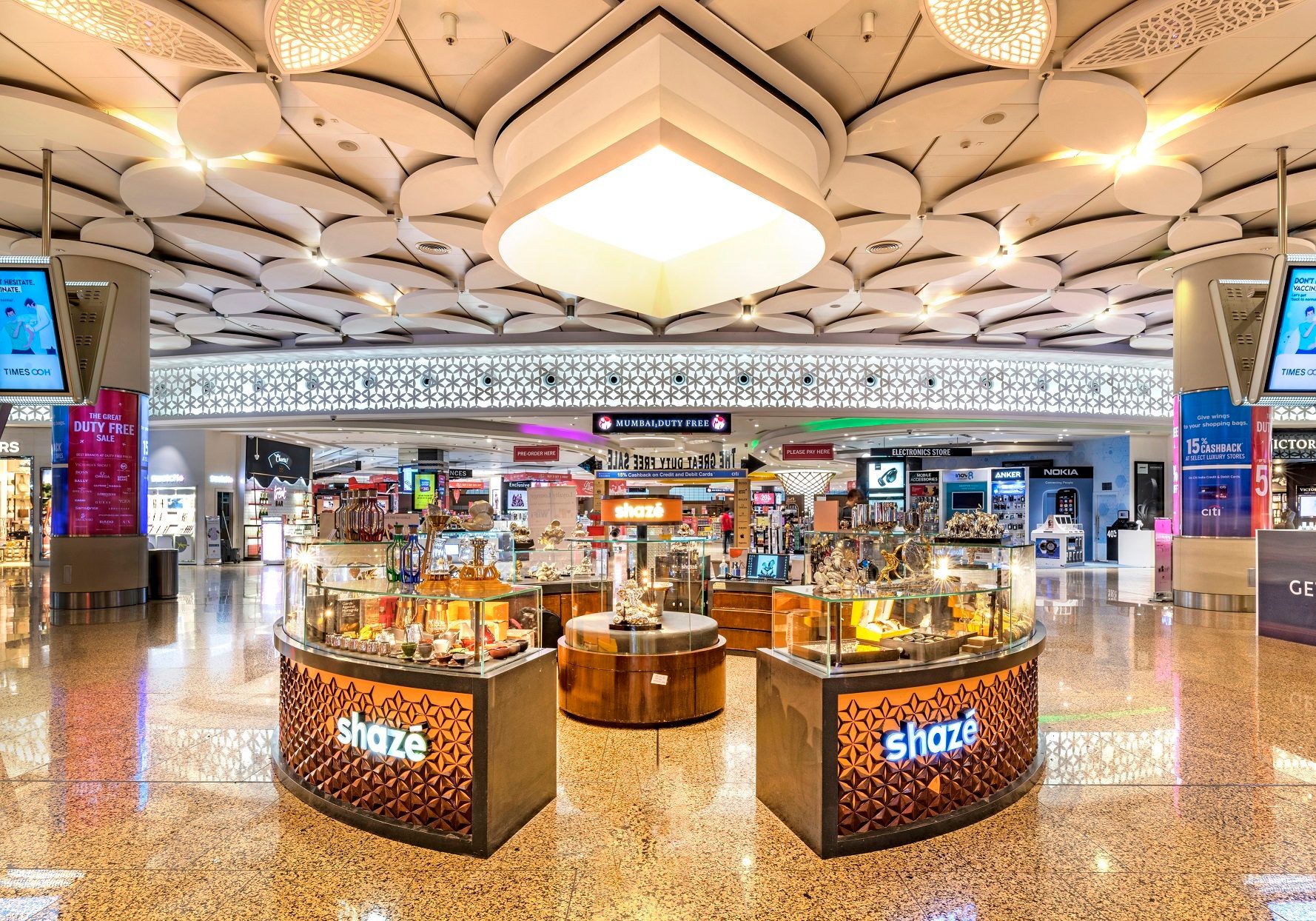
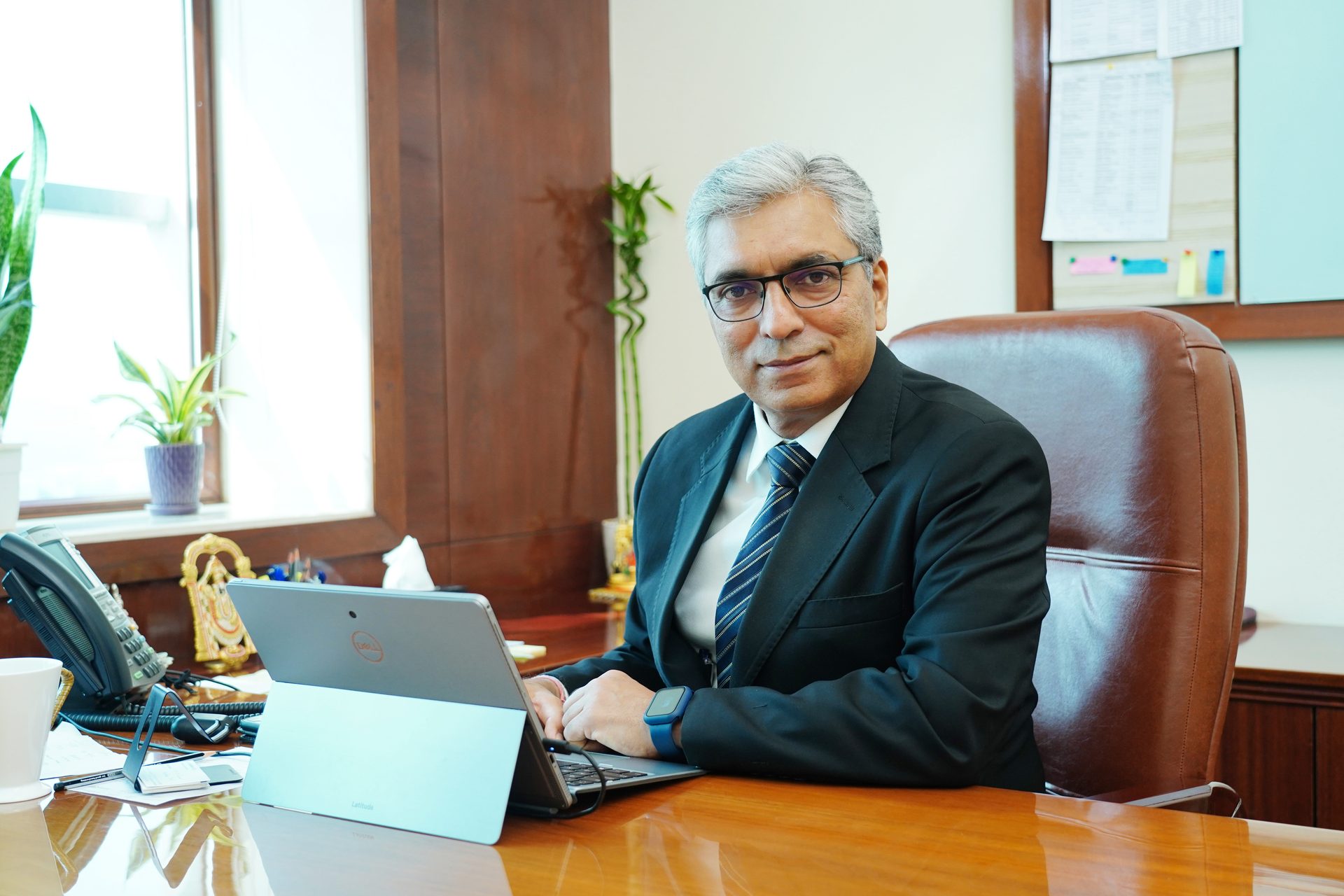
The record-breaking 1,032 ATMs handled in 24 hours was achieved on 11 Nov 2023 and 1,61,760 passenger movements were recorded on 18 Nov 2023, which is the highest number of passengers seamlessly handled in a single day at CSMIA. This is a great example of how all the stakeholders came together as one cohesive unit.”
Strategically, many enhancement initiatives were also rolled out where digital solutions combined with robust operating procedures were catalysts to enhance efficiency.
These milestones reflect CSMIA’s capability to handle increased air traffic with precision while maintaining high standards of safety, security and passenger service. As a testament to our dedication, CSMIA continues to prioritise safety, efficiency, punctuality and passenger satisfaction, ensuring that every journey through our airport is a journey of reliability and excellence and a fulfilling experience. ●
The writer is CEO of CSMIA, Mumbai.
economic summit
“India needs more sustainable infrastructure.”
Karan Adani’s address at the Republic India Economic Summit in New Delhi on 5 Dec 2023.
Iwas listening with pride as, one after another, our distinguished speakers set about unveiling the vision of a future, robust India – the dynamic drive to ‘sustain the dream run’ that has planted our nation’s flag firmly on the world stage.
India is no longer the India of the past.
It is an India that millions of people are building.
It is an India that relies on both the public and private sectors.
It is an India that is
- more digital than much of the world,
- more connected than much of the world,
- more productive than much of the world,
- and more confident than much of the world.
It is an India
- that has gone global,
- that has gone to the Moon,
- and is now on its way to the Sun!
Today’s India is an economic powerhouse on the move.
Today’s India is carrying millions and millions of hopes, dreams and aspirations.
It is an India, growing and accelerating like never before, that we too are, in our own humble way, helping to build – and I say this with great pride in speaking for an Indian company.
The past decade has been an amazing period. India is building all that we need – rural housing, highways and expressways, high-speed rail networks, high-speed digital networks, smart grids, smart classrooms, smart cities – India has pulled millions out of poverty, trained millions of our young people, created millions of jobs, extended healthcare to millions … our nation’s amazing achievements are as massive as they are innumerable.
With India climbing every peak it wants to – and with the world increasingly looking to India, we must ask ourselves: What more do we need?
The answer to this question is Infrastructure.
To be precise, India needs more sustainable infrastructure.
To illustrate this need, let us consider Europe’s largest seaport, the Port of Rotterdam in the Netherlands. For over 400 years, from the 15th to the 19th centuries, it was largely a fishing port. Then, it turned into a commercial port to serve the trade needs of the Dutch colonial empire. In the early 20th century, it again adapted to the changing needs of the world by adding bulk transshipment and petrochemical facilities. The big change in approach came after the Second World War, when the port’s planners began building new infrastructure with an eye on the distant future. They did not build it to serve just the needs of their time. Instead, they chose to build sustainable infrastructure with a shelf life of several generations. Someone, over 60 years ago, certainly made the right decision – as this example of sustainable infrastructure from the 1960s continues to be one of the busiest ports in the world.
Over the past 76 years, our nation has been building our post-independence infrastructure – the fundamental social, economic and technological structures and facilities that our people need. While our early infrastructure served our early generations well, they soon proved to be inadequate for our growing nation. With few exceptions, they were not built to meet our rising needs.
By the time we came to terms with what the world was doing, it was already being replaced by something better – and then, we found ourselves stuck with sunset industries and technologies – or, in other words, we always found ourselves a generation behind the developed world.
Over the past decades, some bypasses did fortunately come our way. For example, we leapfrogged over several generations of large and expensive computers when we went from physical notebooks to notebook computers – and, similarly, we scaled up from landlines to 4G and 5G, and from simple weather balloons to extremely complex lunar landers, in a very, very short time.
Fortunately, things have changed in the last decade. Our planners have embraced the idea that when we build infrastructure today, we must think of tomorrow. Yes, we must ask ourselves: Are we building for now – or are we building for 50 or 100 years from now? What is the time horizon we are aiming for? Or as Professor Ram Charan puts it: What is the shelf life of our infrastructure?
For instance, if we see electric mobility and electric vehicles as a standard part of life in the future, we should prepare for that eventuality. The sustainable infrastructure for such a future is not merely about setting up plenty of EV charging stations. It is about embedding all its current and potential requirements into our power and transport networks right now, so that the infrastructure we are building now will have the capacity to shoulder the demand two or three generations from now.
Similarly, we are already seeing the potential of Artificial Intelligence to drastically alter every aspect of our lives. There is no doubt at all that AI is all-pervasive and is manifesting itself in millions of ways – in search, in games, in education, in research and analysis, in creative art, in autonomous mobility, in driverless transportation, in drones and warfare, in medicine, in robotics, and even in personal counselling. No sector will be safe from disruption – and nor will any nation be immune to it.
India too cannot afford to overlook these dizzyingly fast advances in technology. As infrastructure builders, we have no alternative but to make sure that we leave room to accommodate the demands that this massive expansion in capabilities will place on our nation in the years ahead. If we are to stay abreast of the world – or, even better, get in front of the world – sustainable infrastructure should today be the top thought on our minds.
And, it is – and has always been – the top thought on our minds, at the Adani Group. Building infrastructure is what we have been doing — and building sustainable infrastructure is our priority.
Our transport vertical, Adani Ports and Special Economic Zone, is on its way not only to be carbon neutral just over a year from now (by 2025) but also to be the world’s leader in sustainable ports-and-logistics infrastructure. In energy and utilities, in airports, in gas, in every area of our operations, we are building sustainable infrastructure for a robust India – the essential foundations that India of the future will need and can rely on.
A very relevant example here is what we are doing in renewable energy – where we are building a future-ready mega source of clean power, fully aligned with India’s climate change goals. Adani Green Energy, which has one of the world’s largest renewable energy expansion programmes, is now building the largest hybrid renewable energy park in the world – a city-sized solar-wind layout, right in the middle of the Khavda desert. When completed, it will generate 20 GW of clean, green, affordable energy – for India.
Our vision goes beyond just the massive scale. We also aim to be the most cost-effective and most efficient at that scale, which is why, for instance, we incorporated robotics into our operations from Day One.
Today, we are leading the nation’s energy transition march. We are now Single-Use Plastic free – and the airports we manage are running on 100% renewable energy. In fact, on this Diwali, we powered over 3 million homes and businesses in Mumbai with just renewable energy for four hours. Our focus is on creating and operating sustainable infrastructure for generations to come, while having the least impact on the environment.
As India strides towards becoming a global economic powerhouse, the need for sustainable infrastructure is becoming increasingly critical. With our population set to exceed 1.5 billion by 2030, the demands on our infrastructure will be as heavy as they are unprecedented. The World Bank says that our urban areas contribute about 70% of our GDP. However, traditional infrastructure development often leads to environmental degradation, resource depletion and social disparity. This is where we need the integration of environmental, social and economic considerations. This approach is not just beneficial – it is the only choice for a country like India. As Shri Bill Gates said earlier this year: “The question is whether we have the foresight to invest in our future now before it’s too late.”
While I agree that the journey towards sustainable infrastructure has many challenges, I would view those challenges as gateways to unprecedented opportunities – and as opportunities to innovate and rethink our approach to development.
The opportunity for India lies in leapfrogging traditional development pathways and adopting cutting-edge sustainable practices. This involves not just government policies but also grassroots innovations, community participation and corporate social responsibility. Simultaneously, we must enhance national awareness, ensuring that the concept of sustainability is ingrained in the public consciousness from a young age.
For all of us, the journey to building sustainable infrastructure for a robust India promises to be both exhilarating and challenging. It is an opportunity to redefine our nation’s trajectory – and it calls for a paradigm shift in how we perceive development, an integration of sustainability into the core of our planning, and a commitment to a future that is not just prosperous but also equitable and ecologically sound.
Looking at the new India – today’s India – I am happy to see that, in every sphere of development, the approach is increasingly telescopic, with focused attention to the future needs of our nation and our people. It is an approach that we, at the Adani Group, are totally aligned with – and, here, allow me to share our fundamentals.
Our approach encompasses all the three essential phases – planning, execution and operations.
In the planning phase, it is easy to fall into the old trap – of playing catch-up with the world, of planning a facility that will serve its purpose now but will become obsolete or insufficient in just a few years.
If we look back at India’s early infrastructure journey, it is all too obvious that our infra capacity was always in catch-up mode, always scaling up to get even with demand, instead of having planned for our capacity to overtake demand and leave it far behind.
The unfortunate fallout of playing catch-up for almost 70 years is that India is now having to invest more and more money to scale up or refurbish the old infrastructure. Roads, bridges, ports, airports, power plants, hospitals, colleges, rail lines – all have to be added, widened, rebuilt or upgraded – again and again – all the time. We have been continuously engaged in construction, not to get ahead but just to stay in place.
This has been a huge drain on our economy and it has taken away from the otherwise rapid pace of our nation’s development. Until a decade ago, we took the route that the developed nations took, a route that forced us to play catch-up for a long time.
Thankfully, this has changed – and India is now thinking ‘much more ahead’ and ‘much more audaciously’. We have to un-think ourselves out of planning for just the next 5 or 10 years – and we have to begin thinking of meeting the demand of the next 30, 40 and 50 years at least. We should be looking at what we will need several generations ahead – and build it now. We must find ways to ensure that, once we have developed the infrastructure we need, we do not need to re-do it frequently or scale it up continuously.
We can avoid such pitfalls by choosing integrated planning, where we view an infrastructure project holistically, rather than as a standalone facility.
For example, you can build an airport whose survival depends on the existing infrastructure that is always catching up to demand – or, with integrated planning, you can build an entire airport ecosystem, like Singapore did with Changi Airport, with networked expressways and connecting roads, rail and metro systems that link to the city and its suburbs, trade hubs and commercial parks that mesh with the airport, hotels and amenities that can handle the ever increasing passenger traffic, airline support, cargo enclaves, technical services … and so on.
When developing this ecosystem, it is important that we assimilate and incorporate local elements. For example, Mumbai Airport is a curated showcase of local art. The Bharat Mandapam is a culture corridor that brings to life a rich tapestry of traditions. When we integrate local art, local culture and local architectural elements – whether into massive structures or even simple structures like toll booths or perimeter walls – it sparks a cultural rejuvenation that brings back our pride in being Indian.
Looking overseas, the American Interstate Highway System is a good example of integrated planning. The current highway system is almost 70 years old – but not only is it serving its planned purpose but it has revived local pride all along its length and also seeded the United States’ post-war economic boom. I do not know if they planned a shelf life this long but they certainly didn’t plan for 2 years or 20 years. It is interesting that its current length of close to 80,000 km is actually the length the original planners wanted – way back in 1918 – over a hundred years ago!
Not only does integrated planning take care of your current needs but it also takes care of your future needs – perhaps even for a couple of generations ahead.
I must say that integrated planning has worked very well for us too. I was just a young boy when our Chairman, Shri Gautam Adani, began building Mundra Port in the 1990s. Even though demand for port services in Mundra was tiny at that time, he sought approval for a waterfront length of 40 kilometres. Why? – asked everyone. They all thought it extremely audacious, since the 40-kilometre-length he had requested was 4 times that of the waterfront of India’s largest port at that time.
Today, the answer to that ‘why’ is plainly visible. He asked for it because he was thinking ahead – yes, ‘audaciously’. He asked for it because he believed, as strongly then as he does now, in the India growth story – and he knew that, one day in the not-so-distant future, Mundra Port would need that length of waterfront to accommodate our nation’s growth. Thanks to his early vision of sustainable infrastructure, Mundra Port is now not only the largest port in India but also one of the fastest-growing ports in the world with a vast variety of industries within the port’s integrated ecosystem.
The third vital element in planning is inclusiveness. Are we building for everyone or are we being selfish and restrictive in our planning? I believe it is very important – and also the right thing to do – that we be as inclusive as possible when building infrastructure. We must not assume that women, children and differently-abled people will automatically benefit from new projects – we must consciously plan for their needs, be it access ramps, assisted safety features, recreational spaces or other inclusive facilities. Only then will it be sustainable infrastructure.
In the second phase – that of execution – integration and scale are as important as they are in the planning phase. Sustainable infrastructure goes hand in hand with the quality of execution and the scale we have planned for. It is not simply about large corporates executing large projects but more about how we are simultaneously training and imparting skills to a great number of people, how we are creating more and more qualified vendors, how we are enabling the growth of a vast pool of SMEs and MSMEs, and how we are making all of them part of the whole supply chain and the value chain.
Also, we often tend to overlook the impact of a project on the surroundings – and in this era of volatile climate change, we cannot afford to do so. When executing a project, we must ask ourselves: Are we being environmentally conscious? Can we use sustainable materials? Can we use renewable power? What more can we do to harmonise our presence with the local ecosystem? Infrastructure projects usually cause at least some disruption in the local community. Integrated execution can minimise – or even avoid – this disruption by bringing in the local community as stakeholders in infrastructure creation. This sustainable approach allows them to become custodians of their own development.
One towering example of integrated execution is the Statue of Unity – the world’s tallest tribute to a statesman – our own Sardar Vallabhbhai Patel. It’s fascinating how comprehensively the project has integrated the local community into its execution – so much so that every aspect of the operation is now in their hands. Truly, the local people have become the custodians of their own development.
This also spans the third phase – that of operations. Infrastructure that is built sustainably must also be run sustainably. The challenge here is about dealing with change – the great waves of change that wash over industry, technology and, indeed, over just about everything. It is an endless loop. The only way to deal with change is to welcome change. This calls for constant improvement and continuous upgrading – of the skills, of the technology and of the processes that enable the project to sustainably serve the nation and the people beyond its expected lifetime.
Finally, no discussion of sustainable infrastructure would be complete without addressing the financial challenges. History tells us that 70 to 80% of infrastructure companies fail because they lack the right financing structure. I find it quite strange that financing arrangements for infrastructure are spread over only 5 to 10 years when the concession periods usually stretch beyond 30 or 40 or 50 years. This is a seriously crippling mismatch. I believe this strongly indicates a larger need for India to develop its own long-term bond market and long-term financing environment so that Indian infrastructure companies have access to stable, long-term capital.
Today, the India growth story is such that we can not only build at the scale and size of any country but we can also outdo them and leapfrog over their growth paths. I believe that we have the drive, the potential and the environment to become the standard for the world to follow. Over the next 20 or 30 years, we have the opportunity to create sustainable infrastructure – both physical and digital – at a level the world has not yet seen.
I believe that India is the place to be – both now and ahead. I believe that if we work together, we can build an India that leads the world.
I thank you all for giving me your time and I also thank Republic Media Network for this opportunity to be heard.
Thank you. ●

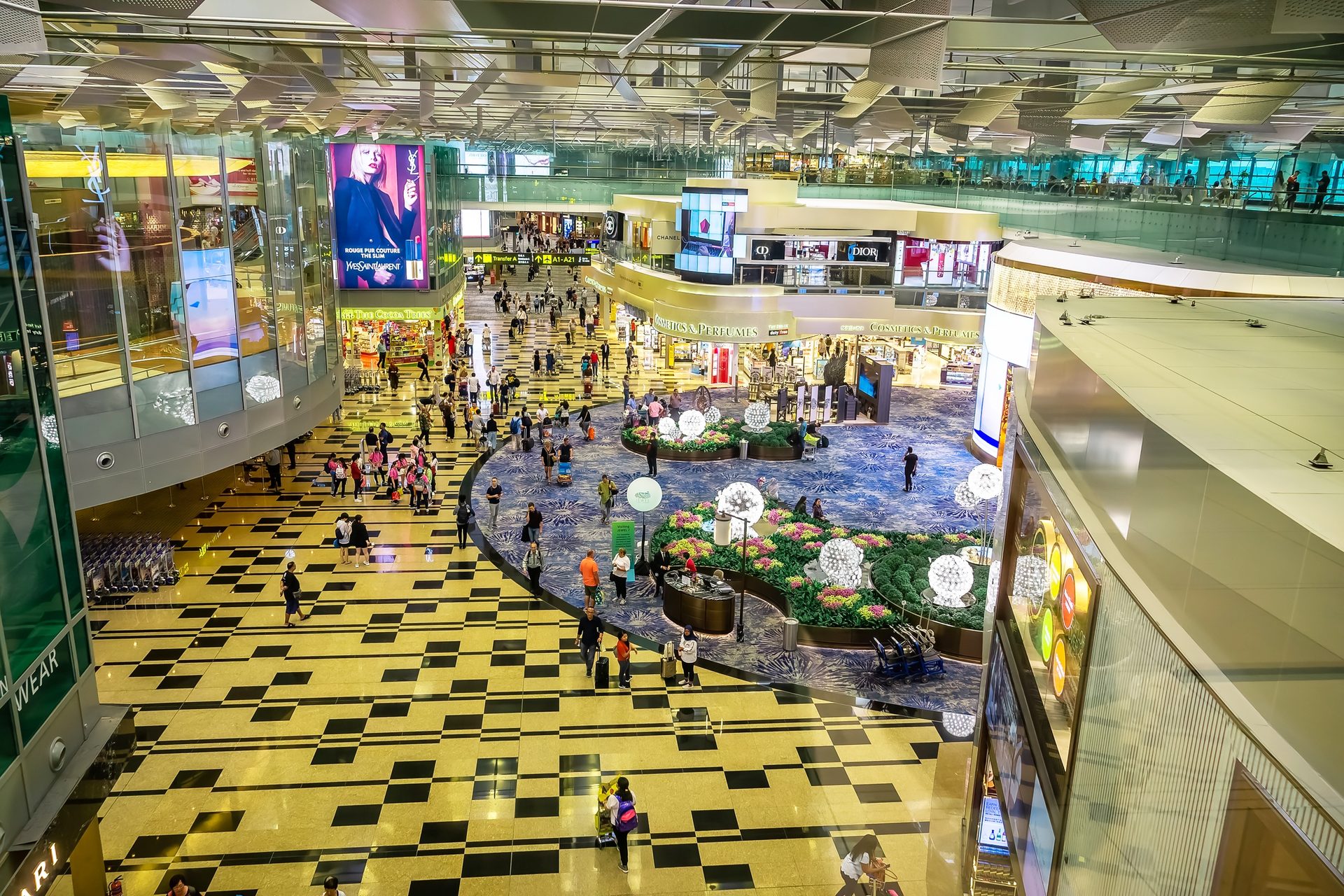
In Pursuit Of Excellence
With a blueprint for business excellence and innovation, the Group is embracing change with an integrated approach towards operational prowess.
insights
Sachin Kumar Garg
Under the visionary leadership of our Chairman Gautam Adani, the Adani Group has undergone remarkable growth, solidifying its stature as India’s leading diversified business portfolio. Whether navigating new ventures, fostering growth, or managing well-established entities, our businesses encounter daily and long-term challenges. Resolving these challenges demands improvement, innovation, benchmarked best practices, and above all, an integrated change management approach to sustain elevated levels of performance.
While there are established change management models like the ADKAR Model and Lewin’s Change Management Model for specific processes and initiatives, business excellence models play a pivotal role in organisation-wide change management.
Two prominent models, the EFQM Model and the Baldrige Excellence Framework, stand out. The Baldrige Excellence Framework, more functionally oriented than the EFQM Model, encompasses six enabler categories and one results category. With its built-in change management methodology (ADLI), focusing on Approach, Deployment, Learning and Integration, it offers a comprehensive approach.
The Adani Group has embraced the Baldrige model as the Adani Business Excellence model, emphasising operational excellence, digital transformation, sustainability, cybersecurity, risk management, crisis management, and agility. This non-prescriptive model can be deployed across diversified industries in which we operate. The implementation starts by identifying organisational priorities or challenges worthy of resolution.
The Adani Business Excellence Group has crafted a distinctive 4-step (Aadhar, Aarambh, Ati-Uttam and Ati-Shresth) integrated approach to deploy the Adani Business Excellence Model, progressively advancing toward a 1000-point maturity.
Organisations can conduct ABEM assessments independently (self-assessments) or enlist independent assessors, such as when applying for an Adani Business Excellence Model Accreditation, to gauge their progress. The goal is continual improvement, addressing opportunities for enhancement and learning from high achievers’ best practices.
To foster the exchange of best practices within the Adani Group, the Adani Business Excellence Group introduced the Bi-Annual Adani Knowledge Mall in Sep 2023, receiving nearly 1,000 nominations at the business unit level. In Oct 2023, the Group introduced group-level capability-building programs, with 1,000 employees and managers nominating themselves for Lean Six Sigma, QC, Benchmarking, Innovation, Reliability Engineering, etc.
To explore external best practices, we provided free ASQ memberships to all 40,000+ employees, with 1,000 already accessing these practices, establishing the Adani Group as the largest active community of excellence worldwide. Accessible through the Adani Business Excellence Model Hub or the Adani Business Excellence Group Portal, these initiatives underscore the Adani way of Business Excellence, now implemented across various business units, serving as an integrated change model to expedite our journey towards 'Growth with Goodness'. ●
The writer is Head of Business Excellence at the Adani Group.
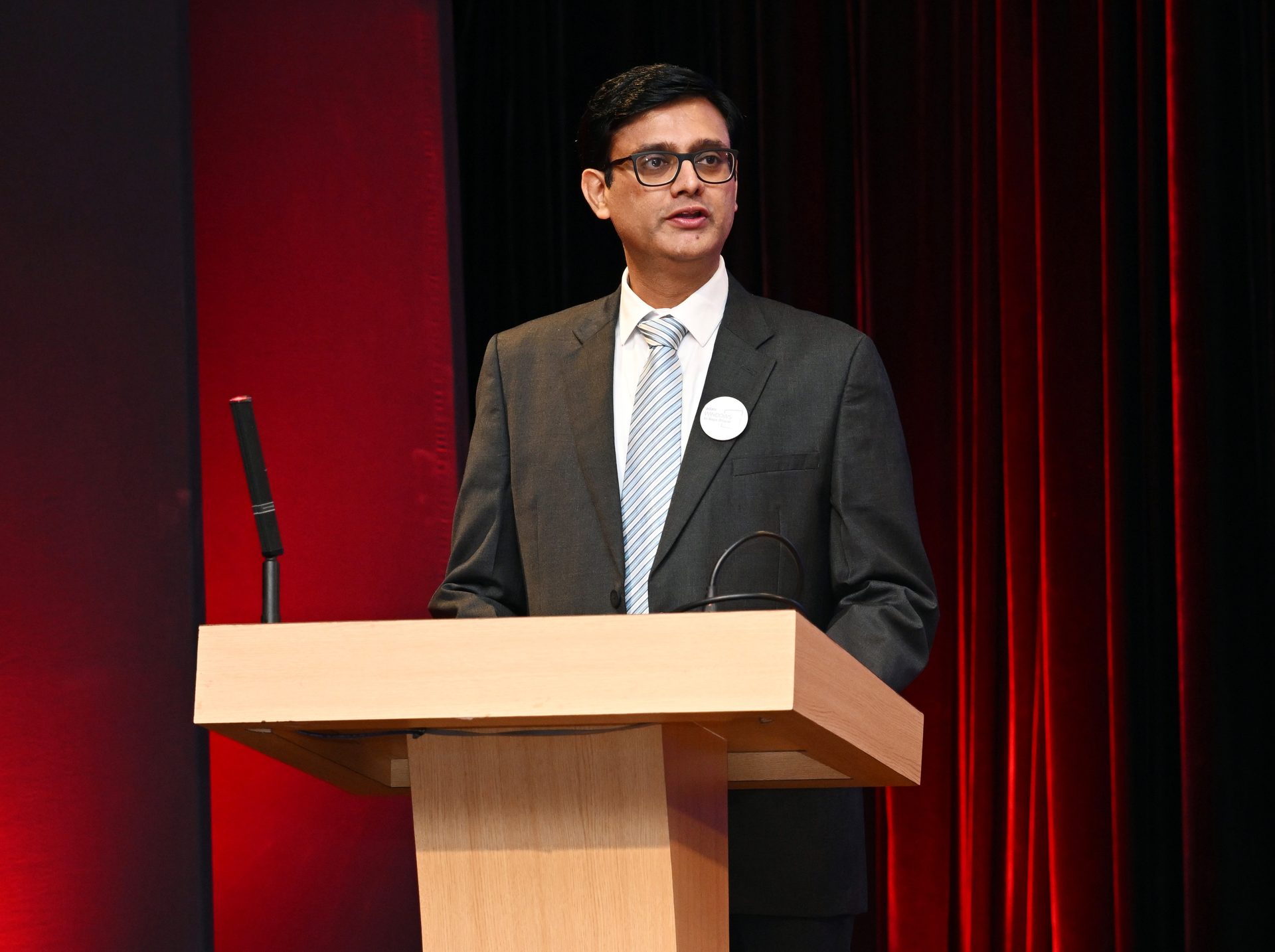
At Adani, we navigate the seas of change with a compass forged in excellence. Our journey, guided by the Baldrige model, is a testament to our commitment to operational brilliance, digital transformation and sustainable growth. We believe in an integrated change model, steadily advancing towards 'Growth with Goodness', ensuring that every challenge becomes an opportunity for excellence.”
Warriors Of Equitable Change
green talks
Adani’s ‘Green Talks’ has emerged as a unique platform to connect social entrepreneurship with climate-conscious innovation.
Dipika Rathi
T
he third edition of Green Talks, the uniquely engaging, interactive and stimulating Adani talk-series initiative, unfolded at the Adani Corporate House in Ahmedabad on 15 Dec 2023. A treasure chest of inspiring real-life stories awaited the attendees, showcasing noteworthy social entrepreneurs who have made a remarkable difference in society and the environment through their vision, hard work and resilience.
Setting the stage for the event, Sudipta Bhattacharya, CTO of the Adani Group, quoted Chairman Gautam Adani's words from 19 Oct 2021: “At the heart of any nation's sustainability journey lies the principle of equitable growth.
Mr Bhattacharya added that, in today’s world, the issues of climate change and social impact are intricately intertwined, and the pivotal term that connects these two realms is ‘equitable’. Nations aspiring to success must ensure that equity and fairness resonate in all decisions.
More than a talk show, Green Talks 2023 was a 360° experience, presenting social entrepreneurs with an opportunity to share their impact stories with a galaxy of dignitaries, including business executives and thought leaders such as Gautam Adani, Chairman of the Adani Group, and Dr Priti Adani, Chairperson of the Adani Foundation.
Green Talks, an evolution in thought from the haze of today to the clarity of tomorrow, has come a long way with focal points on innovation, Make-in-India, enlightening youth and bridging gaps. 2023 edition was indeed a powerful combination of talks, deliberations, real-life stories, networking and much more.
Recognising the impact creators, young leaders from around the country converged to showcase climate solutions and engage with senior leaders on the defining issue of our time. The audience was treated to inspiring stories from social entrepreneurs who are recycling, upcycling and repurposing resources.
The first speaker, Aniket Deogar, co-founder of Haqdarshak, showcased the first Indian social enterprise to digitalise welfare programs on a single platform. “People often find it tough to access govt welfare schemes. And so, we are on a mission to connect Indian citizens with eligible welfare services through our app and technology platform to make sure they get the benefits,” he said.
Piyush Jaju and his wife Shweta, the second set of speakers, illuminated the lives of rural India through ONergy Solar. Known for their last-mile access to energy, extensive after-sales service network, and high-quality products, ONergy Solar is a provider of decentralised solar solutions, making solar energy affordable and accessible to all.
Marut Drones’ CEO Sai Kumar, the third speaker, highlighted the innovative use of drones for mosquito eradication and other critical tasks. “Our aim is to create a range of drones for mosquito eradication, medicine delivery to remote areas, rapid reforestation and minimisation of manual labours for agricultural processes, among other things,” said Mr Kumar.
Honoured with the Biomass Energy Man of the Year Award, Lt Col (Retd) Monish Ahuja, the fourth speaker, spearheaded the Biomass Movement in India, harnessing agro residue potential for sustainable energy. He is the founder of Mumbai-based PRESPL (Punjab Renewable Energy Systems Pvt Ltd), which has been in business since 2011, that invests in machinery to pick up and process biomass, burns the biomass to produce steam, which is sold to process industries.
The event concluded with Gursaurabh Singh, founder of Dhruv Vidyut Electric Conversion Kit (DVECK), presenting a solution to transform an ordinary bicycle into an electric vehicle. “It only takes 20 minutes to fit a DVECK on a bicycle. When a user is connected to the app, the app can provide important information like GPS location and more. The kit’s unique selling point is that its battery can be recharged by pedalling, which means that as long as the cycle keeps pedalling, the battery will remain working,” Mr Singh shared.
Each speaker championed greener policies, influenced business behaviour and empowered communities to protect their health and livelihoods from climate devastation, aligning with the Green Talks philosophy of building equitable and sustainable solutions for social and environmental impact. The third edition of Green Talks truly showcased the indomitable spirit of those striving for a greener and more sustainable world. ●
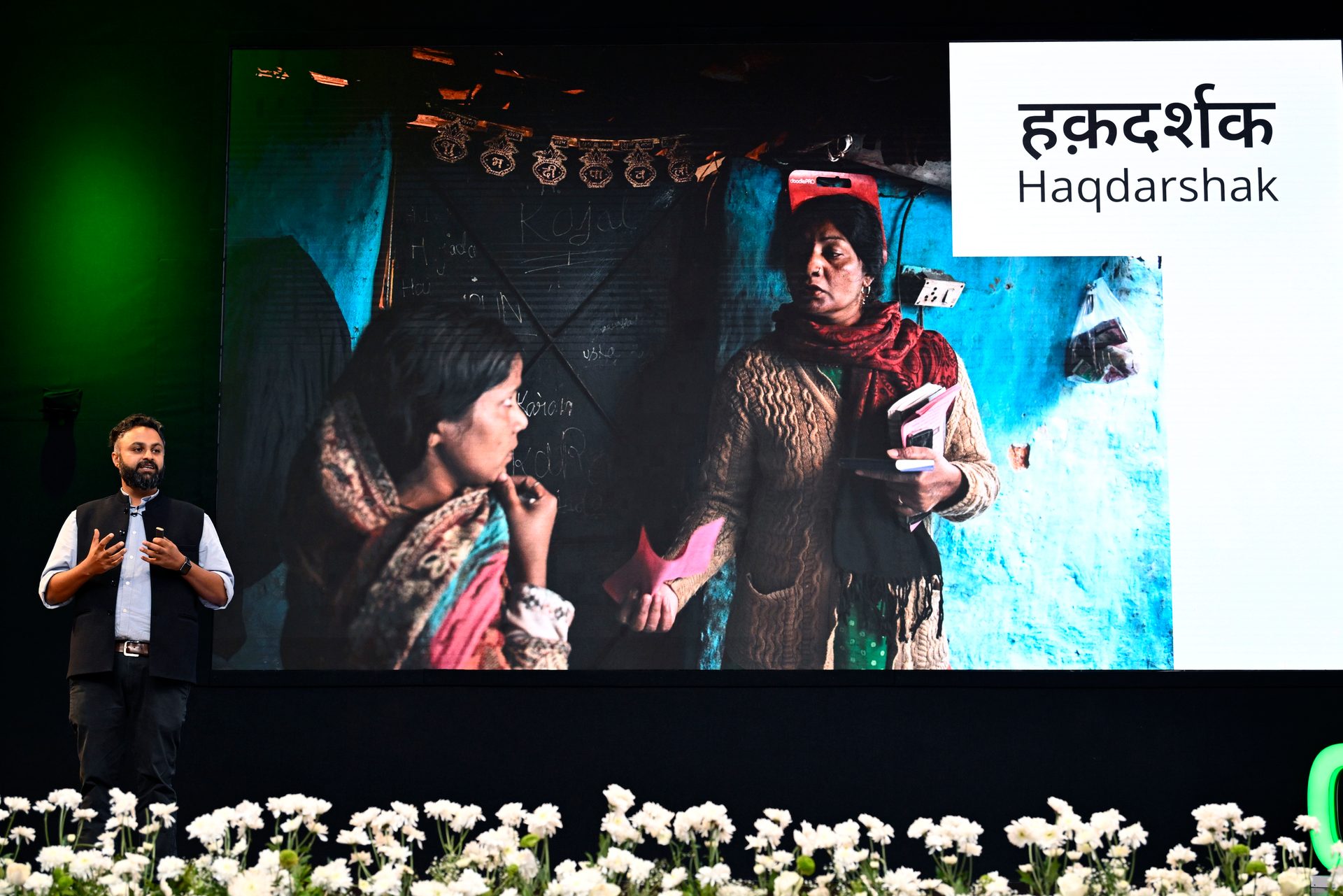
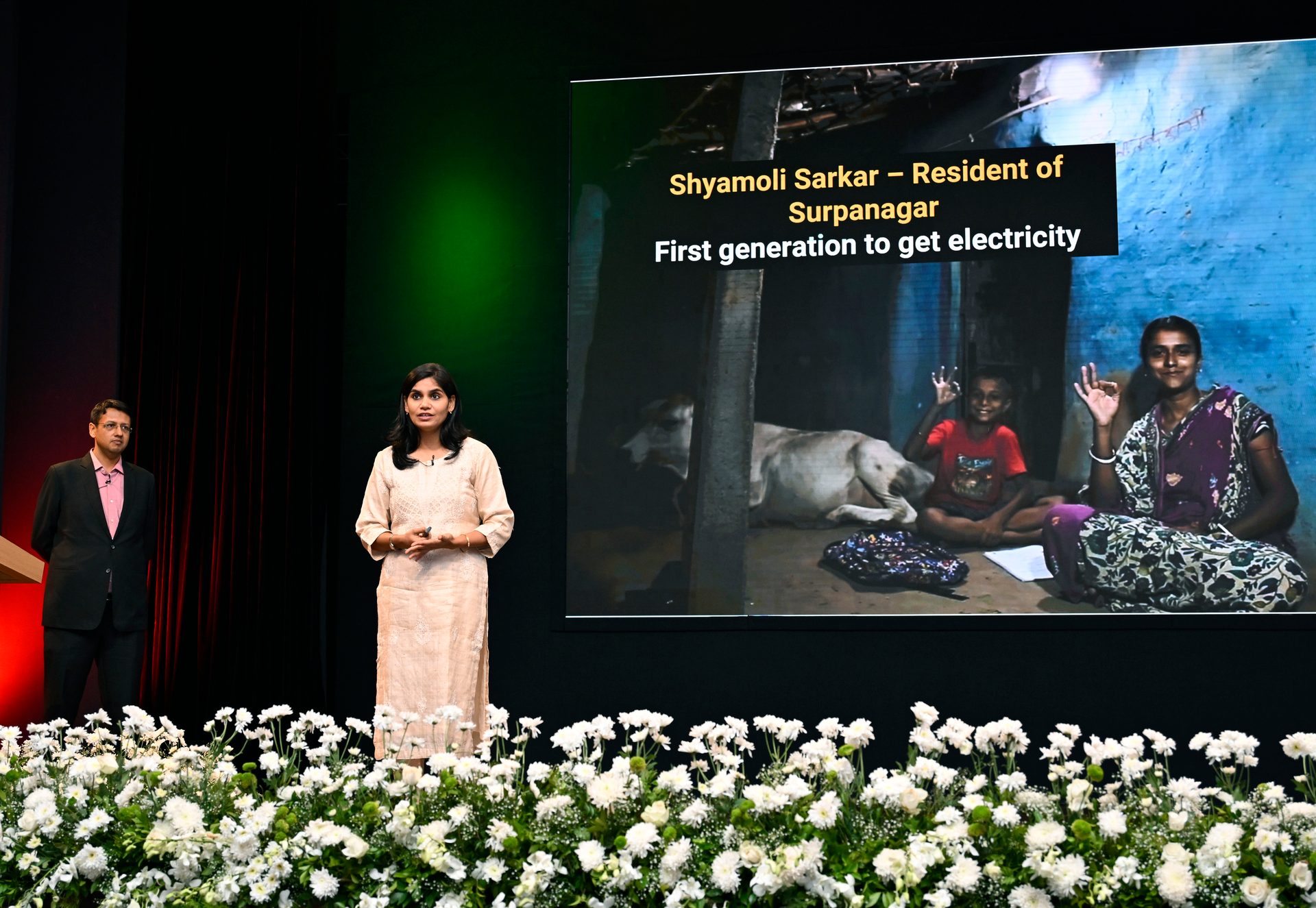
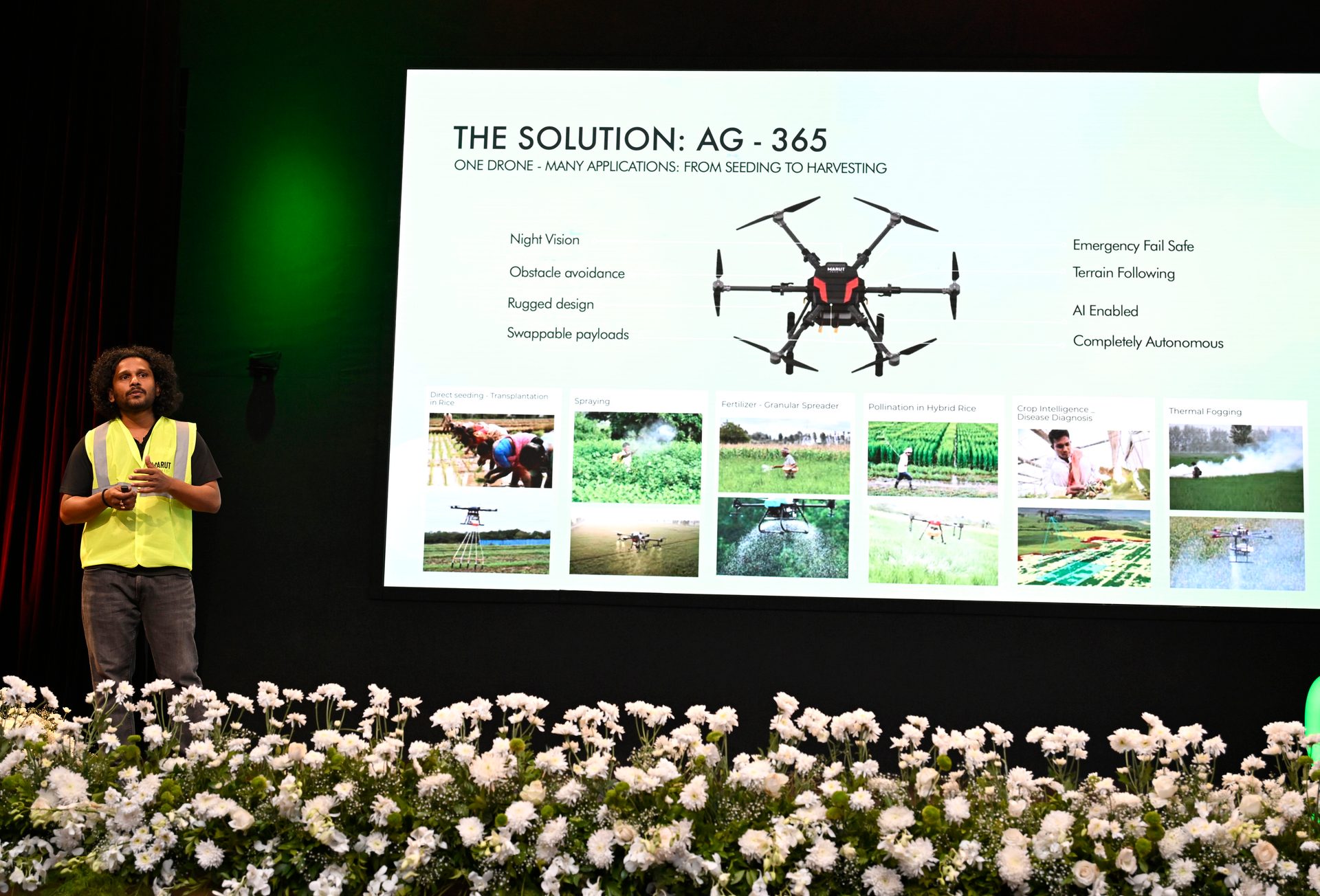

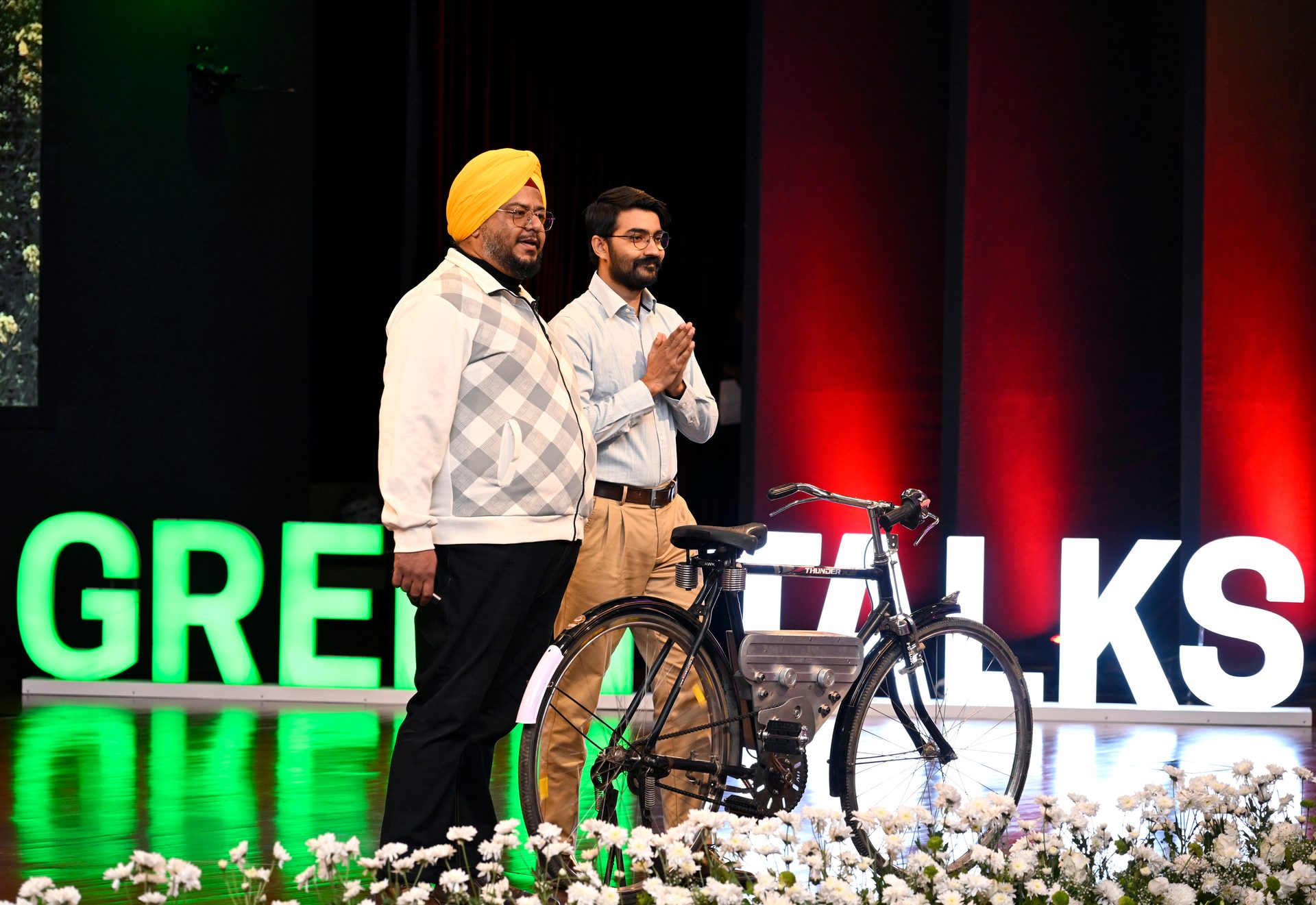
Celebrating Inclusivity and Resilience
GreenX Talks 2023
people
The Adani Group pledges to empower individuals with disabilities through GreenX Talks.
Sania Ahmad
T
he famous American memoirist and poet Maya Angelou once said, “We all should know that diversity makes for a rich tapestry, and we must understand that all the threads of the tapestry are equal in value no matter what their colour.”
In a world where diversity is becoming increasingly important, it is crucial to ensure that every individual feels counted and a part of the social fabric. The Adani Group has always been a firm proponent of empowerment and inclusivity, and this commitment was recently reaffirmed at the GreenX Talks event held at the Adani Corporate House in Ahmedabad on 4 Dec 2023. The event celebrated individuals with disabilities who, despite all the challenges that life threw their way, have triumphed in inspiring stories of resilience and grit.
Platform for Sustainable Dialogue
Green Talks was launched to spotlight the power of sustainability and inclusivity, and served as a platform for meaningful conversations, featuring inspiring individuals and thought leaders. The platform was strategically designed to create a space for dialogue that transcends boundaries. Over the years since its inception, Green Talks saw speakers and panellists from across a diverse spectrum of industries, and experiences - from environmental scientists to sustainability entrepreneurs - each voice adding a unique layer to the discourse on building a sustainable future and becoming the catalyst for green innovation. The platform explored ground-breaking ideas, technologies, and practices that can revolutionise the way we approach sustainability. What sparked off GreenX Talks was Chairman Gautam Adani's observation on 23 December 2021: “For us, sustainability needs to mean more than just green. The concept of sustainability for us should be extended. It should mean something much more which also includes the work of the Adani Foundation so that we expand its significance.” Thus, GreenX Talks was born as an extension of this philosophy to go beyond climate change and include diverse spaces for comprehensive growth.
Inclusivity and Resilience
And what better way to start the event than with a beautiful Bharatanatyam dance by Rashmi Patil. Ms Patil’s story is nothing short of inspiring. She was diagnosed with hearing impairment at the age of 1, and a year later, she had to start wearing hearing aids. Born to Archana Patil, a pathologist, and Suresh Patil, a lawyer, Rashmi’s life was not easy. In addition to her disability, Ms Patil had an autistic brother to support and guide. She started attending a regular school but could not complete her degree because of her health. In that moment of despair, she turned to her first love - Bharatanatyam, an art form that she was introduced to at the age of five and learned under the guidance of Guru Dr Mary MacMohan Paul but had to quit because of her illness. Over time, she developed the unique ability to perceive the nuances of the complex form through visual cues and vibrations, deftly translating music and rhythm into a language her heart could comprehend. She completed her diploma in Nritya Yoga with a 90% score.
Today, Ms Patil is a national-level Bharatanatyam dancer and a choreographer. To date, she has given more than 40 stage performances, and has won the competition conducted by Le Rythme, affiliated with the Ministry of Culture, India. She is an aspiring model who has done an assignment with Tribes India (a Govt. of India brand) and has participated in several beauty pageants. She is also a make-up artist and an entrepreneur with her own handmade jewellery business. Beyond the stage, Rashmi’s story serves as a source of inspiration for countless individuals facing similar challenges. Her resilience in navigating a world primarily designed for those with unimpaired hearing underscores the universal nature of art, proving that the language of dance transcends auditory boundaries. Her journey has not only reshaped perceptions within the classical dance community but has also become a catalyst for broader conversations about breaking down barriers in the realm of performing arts. Beyond the stage, Rashmi’s story serves as a source of inspiration for countless individuals facing similar challenges. Rashmi’s performance was not just a visual spectacle; it was a testament to the boundless possibilities that unfold when resilience meets artistry.
Shaping an inclusive future
Group CTO Sudipta Bhattacharya then set the context for GreenX Talks 2023 and highlighted the importance of being able to understand and help people with disabilities in the Group’s journey towards growth and inclusivity. Adani’s Green Growth program, that focuses on employing people with disabilities, has had a significant impact on the company, with 27 people with disabilities being hired over the past year and a half. The Group remains committed to expanding the program and encouraging other companies to participate. Kiran, India’s first blade runner, and Arunima, a mountain climber - two incredible people who are amputees - have also participated in the program.
Jeet Adani, Director, Airport Business, Adani Group, stressed the creation of the GreenX initiative by the Group as a reflection of their personal commitment to giving back to society. Green symbolises growth, hope and endless possibilities, while the X in the name signifies mystery, evolving into a potent symbol of extraordinary talents waiting for recognition and cultivation. He advocated for empowerment and inclusivity, transforming X from a sign of limitation to one of amplified strength and endurance. “Each X signifies a new dimension in human accomplishment. GreenX needs to become a symbol of a sustainable and inclusive future where vitality signifies unity and the horizon of human skill is limitless. This vision, initiated by my father, and supported by my mother, must now be the torch that we, as the next generation of the family and the organisation, need to carry forward. It is not just a vision to uphold but a mission to live the collective dream woven into the fabric of our shared existence as the Adani Group,” said Mr Adani.
The success of the organisation is measured by the blossoming of capabilities, redefining disability into distinct abilities, and becoming a symbol of a sustainable and inclusive future. Mr Adani invited the audience to support the initiative, to carry forward the mission of the organisation to create a richer tapestry of hope and unity in their commitment to growth with goodness.
Stories of Triumph Over Adversity
Nipun Malhotra, disability rights activist and social entrepreneur, took the session ahead by sharing his experience fighting a world that was not yet ready to be completely inclusive. The CEO of Nipman Foundation, a disability rights advocacy organisation, Mr Malhotra is also the founder of Wheels for Life, a former chair at the disability sub-committee of NITI Aayog, a visiting research fellow at the World Enabled and an External Expert, Diversity, Equity & Inclusion, BCG. He is also the Founder and Chair of FICCI’s disability subcommittee, a World Economic Forum (WEF) Global Shaper and a member of the CII National Committee. Despite his disability challenges, Mr Malhotra went on to complete a bachelor’s in economics from St Stephen’s College and a master’s degree in the same subject from Delhi University.
Mr Malhotra was born with fully fractured arms and legs, bleeding and in pain. The doctors did not know how to treat a child with the condition he had. His mother went from one hospital to another to get a prognosis but he was not legally recognised as disabled in India at the time. Growing up, he was socially ostracised and ignored by teachers and fellow students. However, he turned his disadvantage into an advantage by topping in school and doing well academically. From college applications to job interviews, Mr Malhotra faced discrimination and humiliation every step of the way as a person with a disability. It was then that he realised that there was a lack of awareness and understanding of disability inclusion in the private sector. He went on to establish an independent foundation, which focused on including people with disabilities in the private sector through accessibility audits, sensitisation workshops, and recognising companies that employ people with disabilities.
“Disability, to a large extent throughout the world, was looked at through a charity model. Then the focus shifted more to a medical model of disability. But, I think, it’s time that we look at disability through a social model where we look at the barriers in society that prevent full inclusion of persons with disabilities,” Mr Malhotra said. He has worked with Zomato to add wheelchair access filters to restaurants. The project was a success and has since been adopted by other aggregators and consumer websites. He has also tackled the 5% tax on disability insurance and the lack of accessible public transport, working closely with the Indian government and various disability committees to make policies inclusive. His Wheels for Life campaign connects people who need wheelchairs to people who can donate them. The most heartening project for him was Project Delhi, a completely volunteer-driven initiative to provide groceries to 2,000 disabled people daily during the pandemic.
The next speaker to grace the occasion was Ajay Kumar Reddy, captain of the Indian men’s blind cricket team since 2016. Mr Reddy shared his inspiring journey of battling visual impairment and achieving success in cricket. He was born with vision but lost sight in his left eye at four due to an accident. In school, he struggled to see letters on the board and was often isolated and ostracised by his classmates. As a kid who had dreamed of being a soldier and joining the Indian Army, it hit him hard when he had to quit his studies because of his disability. He then discovered his passion for cricket and the rest, as they say, is history. He was refused opportunities by seniors but persevered and played like an experienced player, gaining impressive results. While he trained for cricket, he also worked at various jobs during this time, such as loading and unloading crates and working at a daily office job to support his family. Mr Reddy eventually got selected as one of the top players from the South and bought his own bat with his match earnings.
But life decided to throw more challenges his way. As he continued to practice, Mr Reddy faced health issues, including damage to his glutes and hamstring, which caused him to miss a match in the 2014 Odisha World Cup. Despite the setback, he was still determined to play in the final match and lead India to victory over Pakistan chasing a formidable target of over 300 runs. To date, Mr Reddy has captained the team which lifted the 2017 Blind T20 World Cup and the 2018 Blind Cricket World Cup.
He expressed his gratitude for the chance life gave him to give back to society and his country, and change perceptions about disabled people, who are merely ‘differently abled’ and no less than the next person. Mr Reddy’s story is testimony to the fact that vision is not confined to what the eyes behold. It is unwavering belief and determination that makes the extraordinary possible.
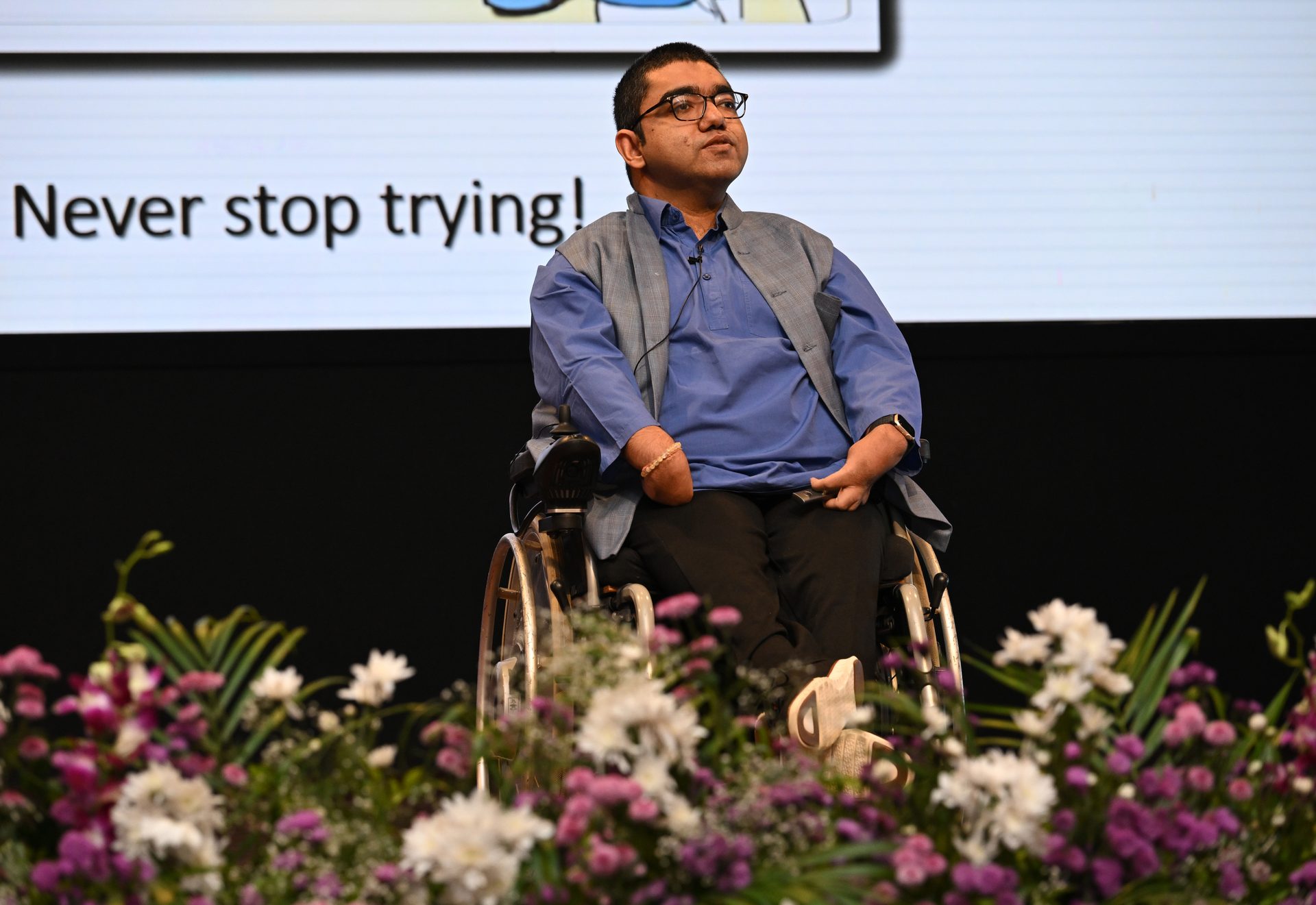
So far, the three challenges that people with disability face are attitude, accessibility and affordability. I would like to thank the Adani Group for organising the GreenX talks to action at least one of these - to change attitudes throughout the country.”
Nipun Malhotra
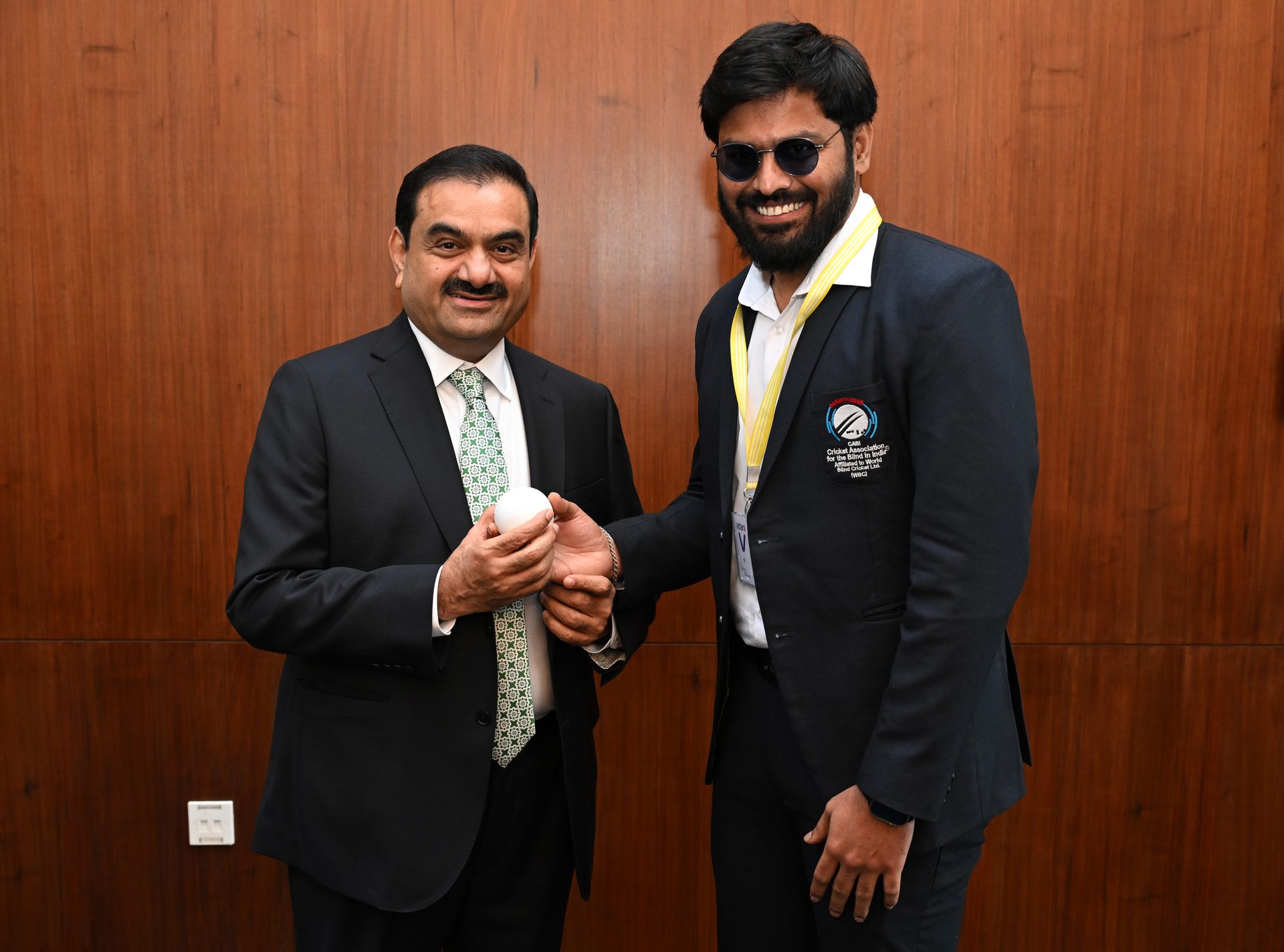
Give your best. Make the impossible possible. I believe that you can do anything with a positive mindset. Don’t give up in any situation.”
Ajay Kumar Reddy
Diverse Voices, Unified Vision
The session was then opened to a panel of distinguished guests to discuss accessibility and inclusivity in the workplace. The panel included Tarun Kumar Vashisth, a professor at Panjab University, who is the first PhD candidate with visual impairment at IIM-A, Alina Alam who started Mitti Cafe in 2017 when she was just 23 and has employed around 400 people with various kinds of disabilities from around the country, Dr Anita Sharma who is paralysed from the waist down due to polio, is the founder of the ‘Drive On My Own’ Foundation and Inkpothub, and is also India’s first woman skydiver with disability, and Dr Bhushan Punani, general secretary, Blind Association and VP, International Council for the Education of People with Visual Impairment.
Alina Alam once watched a documentary about Nero, the infamous Roman emperor who threw a party to celebrate his gory victory. She realised that the real problem was not Nero, his cruelty or his debauchery, but it was his guests who could sing, dance, and drink, even though they were responsible for the atrocities committed by Nero. This realisation prompted her to create a model that would bring people together and provide sustainable livelihoods for those with disabilities. She chose food to do so as it connects people and can bring about economic opportunities for individuals with disabilities. Her first manager crawled to her job interview because her family could not afford a wheelchair. Ms Alam now has 35 cafes in several big airports, employs people with various kinds of disabilities, has served over 10 million meals so far, and is further training 5,000 more people to overcome the physical challenges life has thrown their way.
Dr Anita Sharma was just six when she contracted polio and became disabled from the waist down. Despite struggling with surgeries and facing social challenges, she graduated with an MBA in HR, and received her PhD in disability and entrepreneurship from IIM-Indore. She met 35 different people for marriage but was rejected due to her disability. That affected her confidence and pushed her into depression. She had to opt for therapy. Rejected by her parents and the world, decided to prove her worth to herself and everyone else. With renewed motivation and vigour, she applied to universities and IIMs and received calls from Bangalore and Indore among others. Eventually, she became India’s first skydiver with a disability. Throughout her journey, Dr Sharma experienced both acceptance and rejection due to her disability. Her experiences taught her the importance of empathy and understanding in creating accessible workspaces for everyone. She has worked extensively on the concept of ableism, its impact on building design, and job descriptions, and how it affects people with disabilities. Dr Sharma expressed firm belief in the fact that, for an organisation to be potentially inclusive in the future, it needs support from top management and intent to be inclusive in their work design.
Dr Bhushan Punani then discussed the importance of digital imperfection in replacing physical imperfection, the significance of the immediate supervisor, the need for sensitisation and stigma balance, and the relevance of diversity frameworks such as Braille Without Borders, vendor diversity programs, and equal employment opportunity in ensuring more inclusive spaces.
Dr Punani also spoke at length about disability rights legislation in India, specifically the Rights of Persons with Disabilities Act 2016, which aims to make public places inclusive. He spoke about the importance of bringing inclusion as a thought process to enhance development as a corporate challenge.
The panel observed that inclusion should not be a privilege, but rather an inherent right for every individual. There is a need for mindset change and support from leadership for workplace inclusion to occur. People with disabilities have their own ways of processing information and they should be respected and provided with reasonable accommodations. Inclusive workplaces must not only be accessible physically, but also in mindset and also in the digital world. An inclusive workplace will pay off in the long run by improving employee retention, work-life balance, and competitive advantage. Inclusive workplaces foster an environment where diversity is not just acknowledged but celebrated. Embracing individuals of various backgrounds, perspectives, and abilities not only reflects a commitment to social equity but also enhances creativity and innovation within teams.
By cultivating a culture of inclusivity, organisations create spaces where employees feel valued and empowered to contribute their unique strengths. This approach goes beyond mere representation; it entails fostering a sense of belonging and dismantling barriers that may hinder certain groups. Inclusive workplaces recognise the importance of diverse voices, promoting a collaborative and supportive atmosphere that ultimately leads to increased employee satisfaction and improved business outcomes. The panellists discussed the need for a two-page policy document that should be implemented as an equal opportunity policy for people with disabilities. It should include factors such as sensitisation of people, sharing of information, creation of a culture of inclusivity, and sharing of technology information and making the website and information system accessible. Compassion and courage in overcoming any challenges faced by people with disabilities.
Accessibility and Equal Opportunities
The concluding session included a soul-stirring performance by Ankita Patel, a visually-impaired singer who has been singing professionally for five years now. GreenX Talks stands as a testament to the power of storytelling in fostering inclusivity and understanding. By providing a platform for individuals with disabilities to share their experiences, challenges, and triumphs, the Group aims to encourage our society to embrace diversity and work towards creating a more inclusive future. As these inspiring voices continue to resonate, we are reminded that true empowerment lies in recognising and celebrating the strength within us all, regardless of the obstacles we face. ●
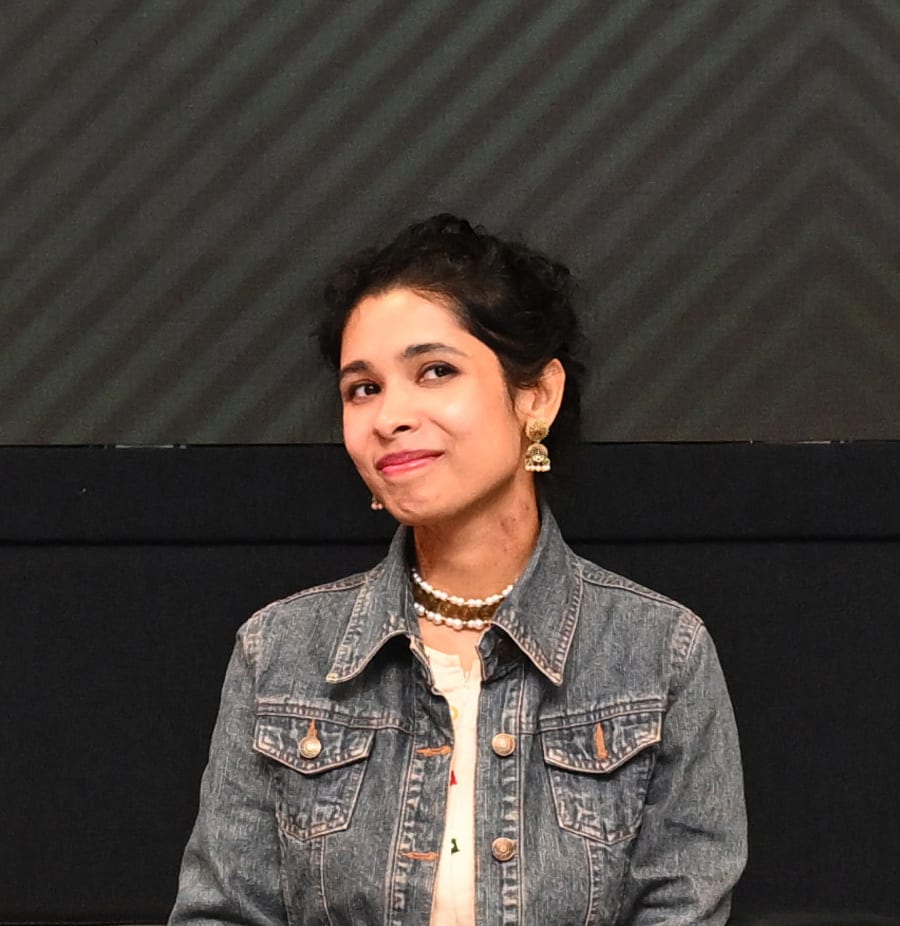
Leaders who have the perseverance to bring about a change can turn a social problem into a social cause, and further into a people’s lived reality. Grit and determination is all it takes.”
Alina Alam
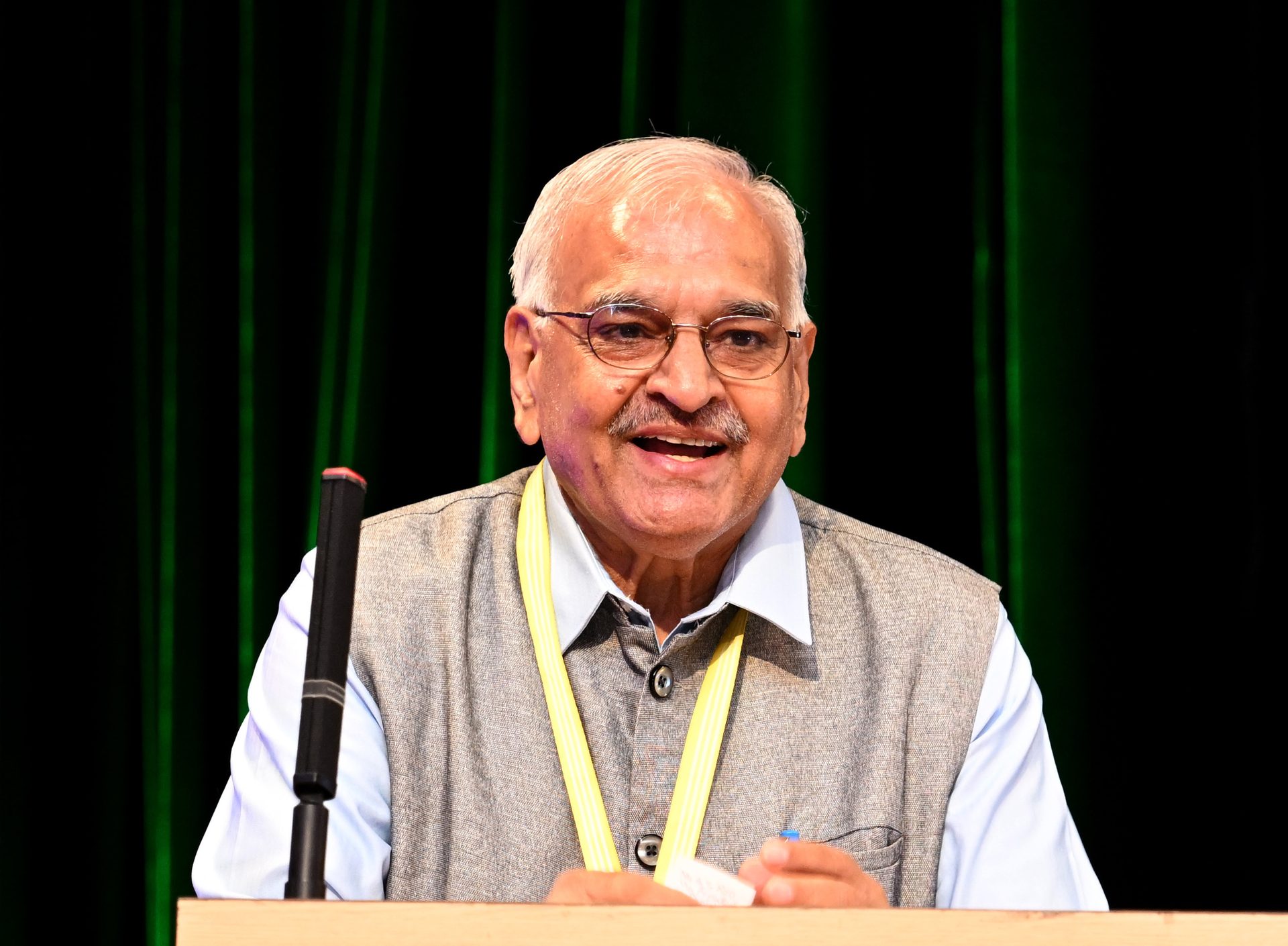
The Adani Group has taken up inclusive development as a challenge and has inspired others by taking the lead in the trend, making India proud by honouring young people with disabilities. The country’s efforts towards inclusive development have contributed to legal guidelines and policies that ensure the inclusion of people with disabilities.”
Dr Bhushan Punani

We have hired a lot of disabled people and we have had learnings. Every single person, every single leader at Adani wants to keep being more and more inclusive without fail. This is the spirit that we should collectively be proud of. This is the spirit that we should collectively celebrate. This is the spirit that should keep us going because it epitomises, better than anything else, what we call growth with goodness.”
Sudipta Bhattacharya
Group CTO
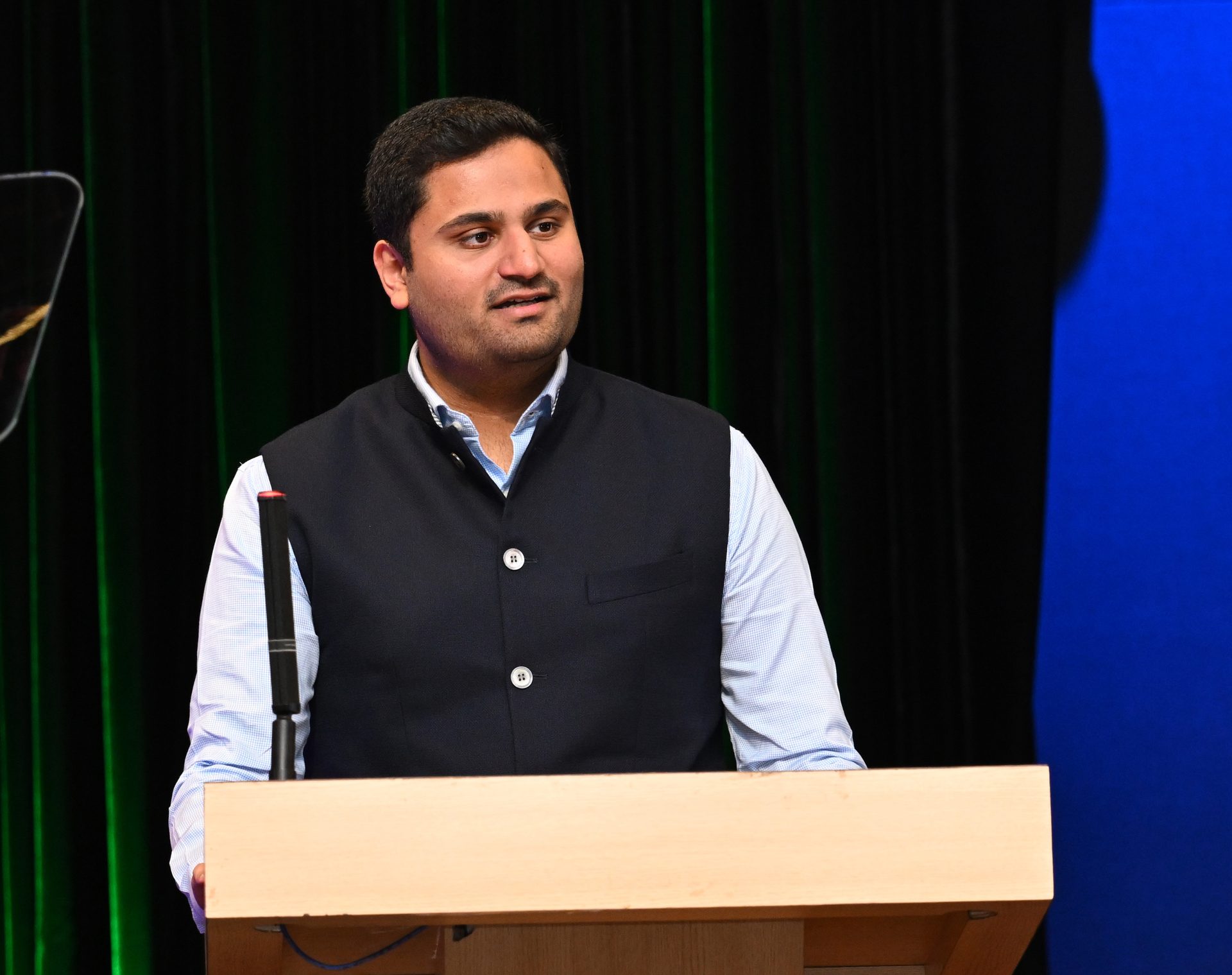
This vision, initiated by my father, and supported by my mother, must now be the torch that we, as the next generation of the family and the organisation, need to carry forward. It is not just a vision to uphold but a mission to live the collective dream woven into the fabric of our shared existence as the Adani Group.”
Jeet Adani
Breaking Limits, Igniting Hope
On 3 Dec, on International Day of Persons With Disabilities, the Adani Foundation’s unwavering commitment to inclusivity took centrestage.
Newsmakers
Adani Foundation
Arpita Vadgama
O
n International Day of People With Disabilities (IDPWD), the Adani Foundation organised a large-scale employment fair in Mundra, Gujarat, culminating in a heartwarming celebration of inclusion and empowerment. 111 individuals with disabilities were awarded appointment letters, while five others were equipped to chart their entrepreneurial journey, marking a significant step towards their self-reliance and integration into the workforce.
Placements extended beyond the Adani Group, encompassing 20 other companies, creating a ripple effect of positive change in and around Mundra.
The event witnessed a palpable sense of excitement and hope. Dignitaries like Jeet Adani, Director, Airport Business, Adani Group; VJ Rajput, IAS, Commissioner for Persons with Disabilities, Government of Gujarat; Vasant Gadhavi, Executive Director, Adani Foundation; Rakshit Shah, Executive Director, Adani Ports and Special Economic Zone (APSEZ); Nimesh Pandya, Additional Collector, Bhuj; Dipesh Shroff, Kutch Nav Nirman Abhiyan; and SK Prajapati, District Development Officer, Kutch, graced the occasion.
Since 2014, the Adani Foundation has dedicated itself to mainstreaming differently-abled persons through its Swavalamban project, supporting their journey toward self-reliance. Over the years, the Foundation has celebrated the IDPWD at the taluka/district level, providing equipment support, organising employment fairs, facilitating government schemes, and nurturing creative and entrepreneurial aspirations. To date, the Swavalamban project has been a catalyst for 800+ individuals in their pursuit of independence. ●
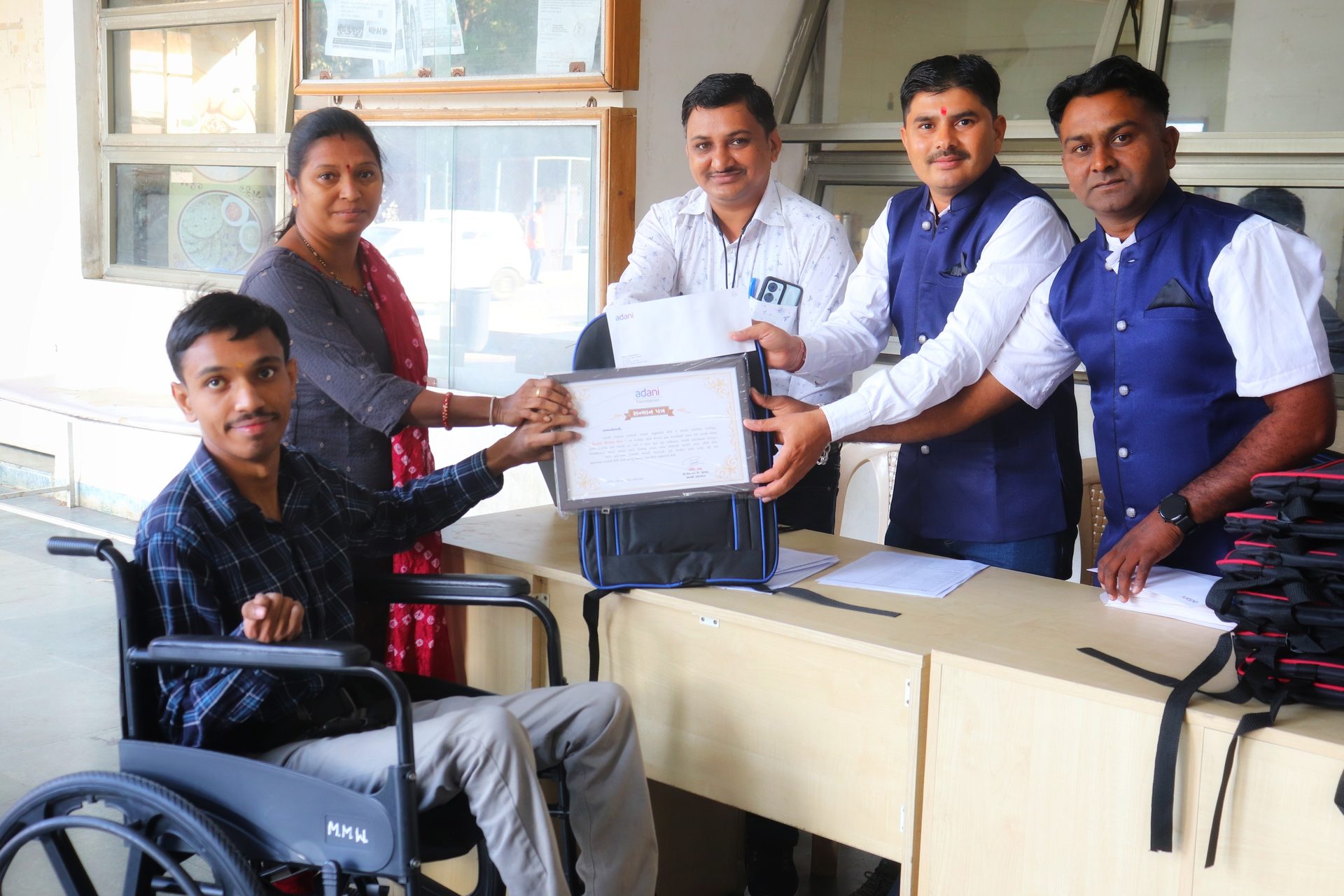
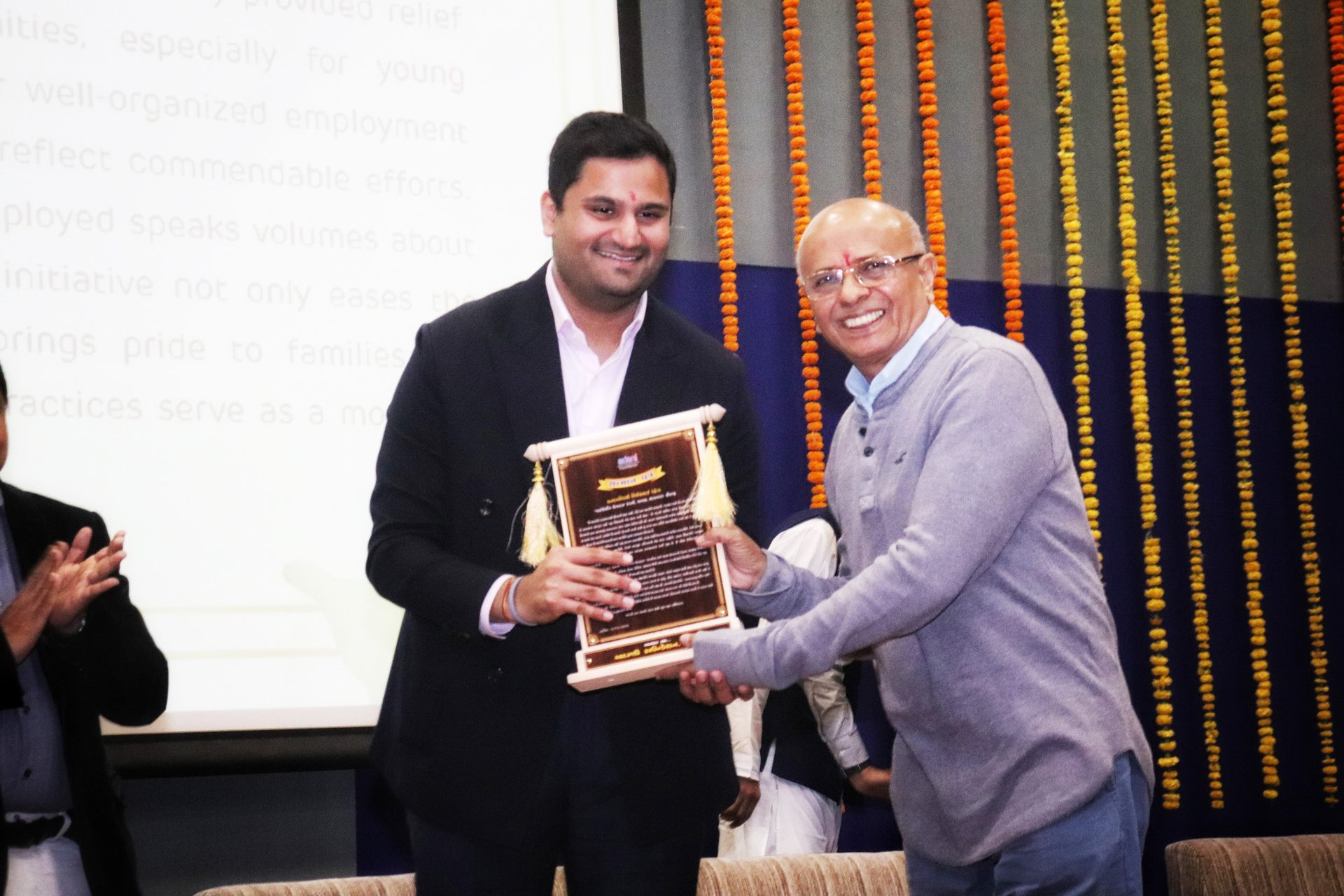
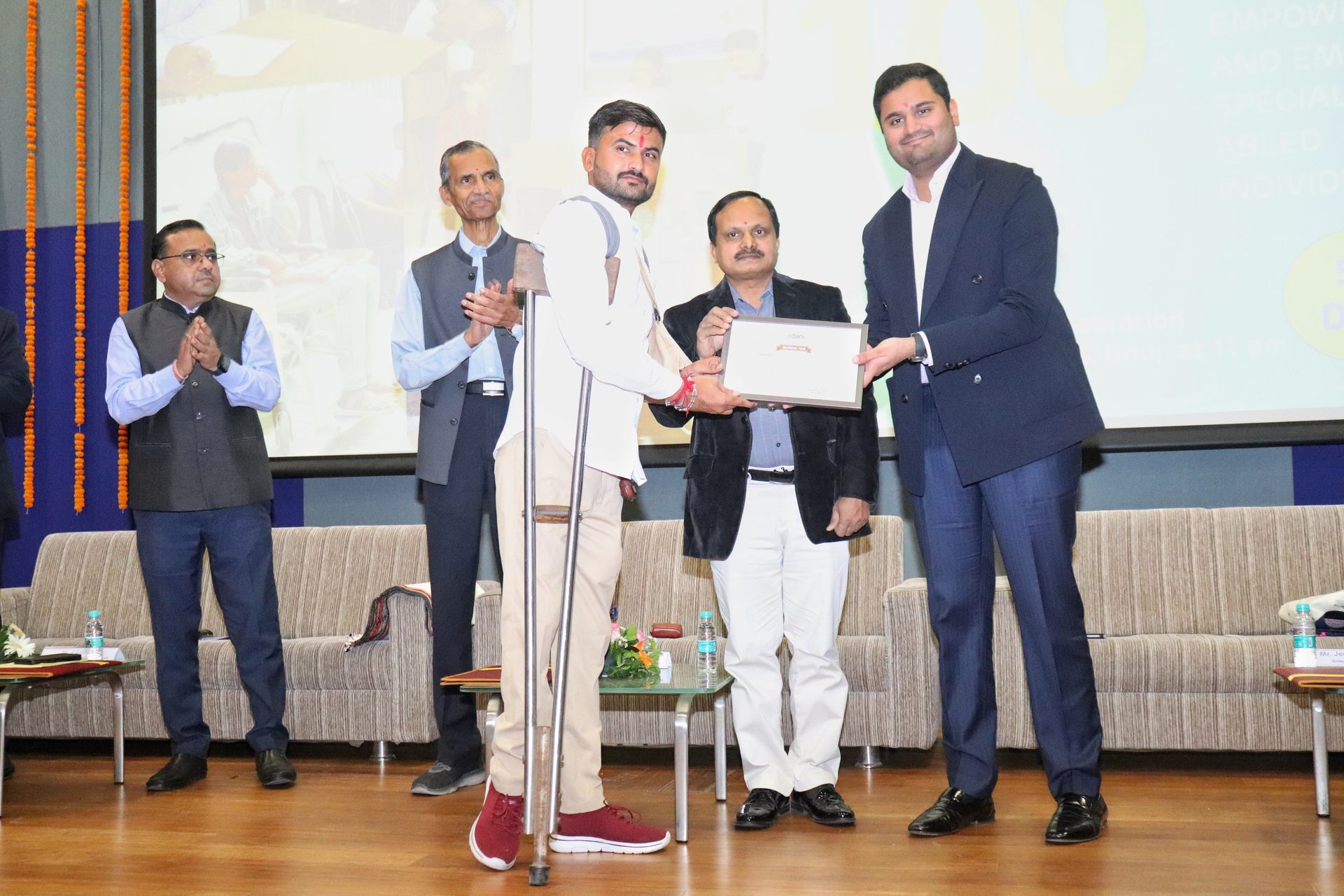

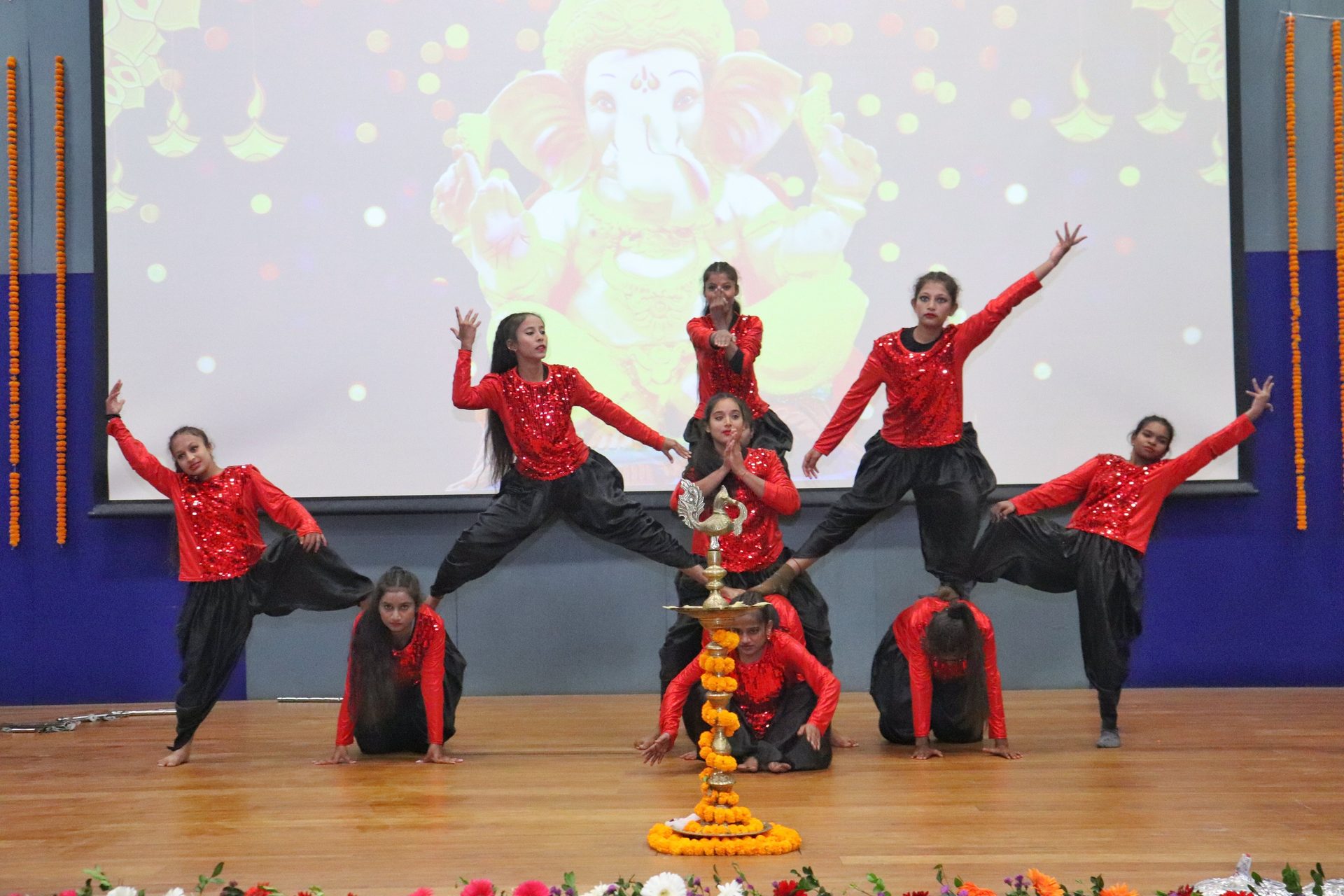
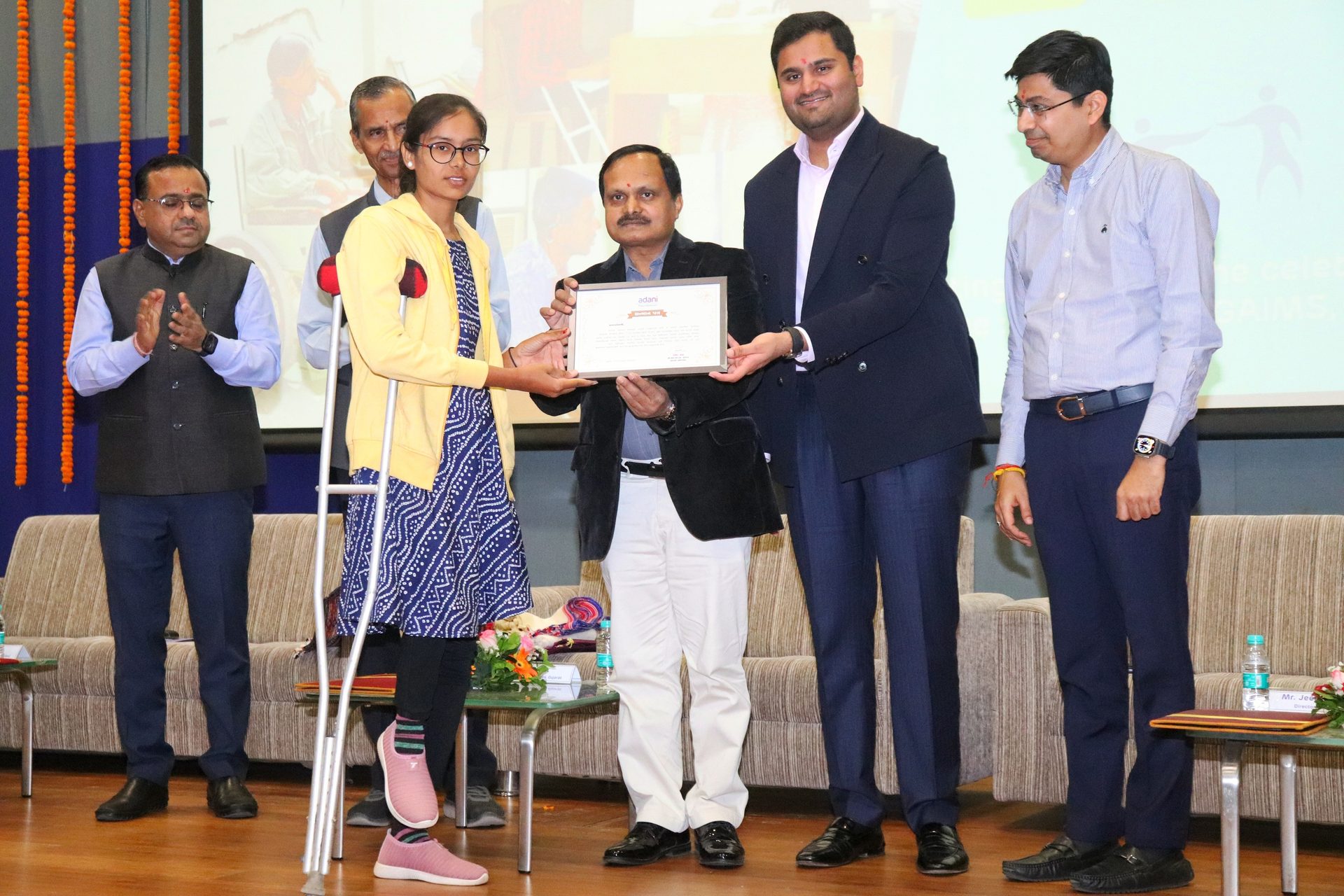
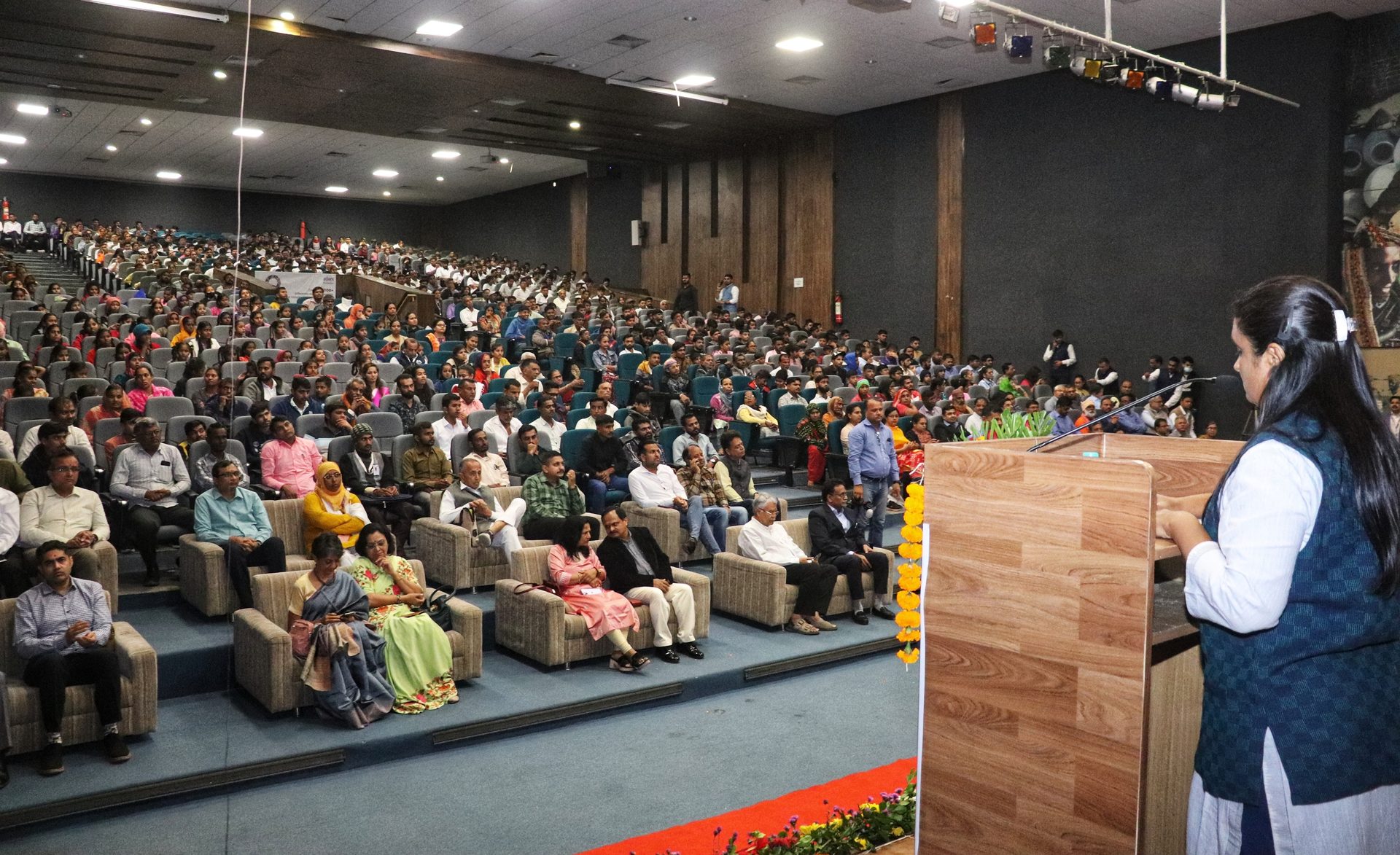
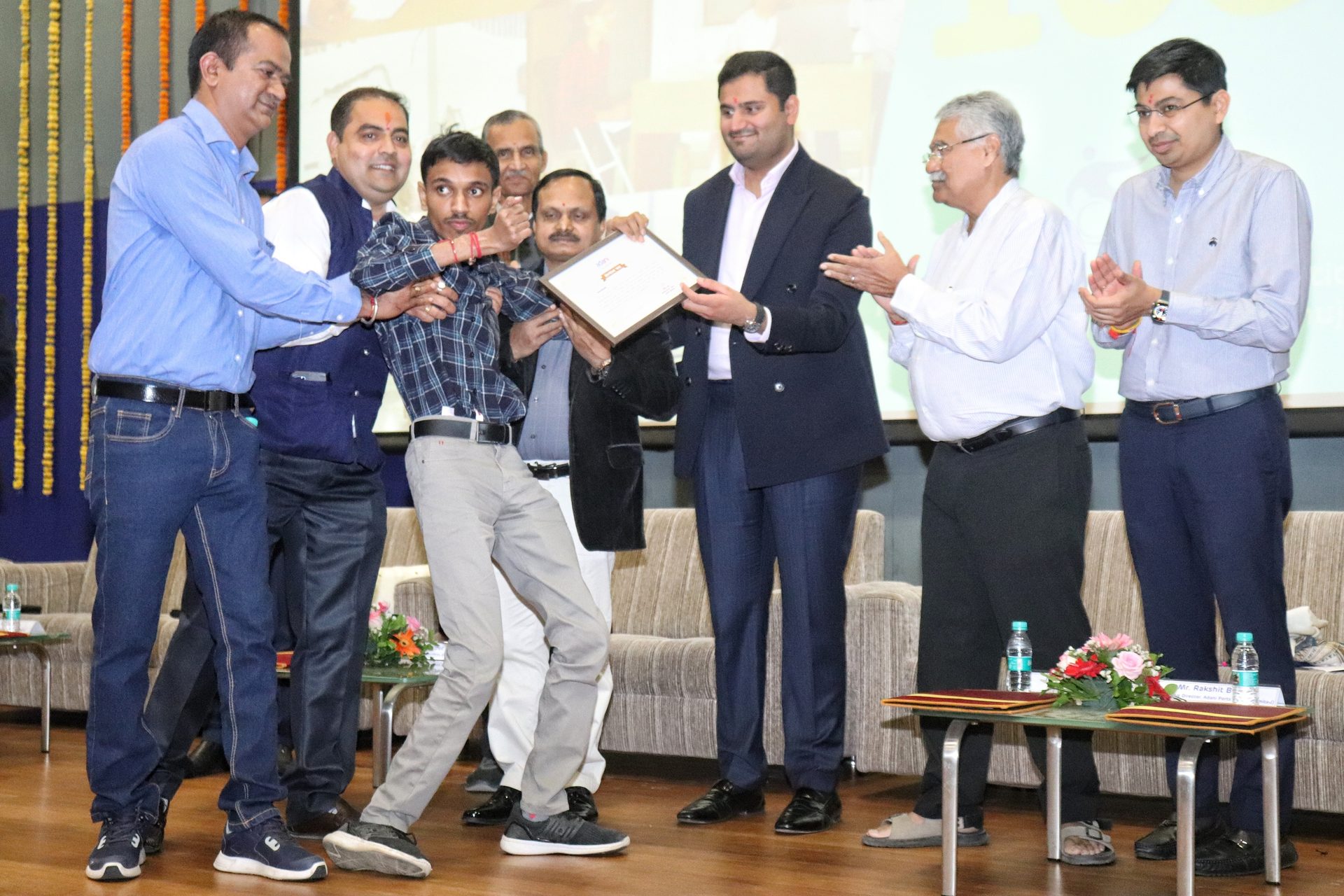
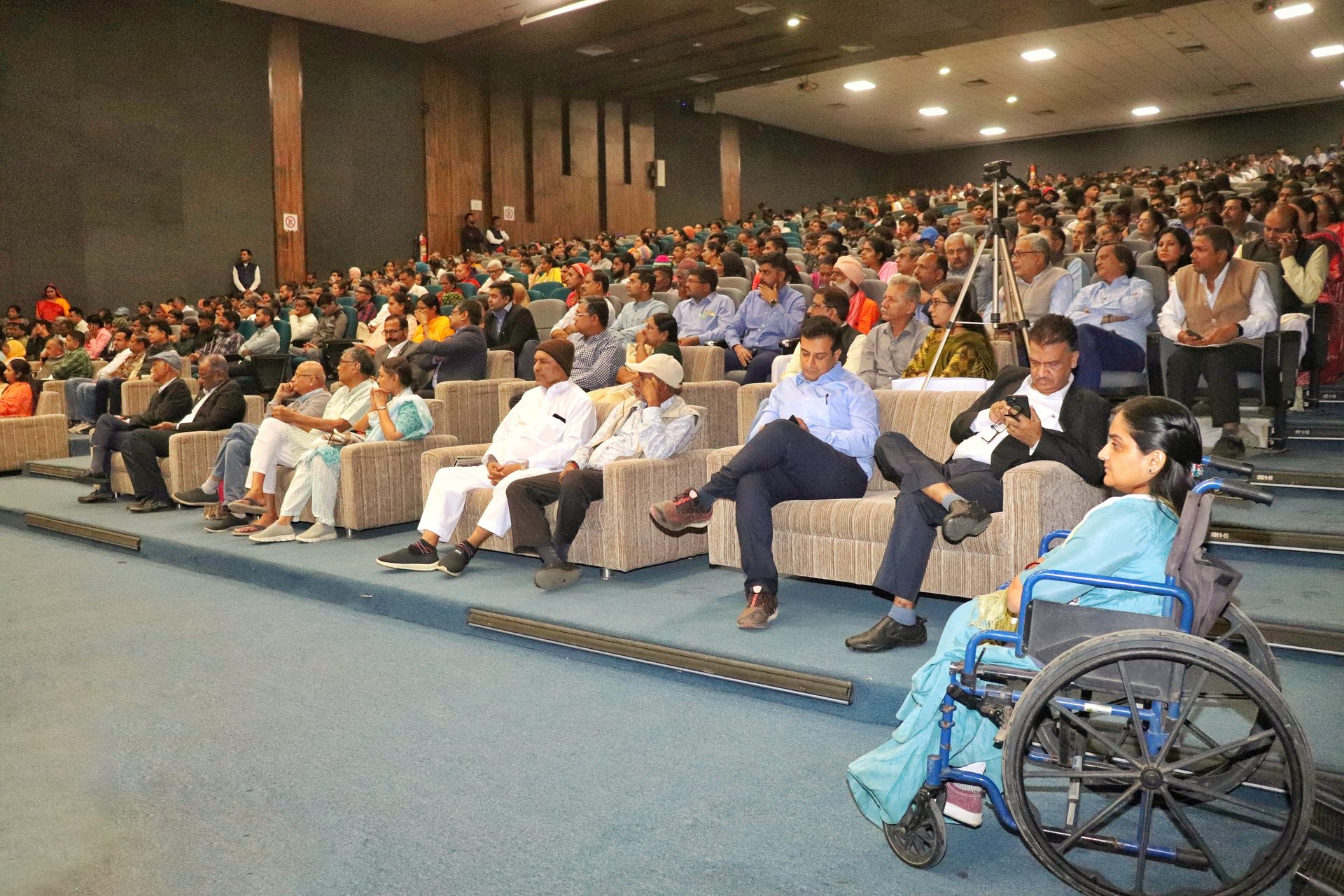
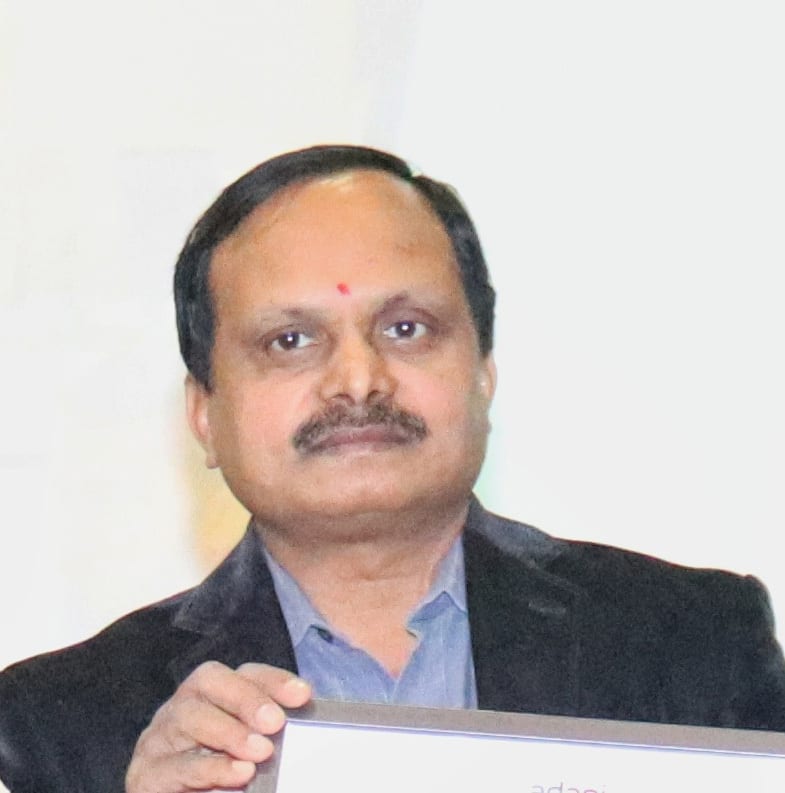
The government offers numerous schemes and benefits that should be availed by maximum people. Adani Foundation’s efforts mark a new beginning. We need to identify the innate talent of individuals with disabilities and help them become self-reliant.”
VJ Rajput, IAS
Commissioner for Persons with Disabilities
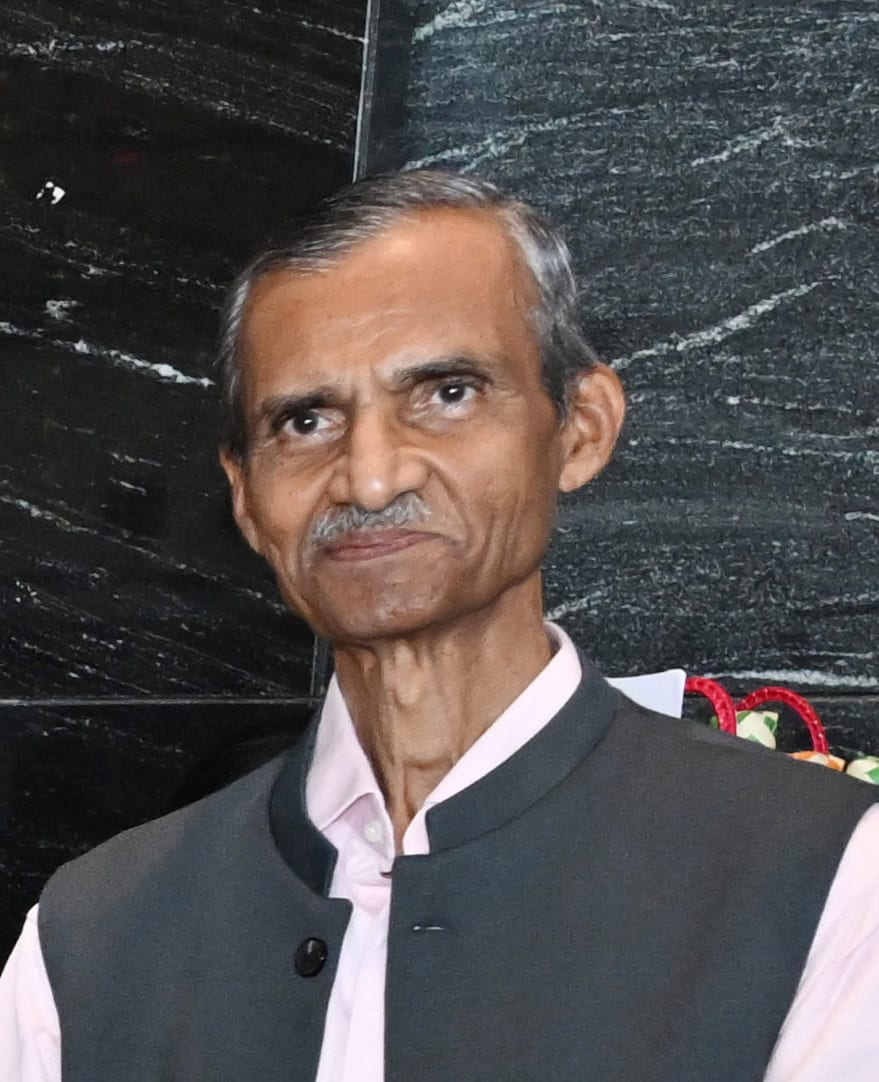
The Adani Foundation works across India in many areas of social development, but this is one of the core areas of focus in Mundra for the last seven years. We remain committed to taking these efforts to the next level."
Vasant Gadhavi
Executive Director, Adani Foundation

I am hopeful that in the future too, the Foundation will set a remarkable example by continuing to do meaningful work for the welfare of the community.”
Avni Jethva
She got a job in Adani Skill Development Centre as a trainer for Handicrafts related course.
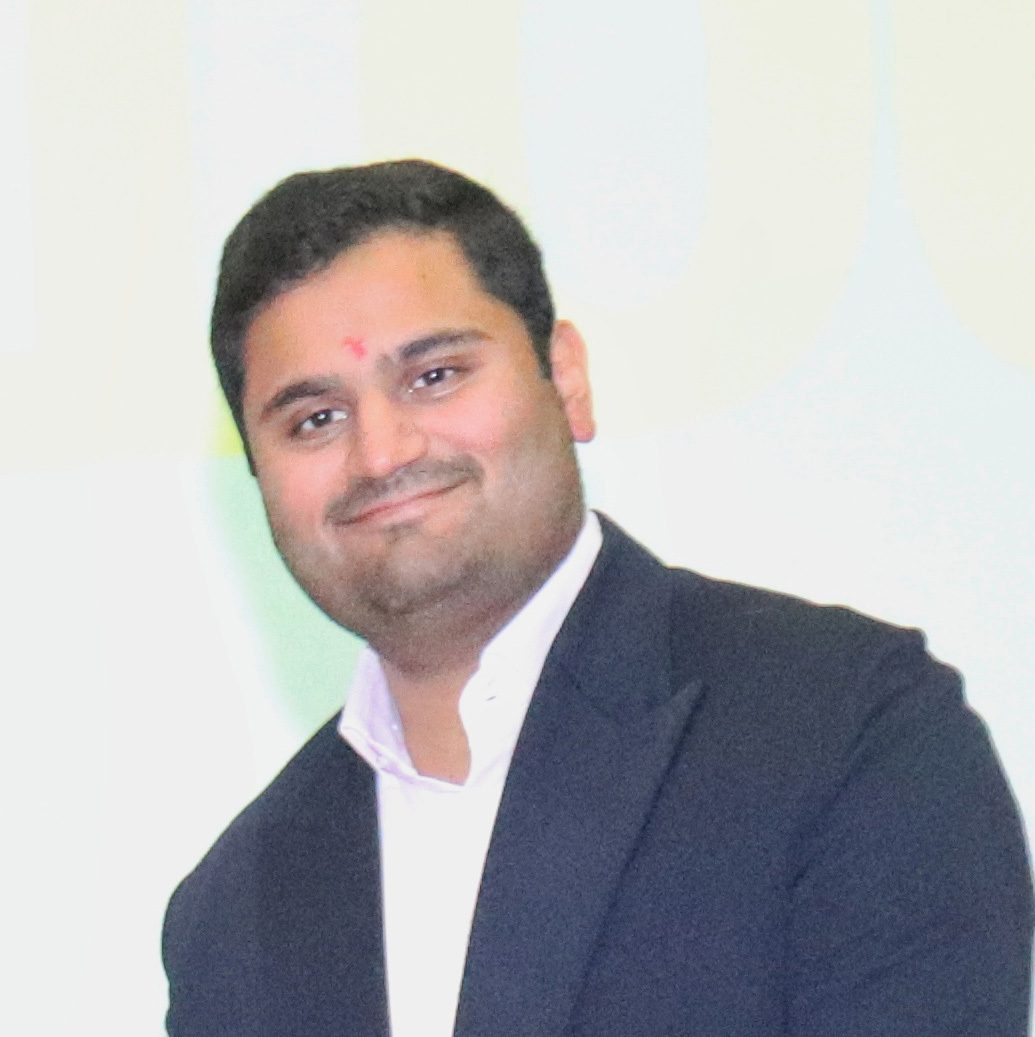
We are augmenting our efforts in this direction, as part of which more than 100 individuals with disabilities received employment opportunities at Adani and many other companies. As a society, each one of us should contribute to this cause, and I pledge to contribute wholeheartedly to this mission.”
Jeet Adani
Director, Airport Business, Adani Group

I am thankful to the Adani Foundation for helping me get employment that aligns well with my capabilities and skills.”
Vishnu Prajapati
He got a job in Mundra Petrochemicals as an engineer.
“When the sun rises, it rises for everyone.” – A Cuban proverb
The Legal Eagle
Jatin Jalundhwala’s journey from a small village to the upper echelons of corporate law is a testament to the transformative power of hard work, true loyalty and unwavering dedication.
leaderspeak

Dipika Rathi
I
n the bustling realm of corporate success stories, there are few narratives as compelling and inspiring as that of Jatin Jalundhwala, the dynamic legal head and company secretary at the Adani Group. Born and raised in Khambhat, a quaint village 100 km from Ahmedabad, Mr Jalundhwala reminisces about his early years and the challenges that shaped his character.
“From Khambhat, we moved to Kheda, where my father worked as a schoolteacher,” he recounts about a time when his pursuit of education was derailed by an unforeseen tragedy. At the age of 17, a devastating accident claimed his mother’s life as their house collapsed under the weight of heavy rain, forever altering the trajectory of his life.
Navigating financial constraints, the road ahead appeared uncertain. “An opportunity as a Company Secretary in Ahmedabad unfolded through a friend’s call. Thus began my journey into the corporate world, commencing with a monthly salary of INR 1,150 in 1983. However, my joy was short-lived, as on the morning of 23 Jan 1984, my father did not wake up to go to school. We lost him. Left as the sole son with two younger sisters, I was determined to study even harder.”
In 1984, he embraced a new chapter in life through his marriage to Dipika. His family expanded, and with time, he ensured that his sisters found suitable matches. After two years of daily commuting, in 1986, he established his roots in Ahmedabad by purchasing a house. “It has indeed been a journey,” Mr Jalundhwala exclaims.
In a candid conversation, Jatin Jalundhwala shares his journey of life that unfolds as a testament to resilience, loyalty and an unyielding commitment to both professional excellence and social responsibility.
What does a typical day look like for you?
Amid the professional hustle, my role as a family man remains paramount. Mornings begin with precious moments shared with my granddaughter Paanvi before her school day kicks off. Work-life balance and religious practices form the pillars of my daily routine. Despite our differing schedules, we make it a priority to have lunch together every Sunday.
What has been your Adani journey?
Joining Adani in 2006 was the beginning of a saga marked by challenges and triumphs. I started as a General Manager at Adani Realty. Destiny favoured me, followed by hard work, catapulting me into the role of the head of the legal team within 3 months. From those nascent days with just 5 members on the team, including myself, to overseeing a team of around 100 today, the metamorphosis mirrored the exponential growth of the Adani Group.
How do you keep your teams morale?
I consistently convey a simple message to every team member: “Take care of the work, and I will take care of you.” I encourage them to enjoy personal activities, like watching a film, as long as they communicate and fulfill their responsibilities. In team discussions, I emphasise that it’s not a conversation with the boss but an open dialogue among colleagues. This approach ensures that they feel free to engage and discuss matters openly with me.
What motivates you?
It is a unique blend of being a self-proclaimed workaholic, an insatiable thirst for challenges, and the profound influence of Gautambhai. Additionally, Rajeshbhai’s leadership, foresight and resilience have become my guiding lights.
Beyond work, what excites you?
I am deeply involved in social work, channelling my efforts through the Lions Club. In 2008-09, I served as the President of the Lions Club of Ahmedabad City. Currently, I hold the position of Director – CSR at the Lions Club and serve as the President of Dasha Shrimali Vaishnav Samaj. Additionally, I am the Vice Chairman – Legal Task Force at the Gujarat Chamber of Commerce & Industry, a Member of the Corporate Laws Committee at FICCI on a national level, Chairman of the Legal & Regulatory Compliance Sub-Committee at FICCI, Gujarat, and Chairman of the Dispute Resolution Committee at CII, India. My active involvement in community-building initiatives and contributions to society are integral aspects of my identity.
Any career tips for your younger colleagues?
Embrace a mindset of continuous learning. Stay updated on developments, industry trends, and new skills to remain valuable in a dynamic landscape. Cultivate flexibility at work and aim for long-term commitment to a single organisation. Drawing from my couple of decades of experience, this is my second job, I can attest that there is immense value in growing with a firm over time rather than frequently changing companies. Additionally, always strive to give your best, commit to giving 100%. On the days you only have 60% and you give 60% - you actually gave 100%. So, keep doing your chores and take ownership of your responsibilities.
Final reflections?
By narrating my journey, I aspire to ignite the spirit of dreaming ambitiously, persisting in the face of adversity, and making substantial contributions to both personal and community growth. Originating from the heart of Khambhat and progressing into the bustling life of Ahmedabad, my experiences underscore the profound impact of unwavering dedication, tireless effort and an enduring commitment to achieving excellence. ●
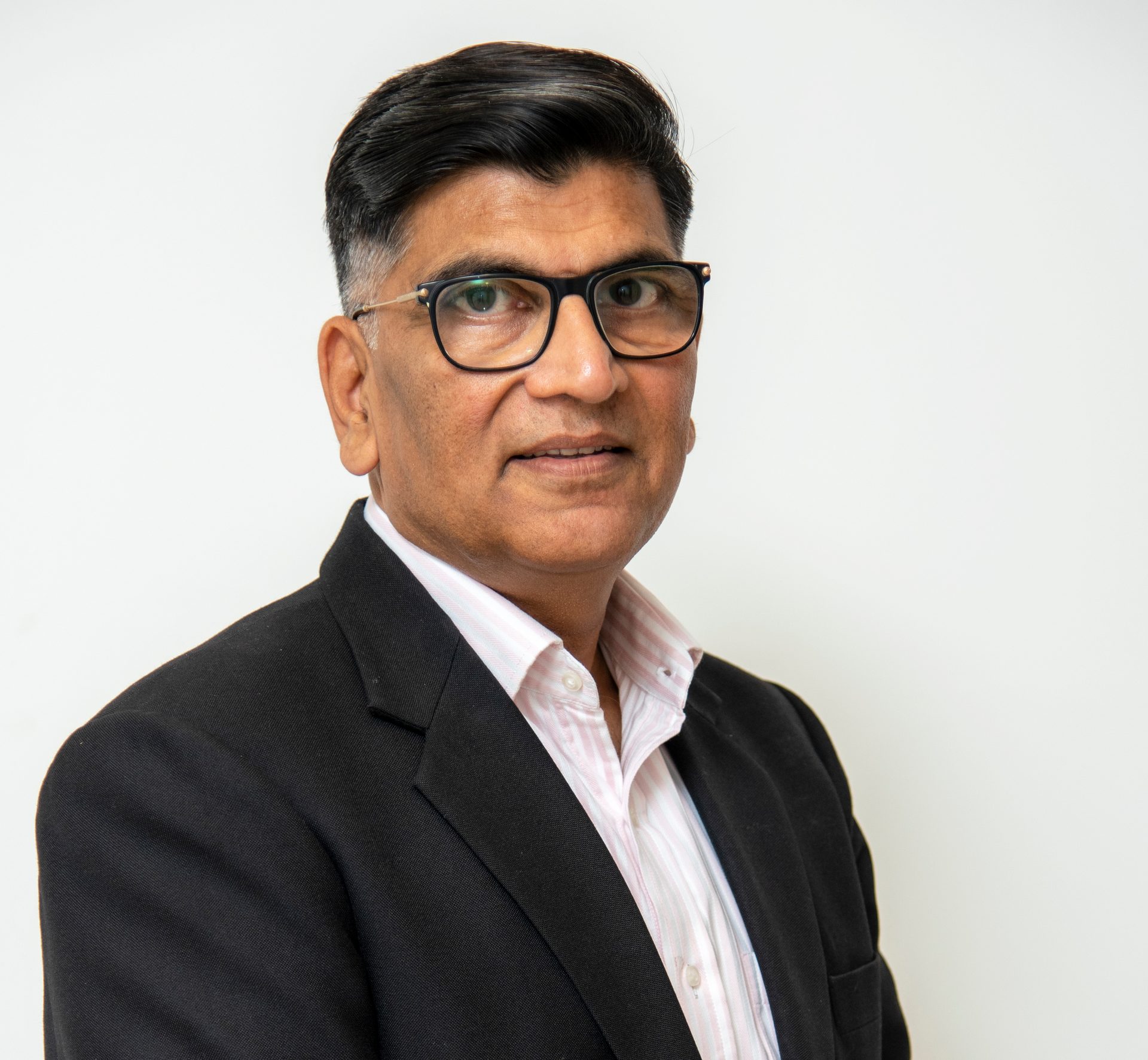
Jatin Jalundhwala has more than 40 years of experience and is in the unique position of having seen the sector evolve from its early obscurity into the important position it commands today. He is the first Legal Head at the Adani Group and has been with the Group for more than 18 years now.
Jatin Jalundhwala with wife Dipika, their sons and daughters-in-law — Swapnil-Pragya, Darshnil-Namrata — and granddaughter Paanvi.
- Hobbies and interests?
Networking and building new connections, meeting diverse individuals and expanding my knowledge are some of my passions.
- What do you enjoy doing in your spare time?
I love to watch cricket.
- Food that uplifts your mood?
Vedami, a delightful treat akin to puran-poli. It stands as the sole sweet that brings me joy. However, my palate leans towards a fondness for spicy foods.
- Favourite local restaurant?
1944 The Hocco Kitchen
- All-time favourite movie?
I am a fan of any movie with Amitabh Bachchan.
- Book that has inspired you the most?
The writings of Robin Sharma have been a great source of inspiration for me.
Quick Talk

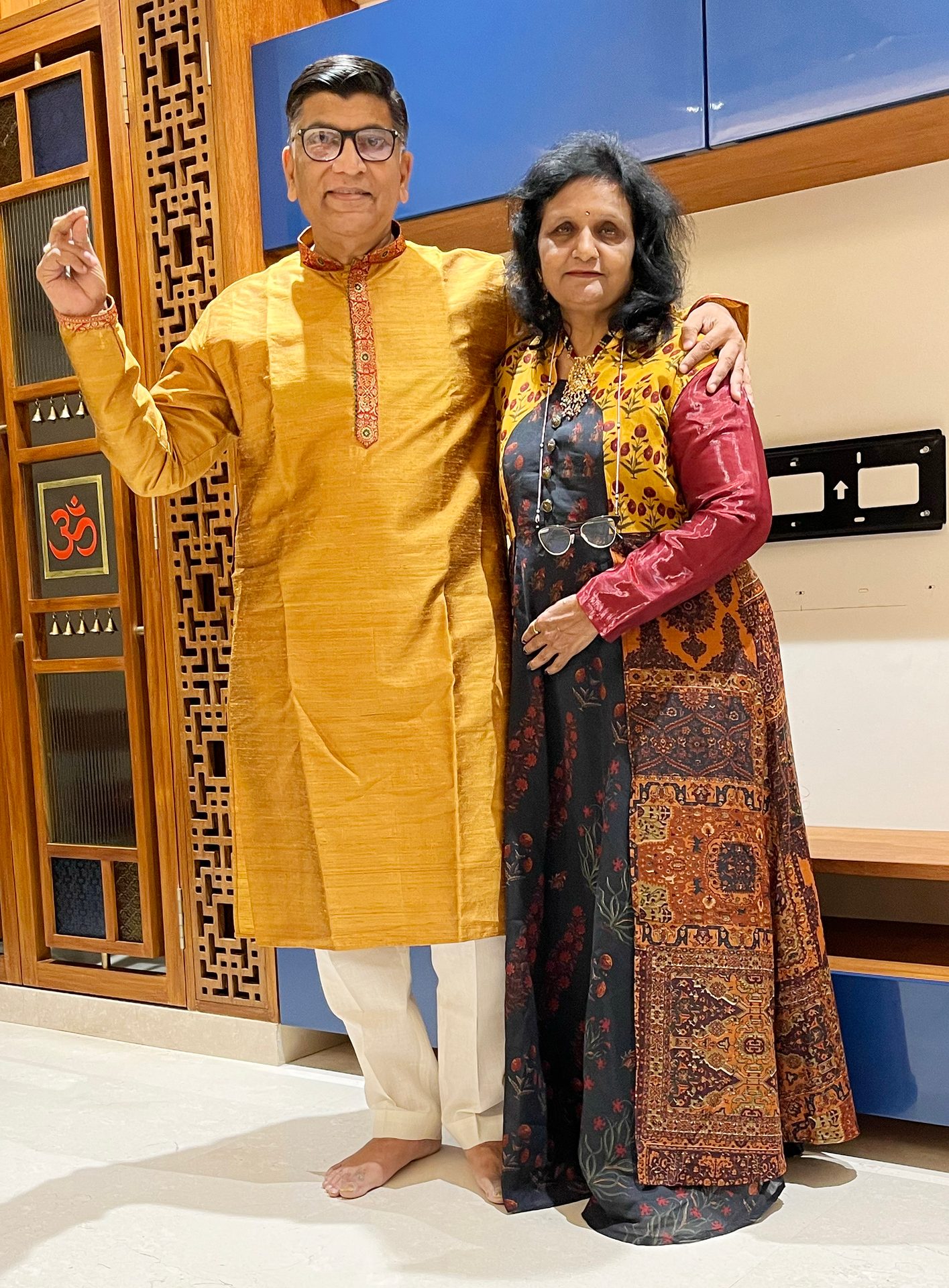
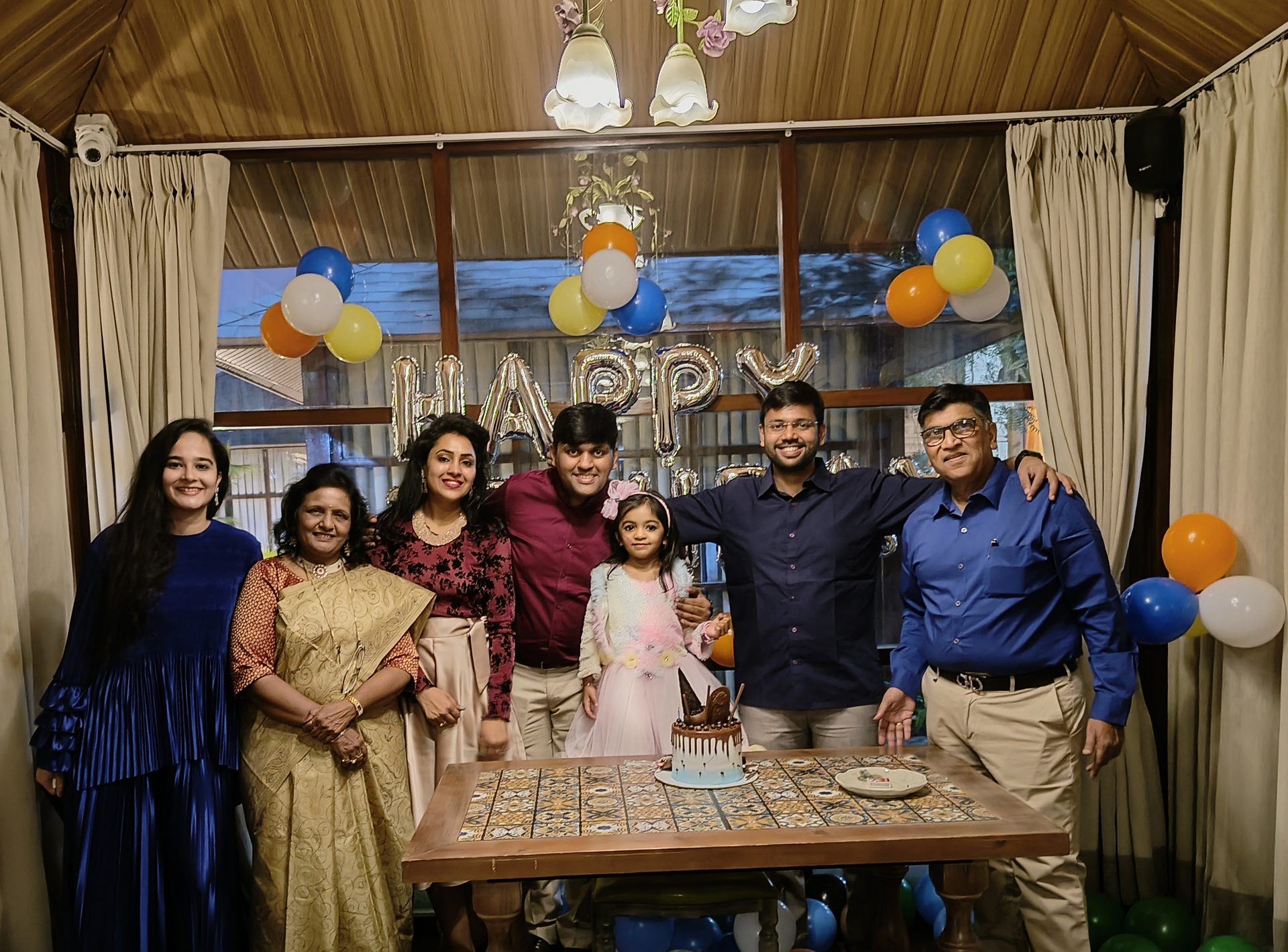
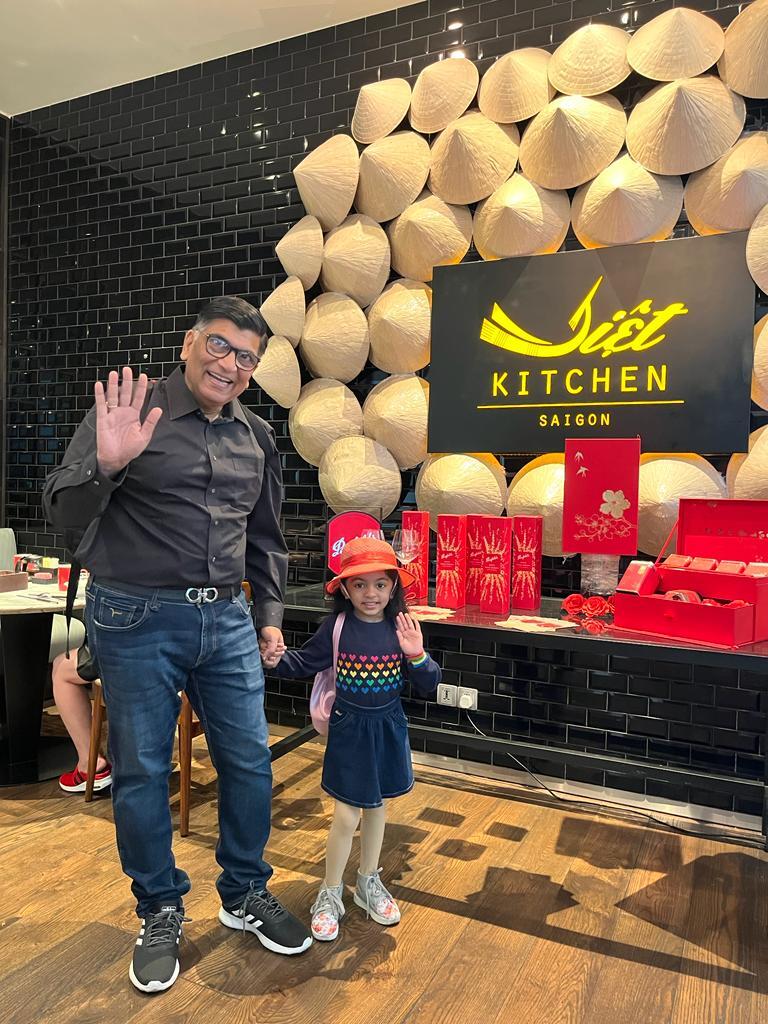
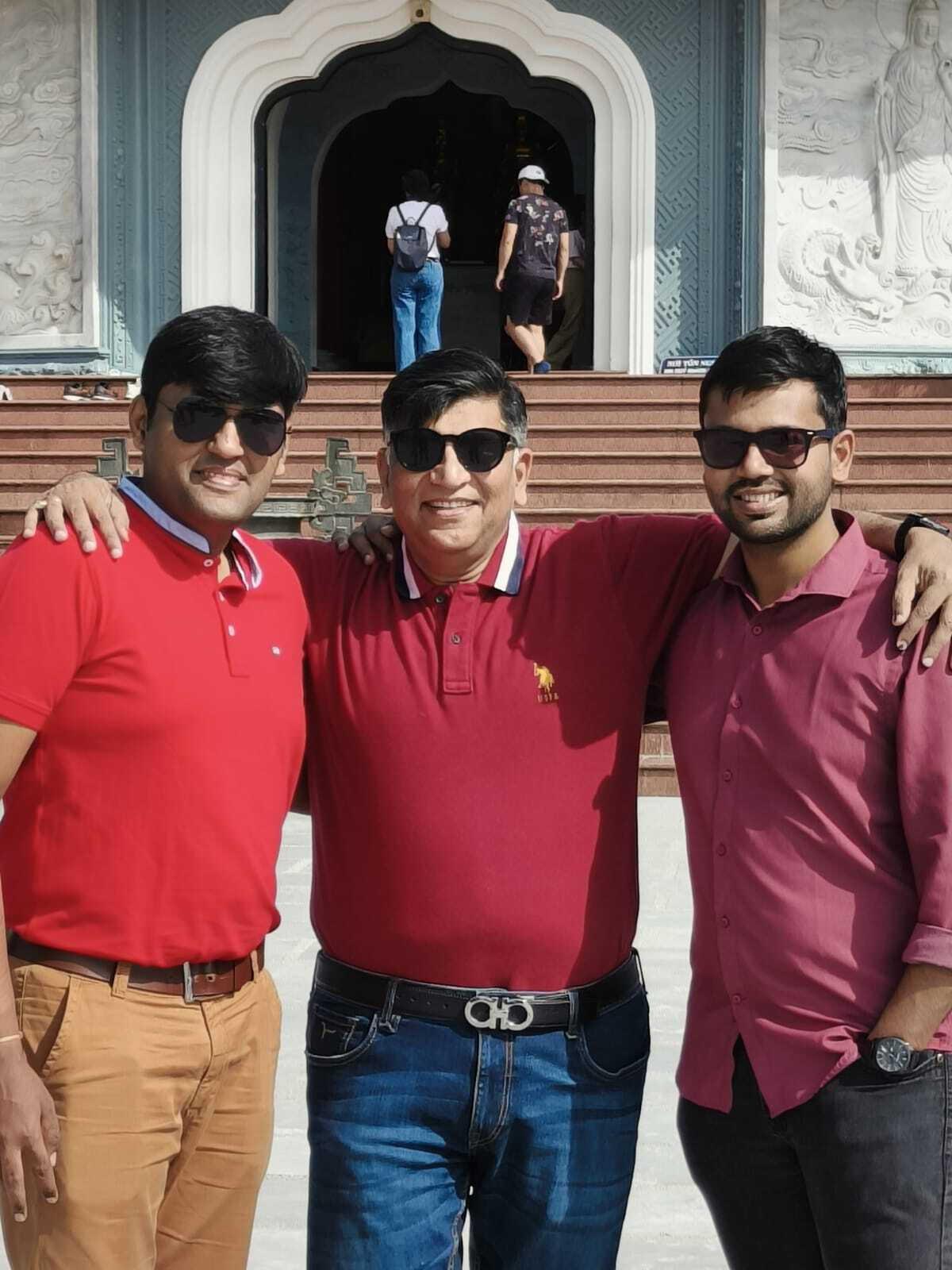
Harnessing Robotics For Sustainable Growth
Adani Green Energy adopts robotics for maintenance of solar modules to conserve water, redefining efficiency by cutting water usage to drive India's renewable energy revolution.
Newsmakers
Adani Green Energy
Chaitanya Prasad Sahoo
I
n the global pursuit of combating climate change, nations worldwide are intensifying their focus on sustainable practices. Countries have pledged ambitious targets for renewable energy capacity and India, too, has set a goal of 500 GW by 2030. India’s renewable energy capacity (as of Oct 2023) stands at 132.13 GW. Solar energy, claiming ~54% of the renewable energy share, has emerged as a dominant force in India’s green energy landscape. However, the very sustainability goals that solar energy seeks to achieve face a formidable challenge, i.e., the significant amount of water that is required for maintaining solar panels.
Solar panels require regular cleaning and maintenance to maximise the efficiency of solar panels and increase their power output. However, each solar panel demands between 0.8-1.2 litres of water in normal areas and 1-1.5 litres in dry regions, per cycle, which would mean a 1 MW solar farm would require a staggering 5,000 litres of water per cycle.
Therefore, while we must continue to accelerate the country’s energy transition journey, it is crucial that we navigate through sustainable solutions with minimal water use. In our efforts to make green energy generation sustainable, Adani Green Energy Ltd (AGEL), is focusing on lowering the water footprint of its solar portfolio by introducing advanced technologies.
AGEL is implementing water-free robotic cleaning systems, which not only contribute to reduce water consumption for module maintenance but also increase power output, enable a faster cleaning cycle and reduce the overall O&M costs. AGEL’s water-free robotic cleaning systems navigate the vast expanse of solar farms, eliminating any debris that may hinder optimal performance.
Committed to reducing the water footprint, AGEL is on the way of covering 4,830 MW of its solar portfolio with robotic cleaning which will save ~595 million litres of water annually. The water-free robots are deployed across 30% of AGEL’s operational solar and hybrid portfolio, i.e., 2,070 MW of 7,043 MW (solar + solar component of hybrid plants) and will result in annual savings of ~283 million litres of water which is enough to fulfil the water requirements of 2.7 million households every year.
Certified by independent global assurance agency DNV, AGEL is committed to be water positive for all operational plants by reducing water consumption and conservation of water resources. AGEL has also undertaken several initiatives that are in line with UN Sustainable Development Goals (SDG) 6 on sustainable management of water. AGEL’s integration of technology with environmental stewardship ensures that the energy as well as the operations are green, representing its commitment to sustainable energy practices.
With a locked-in growth trajectory up to 20.4 gigawatt (GW), AGEL currently has an operating renewable portfolio of 8.4 GW, the largest in India, spread across 12 states, offsetting over 41 million tonnes of CO2 emissions cumulatively. AGEL set a target of 45 GW by 2030 aligned to India’s decarbonisation goals. AGEL’s operating portfolio is certified ‘water positive for plants of more than 200 MW capacity’, ‘single-use plastic free’ and ‘zero waste-to-landfill’, a testament to the company’s commitment of powering sustainable growth.
As India strives to achieve its renewable energy goals, there is vast scope for expansion and technological innovation that will further propel the growth of the industry in a sustainable manner. ●
The writer is CEO of Adani Infrastructure Management Services Ltd.
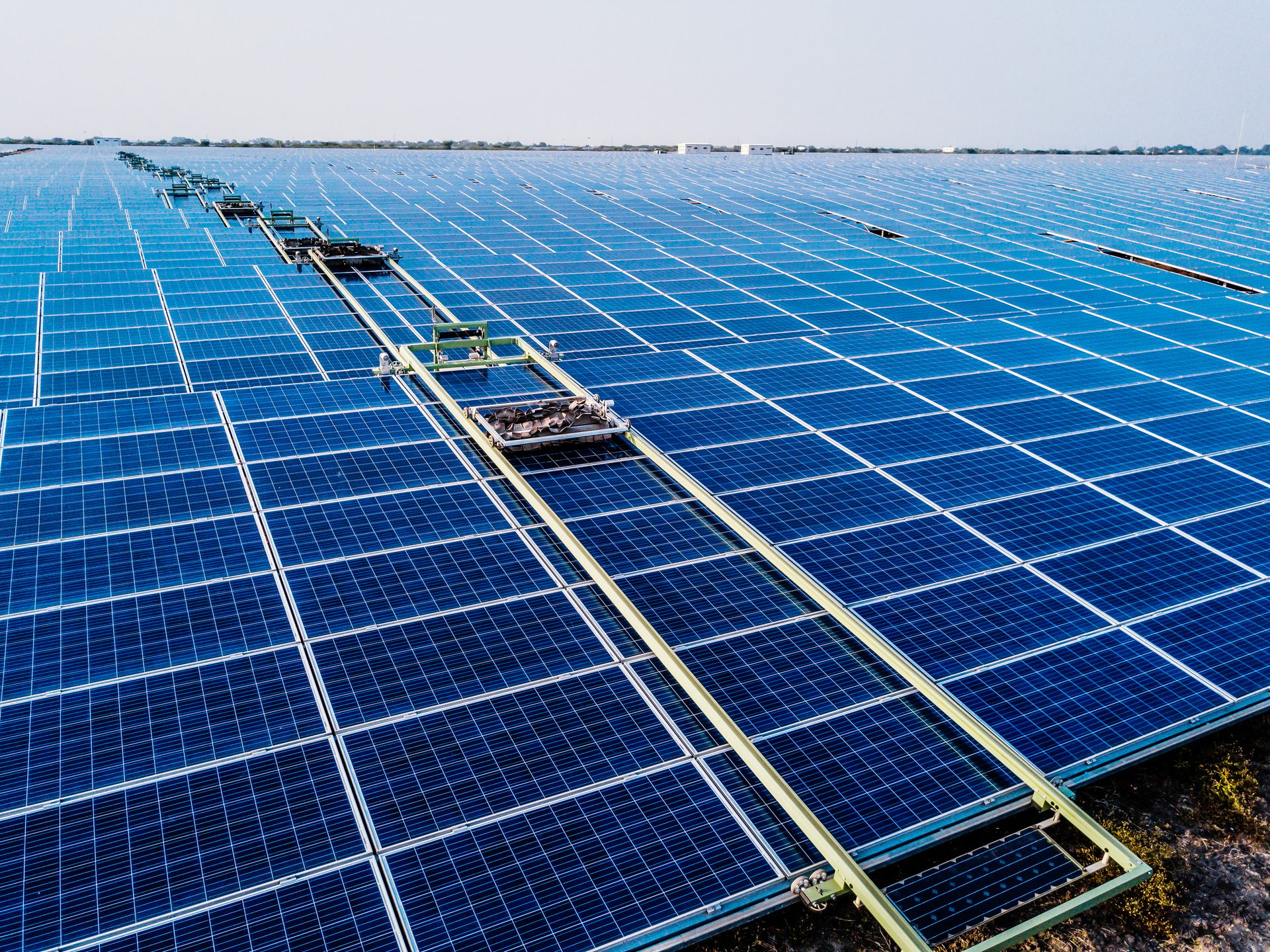
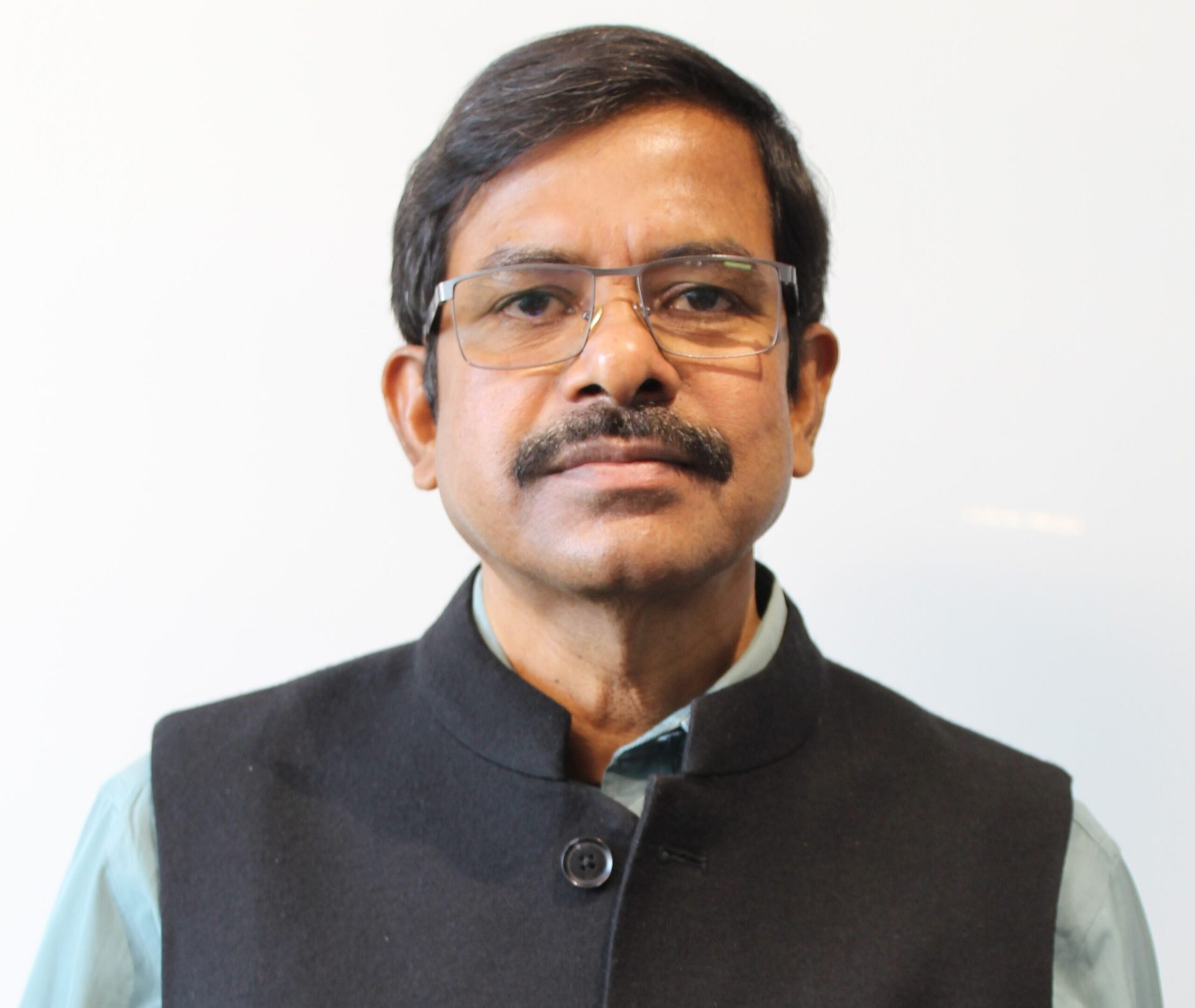
Committed to reducing the water footprint, AGEL is on the way of covering 4,830 MW of its solar portfolio with robotic cleaning which will save ~595 million litres of water annually. AGEL’s integration of technology with environmental stewardship ensures that the energy as well as the operations are green, representing its commitment to sustainable energy practices.”
community
Swift Valour
Adani Ports’ fire team saves 11 from a deadly blaze.
Jaydeep Shah
I
n a commendable display of bravery, the Adani Ports' fire team successfully rescued 11 people during a critical fire incident near Mundra’s Zero-Point area. Their swift response averted a potential catastrophe, showcasing the team’s exceptional valour in the face of danger.
The fire, triggered by a late-night electrical short circuit near Mundra Zero-Point, escalated into a formidable blaze, enveloping the area in dense smoke. The lives of those within the Ashish Arcade building were at stake, posing a life-threatening situation.
On receiving an emergency call, the Adani Ports’ fire team acted promptly, collaborating seamlessly with local authorities to control the raging fire. Despite challenges in accessing the building due to the fire’s origin at the gate, the team’s quick thinking allowed them to deploy a ladder through a window, creating a strategic entry point for rescue operations.
Through their valiant efforts, the Adani Fire Safety Department successfully rescued 11 individuals, utilising a portable ladder for 7 youths and employing two fire operators with self-contained breathing apparatus to support a trapped family. Despite the complexity of the situation, including an inapproachable single stairway due to an electrical meter fire, the team courageously extricated a family, including two children, from imminent danger.
Deploying two 9 kg dry chemical fire extinguishers and two 4.5 kg carbon dioxide fire extinguishers, the team diligently worked to suppress the blaze. While the fire was not entirely extinguished immediately, effective control was maintained through waterfalls and a swift power supply shutdown.
The timeliness and efficiency demonstrated by the fire department were crucial in averting a potential tragedy. Their unwavering commitment to swift action and the preservation of lives in challenging circumstances exemplifies the dedication and preparedness of the Adani Mundra Ports’ fire team during crises. ●



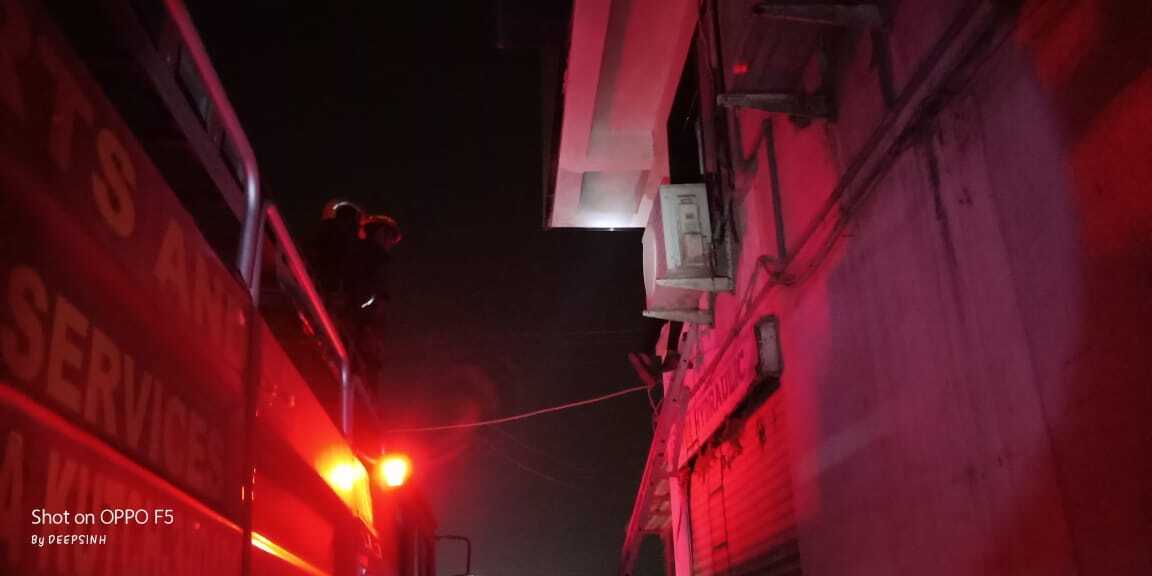
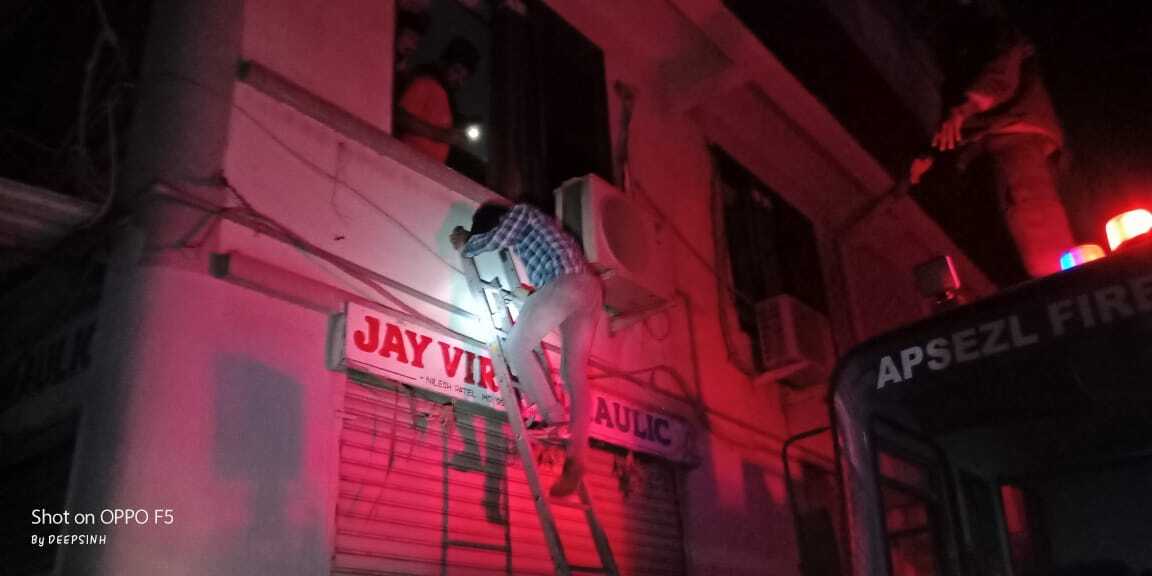
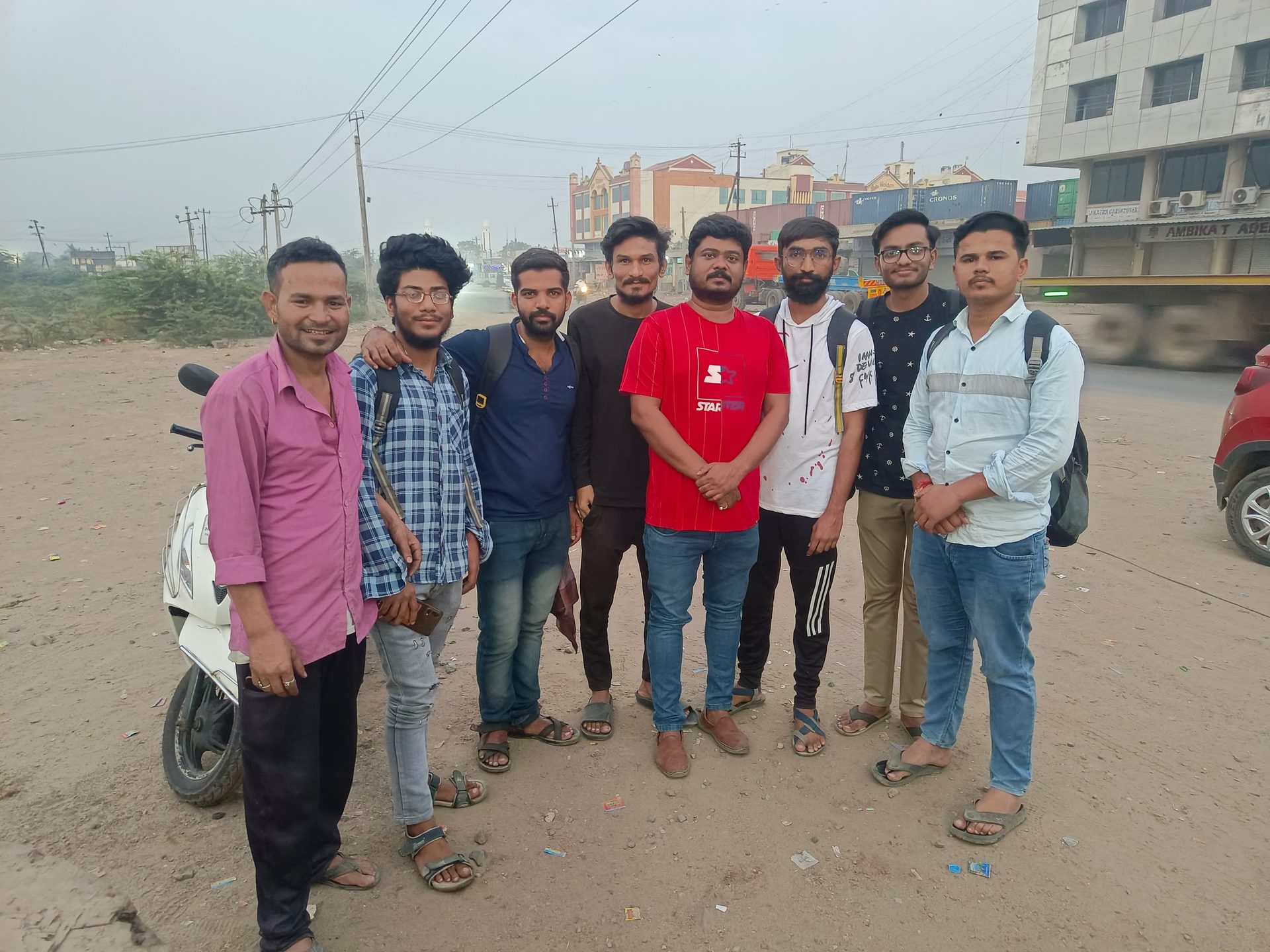
From Waves To Watts
Charting new horizons in sustainable shipping, Adani Shipping retrofits its first shaft genertor on its capesize vessel.
Newsmakers
Adani Shipping
Pankaj Tiwari
In a ground breaking move to embrace environmental responsibility, Adani Shipping Pvt Ltd (ASIPL) celebrated a major milestone on Feb 2023. The capesize vessel, MV Aashna, weighing an impressive 1,79,523 dwt (deadweight tons), became the flagship in their fleet to undergo a remarkable transformation – the installation of a cutting-edge energy-saving device (ESD) retrofitting its shaft generator.
With the imminent enforcement of the Energy Efficiency Existing Ship Index (EEXI) from 1 Jan 2023, ASIPL strategically took the lead, recognising that these retrofits not only align with regulations but also boost overall energy efficiency. The move aimed to enhance the EEXI & CII (Carbon Intensity Indicator), aligning with the company’s commitment to reducing the vessel’s carbon footprint and meeting sustainability goals.
The heart of this transformative upgrade lies in the shaft generator systems aboard MV Aashna. Acting as a Power Take-Off (PTO) system, these generators, driven by the main engine, efficiently supply power to the ship’s mains, resulting in substantial fuel and emissions savings. The main engine, a low-speed, two-stroke powerhouse, consumes fuel at a rate 25% lower than its medium-speed, four-stroke counterparts, effectively replacing diesel generators and curbing overall fuel consumption.
The ingenious system operates in power generation mode, dynamically adjusting to the ship’s speed and sea state. Through a converter, the shaft generator maintains constant voltage and frequency, offering a reliable power supply at varying speeds. This not only optimises fuel efficiency but also positions MV Aashna for long-term economic benefits amidst rising energy prices.
Beyond the economic advantages, the shaft generator’s impact extends to reducing operational complexities. When the main engine is in use at sea, the shaft generator can serve as the unrestricted main power supply, significantly reducing the need for diesel generators and easing maintenance workloads. The system’s mechanical simplicity translates to enhanced reliability and availability, ensuring continuous power supply and minimising the risk of failures.
The innovative structure of the shaft generator further contributes to its success. Integrated directly onto the intermediate drive shaft without the need for gearboxes and couplings, it occupies minimal space, promoting safety, stability, and reliability. Data from MV Aashna proudly showcases the generator’s ability to handle the full sea load, resulting in notable reductions in overall fuel consumption and running hours for auxiliary engines.
Delving into the technicalities, the shaft generator outputs a stable 450 V / 60 Hz AC to the ship’s switchboard (SWBD) after conversion. With a rated frequency of 12.8 Hz, a voltage rating of 500 V, and a power output of 1,200 kW within a speed range of 57-91 rpm, the system stands as a testament to modern maritime ingenuity.
In the realm of marine propulsion and power systems, the shaft generator emerges as a pivotal bidirectional energy conversion tool. Connecting propulsion power and ship power seamlessly, it forms the backbone of a flexible and efficient ship hybrid power system. Particularly crucial for long ocean voyages, this innovation finds its sweet spot in bulk carriers, oil tankers, and car carriers, efficiently utilising spare power to enhance the ship’s overall energy efficiency.
As Adani Shipping marks this historic retrofit on MV Aashna, the maritime industry witnesses a paradigm shift towards greener, more sustainable practices. ●
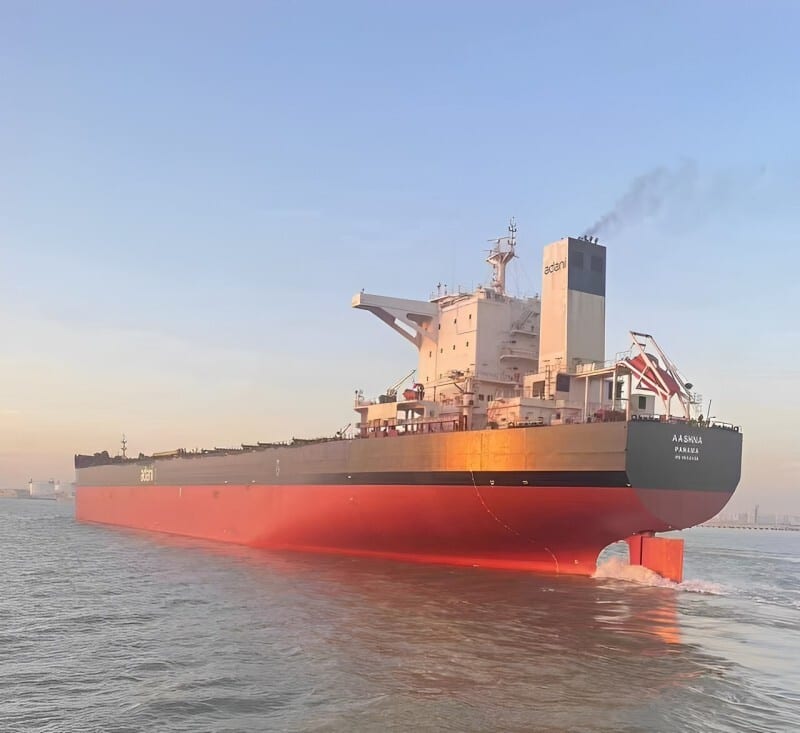
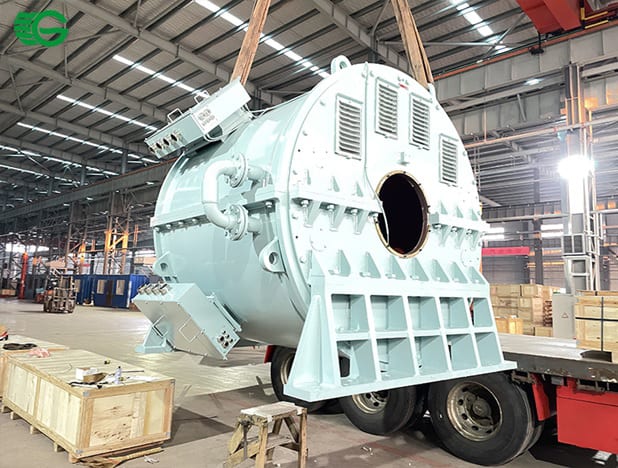


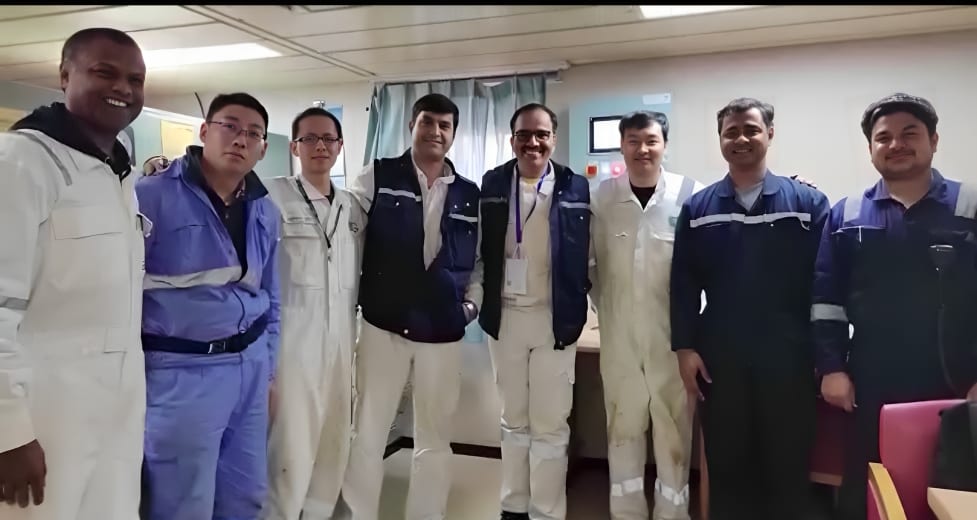
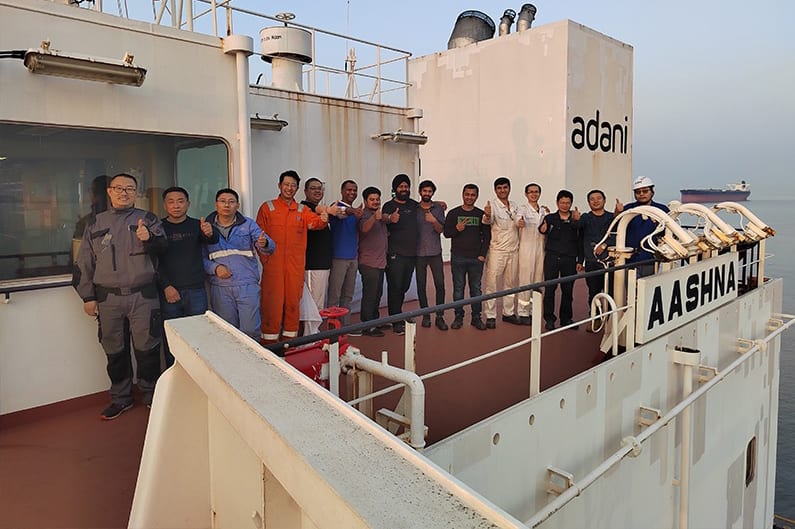
The estimated fuel oil saving is 466 mt/year and CO2 reduction 1,468 mt/year.
Newsmakers
Adani Ports & SEZ
Setting Sail Into History
From Morocco to Mundra: record-breaking fertiliser shipment makes waves.
Jaydeep Shah
Adani’s Mundra Port proudly celebrated a historic achievement as it welcomed the largest-ever fertiliser shipment to dock at its premises. On 22 Nov 2023, a groundbreaking moment unfolded in India’s maritime trade industry as 100,282 metric tons of di-ammonium-phosphate (DAP - fertiliser) from Morocco docked successfully. The cargo, carried by the colossal MV Patricia Oldendorff, not only signifies Mundra Port’s exceptional capacity but also showcases its operational prowess.
At the heart of India’s port infrastructure, Mundra Port once again imprints its name in history by handling an unprecedented volume of dry cargo. Departing from Morocco’s Jorf Lasfar port, the MV Patricia Oldendorff carried a weight surpassing any previous cargo record set at an Indian port. This accomplishment underscores the port’s ability to efficiently manage extensive cargo capacities.
Earlier this year, Mundra Port set benchmarks with the arrival of the MV MSC Hamburg, a vessel with a length equivalent to that of four football fields. Furthermore, on 20 Oct 2023, the port achieved a significant milestone by successfully managing 4 million twenty-foot equivalent units (TEUs) containers. These feats mirror Mundra Port’s unwavering commitment to operational excellence and efficiency in India’s maritime trade sector.
Rakshit Shah, Executive Director of Adani Ports & Special Economic Zone Ltd, expressed his elation, stating, “Adani Ports, Mundra, continues to script a saga of achievements through unparalleled performance. Recently, our flagship port completed 25 years of successful operations, setting a new milestone as the first port in the country to handle over 16 million metric tons of cargo in a single month. Moving forward, the port will continue to spearhead progress in its operations.”
Adani Ports & SEZ, India’s largest integrated logistics utility and a part of the diversified Adani Group, remains dedicated to optimising port facilities for the nation’s development. The world-class infrastructure at Adani Ports, Mundra, mirrors India’s burgeoning maritime industry and evolving trade landscape. Mundra Port’s exceptional feat of managing 40 vessel movements in a span of 24 hours stands as a testament to its operational capabilities and efficiency. ●
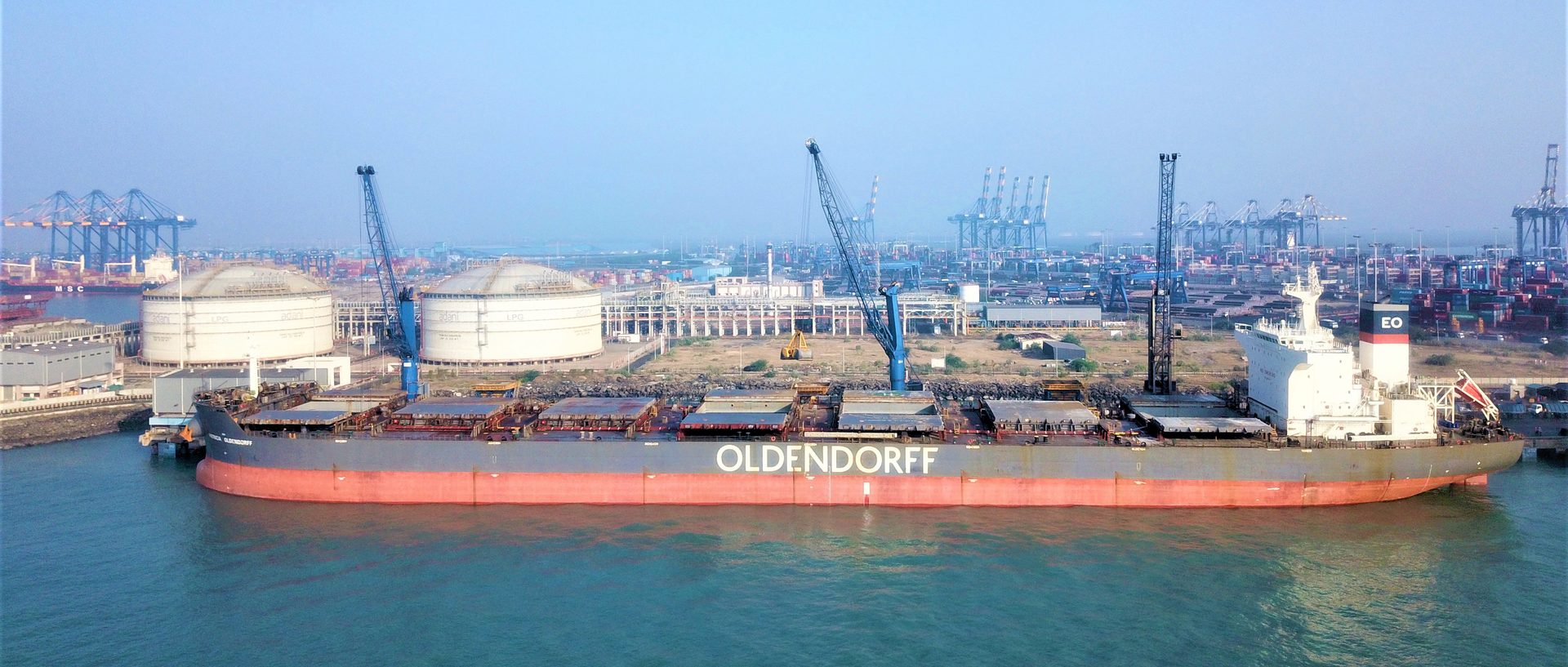
INVESTORS Summit
“In Uttarakhand, we are only getting started.”
Pranav Adani’s address at the Global Investors Summit in Dehradun, Uttarakhand, on 8 Dec 2023, in the presence of Prime Minister of India Narendra Modi and Chief Minister of Uttarakhand Pushkar Singh Dhami.
It’s always a pleasure to return to Dehradun, which holds a special place in my heart. Every time I visit, I get this feeling that this is a place that seems to get more and more beautiful as the years go by. Like Dehradun, Uttarakhand too is a treasure trove of unforgettable experiences – both physical and spiritual. No other place on earth can claim to be the gateway to so many holy places. No wonder the people call Uttarakhand the ‘Land of the Gods’.
And it doesn’t stop there!
Uttarakhand has now become one of India’s most attractive gateways for private sector investment. It’s not surprising, because the last five years have seen a rapid transformation in how the state approaches growth and development, with an unbeatable combination of
- single-point clearances,
- competitive land prices,
- affordable power and efficient distribution,
- highly skilled manpower,
- close proximity to the National Capital Region
- and a very stable law & order environment.
To top this, Uttarakhand is blessed with an approachable and efficient administration under the able stewardship of Hon’ble Chief Minister Shri Pushkar Singh Dhami-ji, who has the strong and committed backing of our visionary Prime Minister Shri Narendrabhai Modi-ji. At no time in our history have the people of India so emphatically demonstrated their confidence and faith in a leader as they did for Modi-ji in the recent round of elections.
Hon’ble Chief Minister, your determination to make Uttarakhand a socio-economic powerhouse is paving the way for a growing number of business houses to invest in this state – and the Adani Group is privileged to be one of them.
Currently, our presence in Uttarakhand spans gas distribution and cement manufacturing. Through IOAGPL, the Joint Venture between Indian Oil and Adani Total Gas, we are providing natural gas to all customer segments, including domestic, industrial and commercial. Also, to facilitate the transition to cleaner fuels – in line with the Hon’ble Prime Minister’s vision to have 15% natural gas in India’s energy mix by 2030 we propose to convert 200 state transport buses to environment-friendly CNG buses, thus contributing to keeping Uttarakhand the way it is now – green and clean.
In the cement sector, we will invest in excess of INR 1,700 crore to expand Ambuja Cements’ existing capacity in Uttarakhand. We will invest INR 300 crore to take our Roorkee plant’s capacity from the current 1.2 million tons per annum to 3 million tons per annum by the end of next year. We will also invest around INR 1,400 crore to set up a grinding unit with a capacity of 4 million tons per annum – and we expect this will create around 6,000 direct and indirect employment opportunities in the Rishikesh-Dehradun area.
In the Kumaon region, we have taken up a project of over INR 800 crore to install smart meters for the Uttarakhand Power Corporation, in line with the Government of India’s plan to replace conventional electric meters with smart prepaid meters.
We are also exploring the development of a 1,000-acre land parcel in Pant Nagar. The possibilities include infrastructure for an aero-city, an inland container depot, logistics warehousing and a knowledge park.
Hon’ble Chief Minister, we are only getting started. The Adani Group is excited by the great range of investment opportunities now emerging in Uttarakhand – in parallel power distribution, digital services, roads and highways, multimodal logistics, renewable energy – and much more. Our ongoing projects here are just the first steps in building a long-term relationship of trust and progress with Uttarakhand.
On behalf of the Adani Group, I thank you, Hon’ble Prime Minister and Hon’ble Chief Minister, for the inspiration, guidance and support you are providing as we do our humble bit to help write the Uttarakhand and India growth stories.
Thank you.
Jai Hind. ●
Beyond Profit
Adani Enterprises’ journey towards a sustainable future is transforming ‘Growth with Goodness’ into reality.
esg
Vivek Panda
I
n the dynamic landscape of progress and development, the Adani Group stands as a beacon of responsible growth. Our diverse portfolio of companies within the Group is united by a steadfast commitment to shaping a future grounded in sustainable practices. Fueled by unprecedented opportunities, our vision encompasses a world where prosperity and responsibility walk hand in hand. We firmly believe that true success is measured not only by profits but also by the positive impact we make on our planet and its inhabitants.
The remarkable journey of Adani Enterprises Ltd (AEL), evolving from a modest trading company to a diversified organisation, is a testament to our unwavering dedication to instigate meaningful change. Operating across vital infrastructure sectors that play a pivotal role in India’s economic growth, we are determined to propel the nation towards a green and sustainable future.
Our pursuit of a greater purpose is underscored by a deep sense of responsibility towards our nation and its people. In our vision, prosperity and responsibility are intertwined facets of growth and development. At AEL, we recognise that success transcends profits alone. We incubate businesses with the aim of creating industry leaders and sectoral transformers, contributing to nation-building and benefiting future generations. Our commitment to environmental stewardship, ethical growth, and societal well-being is integral to our identity.
This summary offers a glimpse into the progress we have made in our journey of ‘Growth with Goodness’ and outlines our initiatives and outcomes on environmental, social, and governance aspects.
What Gets Done Gets Measured
We have charted our aspirations for the future, establishing well-defined targets aligned with global sustainability frameworks. Regular reviews of our progress ensure that we remain on course to build a sustainable tomorrow.
key highlights in FY 2022-23
26%
Reduction in Energy Intensity (Per Rupee of Turnover)
63%
Increase in Women Employees on the Payroll (as Compared to FY 2021-22)
35%
Procurement From MSMEs
95%
Global Score (S&P Global CSA)
67%
Employees Covered Under Skill Upgradation Training
12%
Average Increase in Employee Remuneration (excluding KMPs)
100%
Sites Assessed on Health and Safety
72%
Employees Covered Under Human Rights Training
55%
Reduction in Emission Intensity (Per Rupee of Turnover)
28%
Reduction in Water Intensity (Per Rupee of Turnover)
13%
Share of Renewable Energy
82%
Waste Avoided From Going to Landfill
Environment
Social
Governance
2,03,519 Kilolitres
Treated Waste Water Used for Landscaping
13 Lakh
Trees Planted
INR 17.75 Cr
Spent on CSR
B
Score Received in CDP for Taking Coordinated Action on Climate Issues
5
Independent Directors on the Board
0
Complaints on Ethics and Integrity
0
Instances of Corruption, Bribery or Anti-Competitive Behaviour
0
Complaints Related to Breach of Data Security and Cyber Security
9
Committees Chaired by Independent Directors
AEL’s ESG targets and performance
Our commitment to sustainability drives us to regularly review and optimise our strategies and targets, using well-defined metrics to measure our impact accurately. We seek positive change, aspiring to build a more equitable future for all.
* This reporting year, we have expanded our operational businesses from three to six, leading to a notable increase in turnover. Consequently, we have observed a significant reduction in energy, emission, and water intensity, reflecting our commitment to sustainability and resource efficiency.
** Energy, emission, and water intensity, calculated per rupee of turnover. ●
The writer is AVP, Sustainability & Climate Change, AEL.
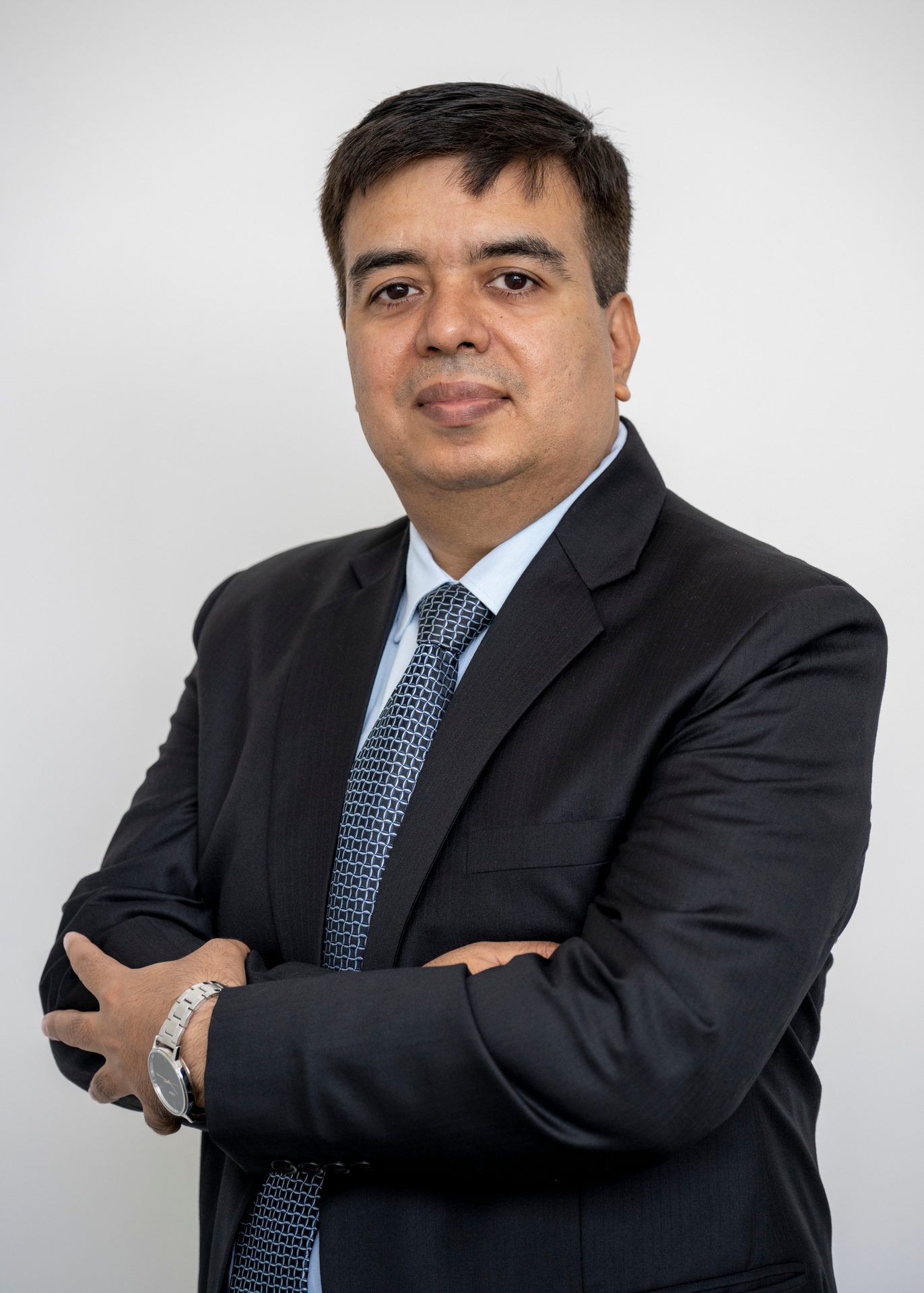
At AEL, we incubate businesses with the goal of creating industry leaders and sectoral transformers. We strive to build enduring enterprises that will stand the test of time, contribute to nation building and benefit future generations.”
Unveiling Excellence
Mundra Petrochem’s World Quality Week sets the stage for excellence with triumphs and transformations.
go beyond
Debendra Nath Pal
In the dynamic realm of business, the word ‘quality’ resonates profoundly, guiding us to surpass predefined expectations. At Mundra Petrochem Ltd (MPL), quality is not just a word but the cornerstone of our sustainable business strategy, identified as the key to thriving in a competitive market. At the heart of the Adani Group, quality takes centre stage as the fundamental value steering our business towards continuous growth.
As we delve into the rich history of World Quality Month, initiated by the American Society for Quality in 2010, we find a global commitment to raising awareness of quality, continuous improvement and performance excellence. World Quality Week 2023 was celebrated at MPL with unwavering enthusiasm and meticulous planning by the Project Quality Assurance & Control (QAC) team.
From conceptualising the campaign to gaining formal approval, the journey began in Sep 2023, culminating in a week-long celebration from 4-9 Nov 2023. To infuse the spirit of quality across all levels, MPL engaged its workforce through teasers, informative posters and a captivating screen saver. Daily Quality quotes, messages from top management, including Jeet Adani and Jayant Parimal (CEO-MPL), further reinforced the commitment to quality.
As part of the celebration, MPL organised engaging competitions with unique names like ‘Quality Gyani’, ‘Quality Mantra’, ‘Quality Paheli’, and ‘Quality Milap’. Winners were recognised with certificates of appreciation and exclusive gift vouchers, fostering a sense of pride and competition among the team. World Quality Day witnessed the distribution of quality badges, symbolising the collective commitment to quality as a moral responsibility. An interactive quality connect session with addresses from the CEO and Head of HR emphasised the paramount importance of quality. The pinnacle of the celebration was the signing of the ‘wall of quality’ poster by MPL team members, a tangible demonstration of their commitment to excellence. As we conclude this celebration, let us continue wielding the swords of quality with a touch of excellence, united and resolute in our pursuit of global competitiveness. Our team stands firm, showing courage, trust in quality, and the highest level of commitment to achieve excellence—a testament to quality being the best business plan. ●
The writer is Head - QAC, Mundra Petrochem Ltd.
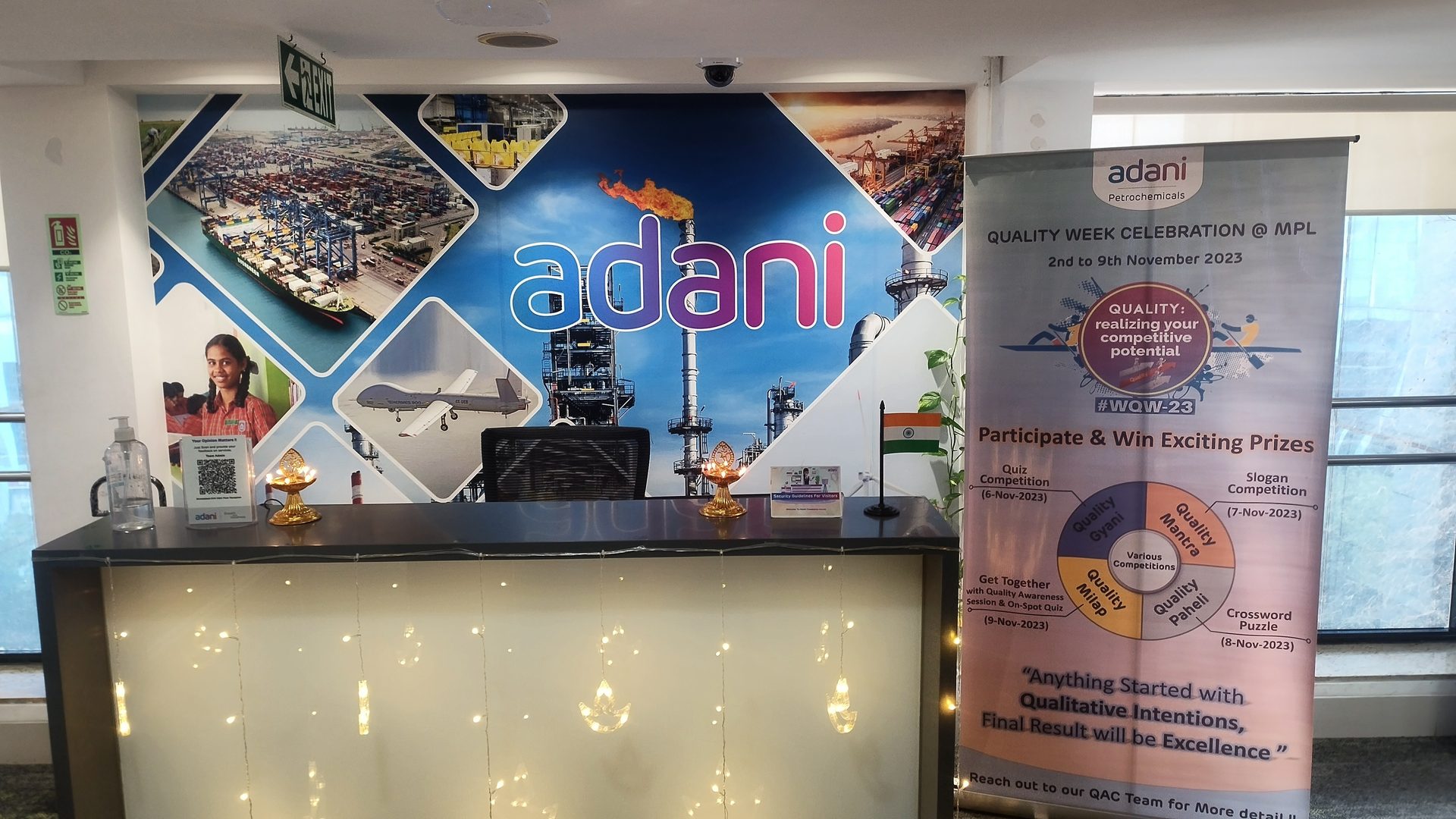

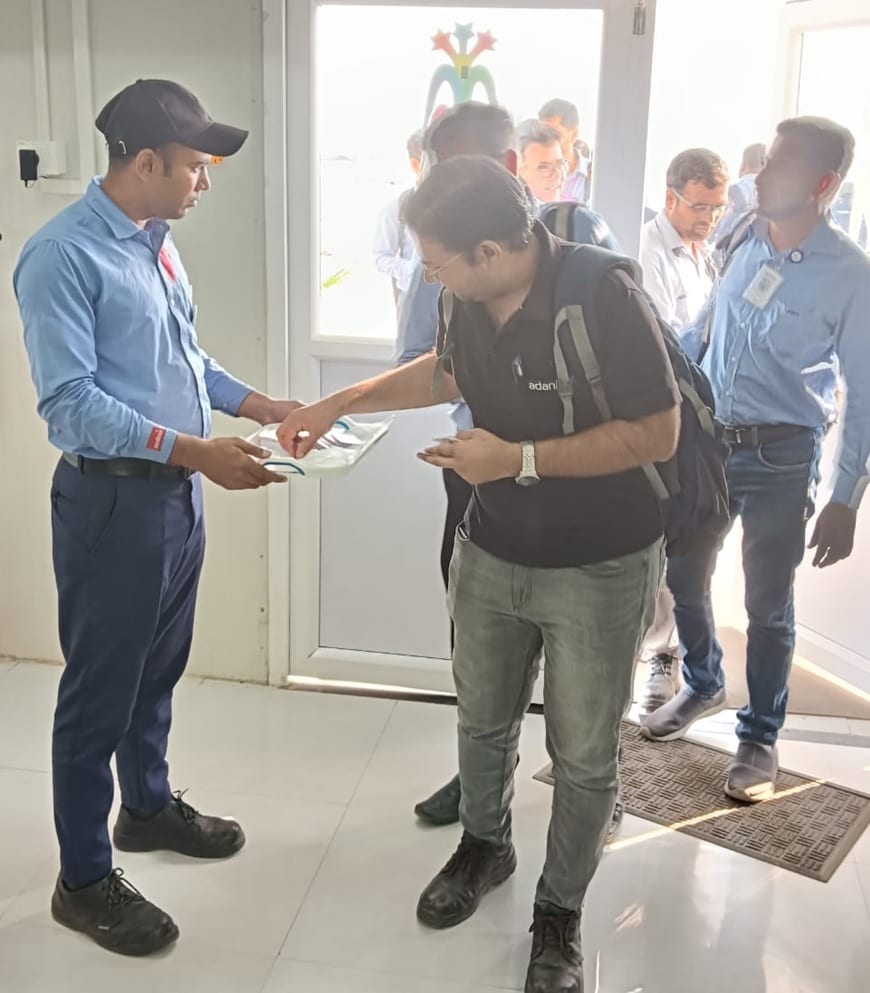
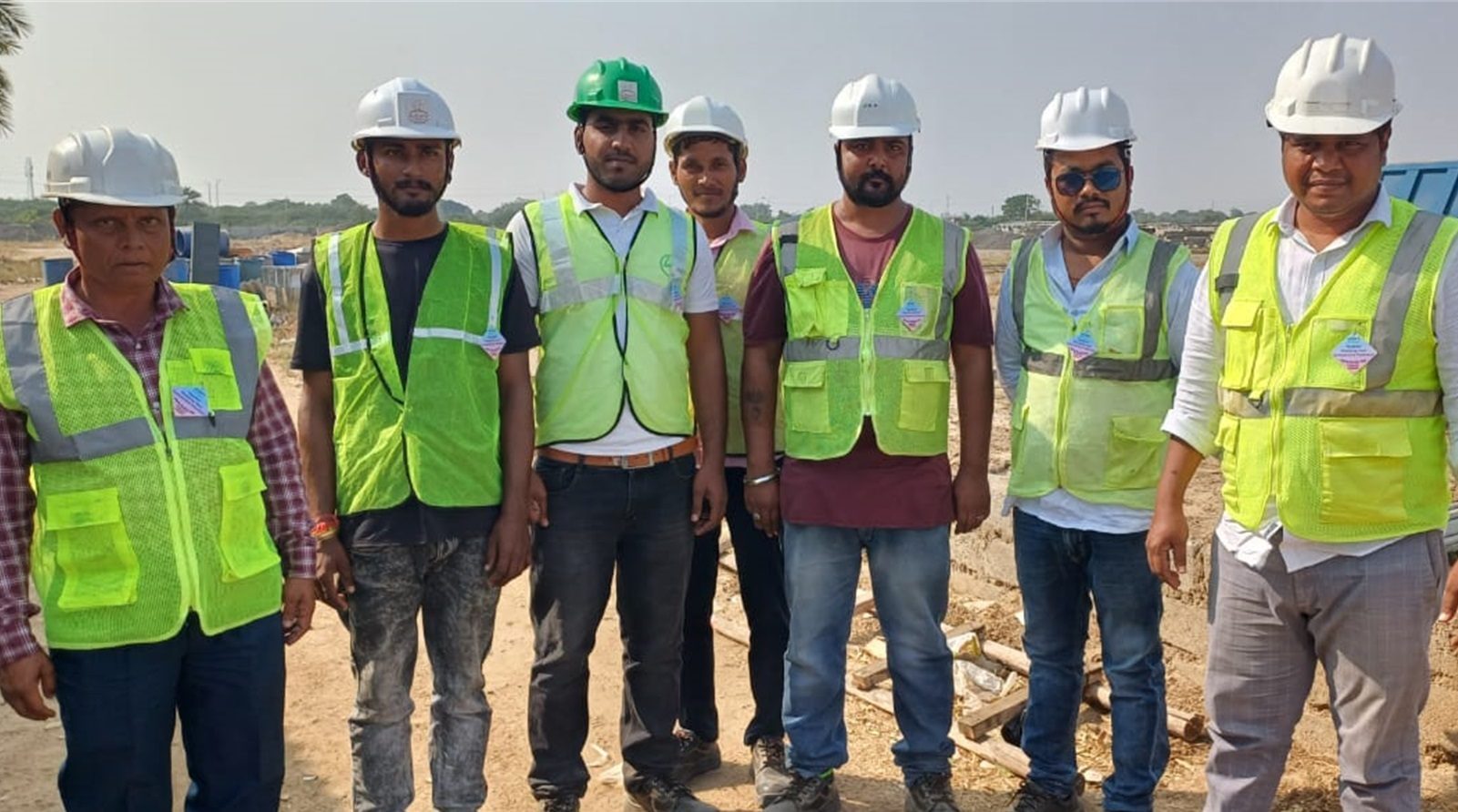
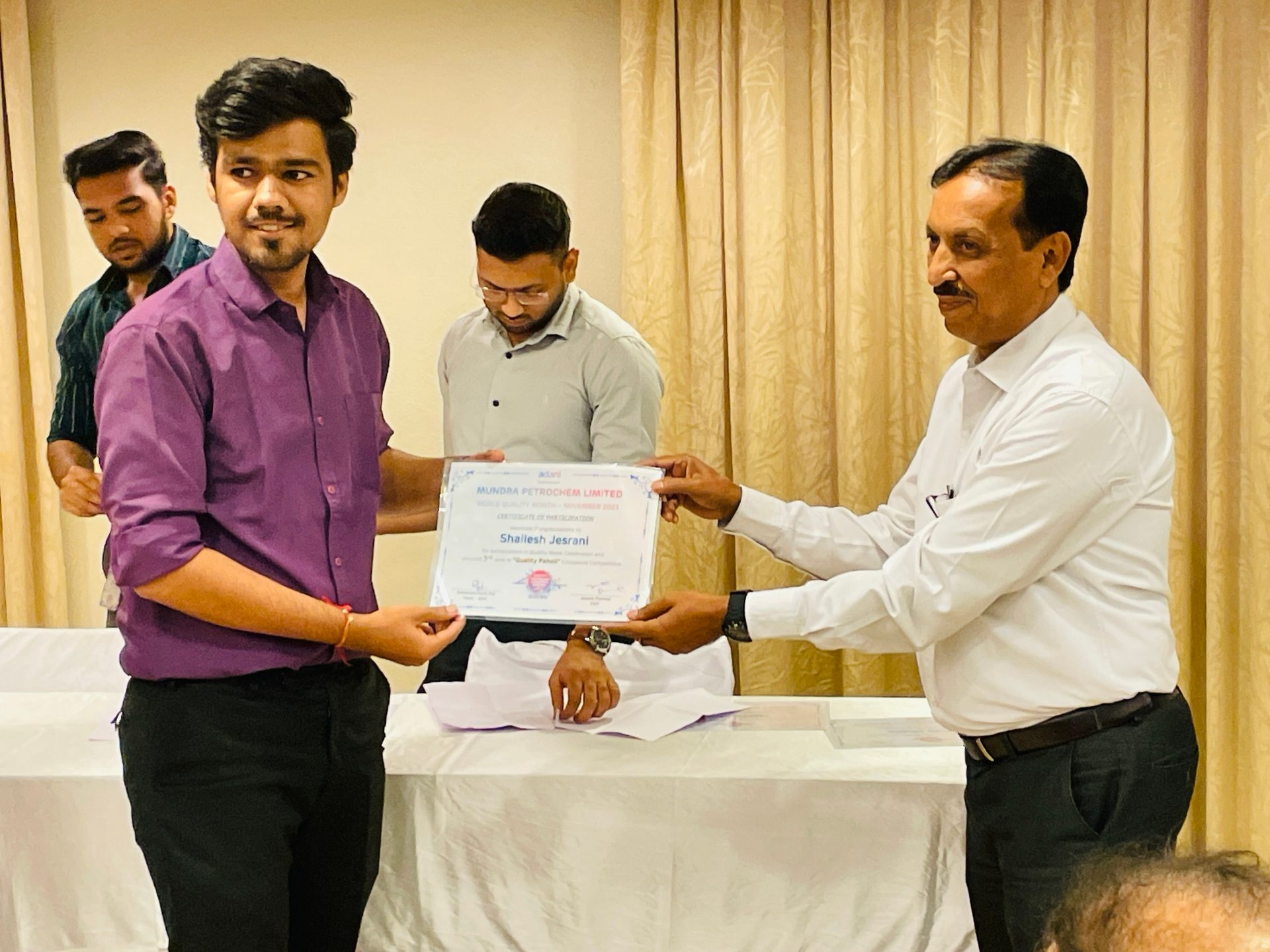
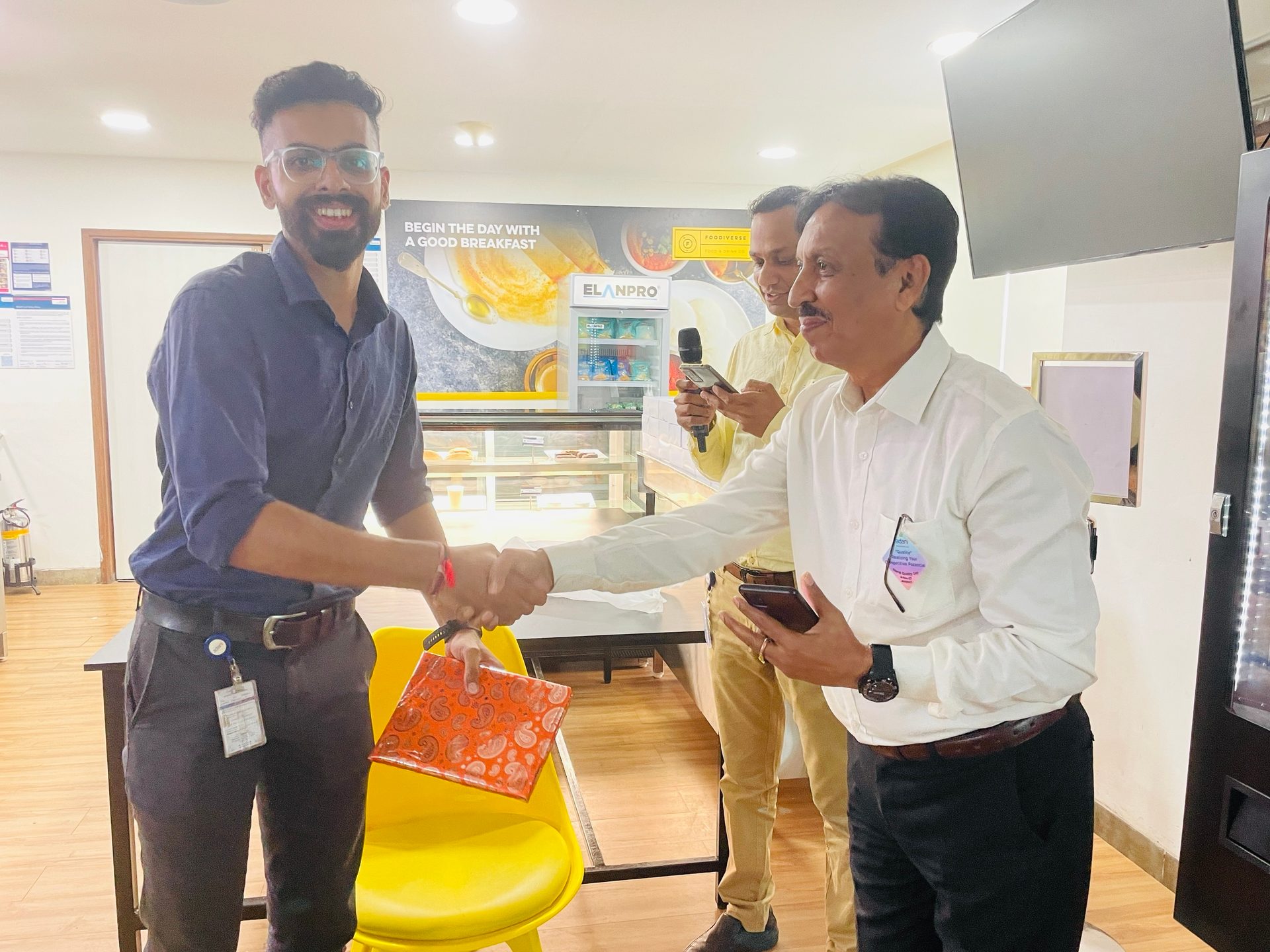
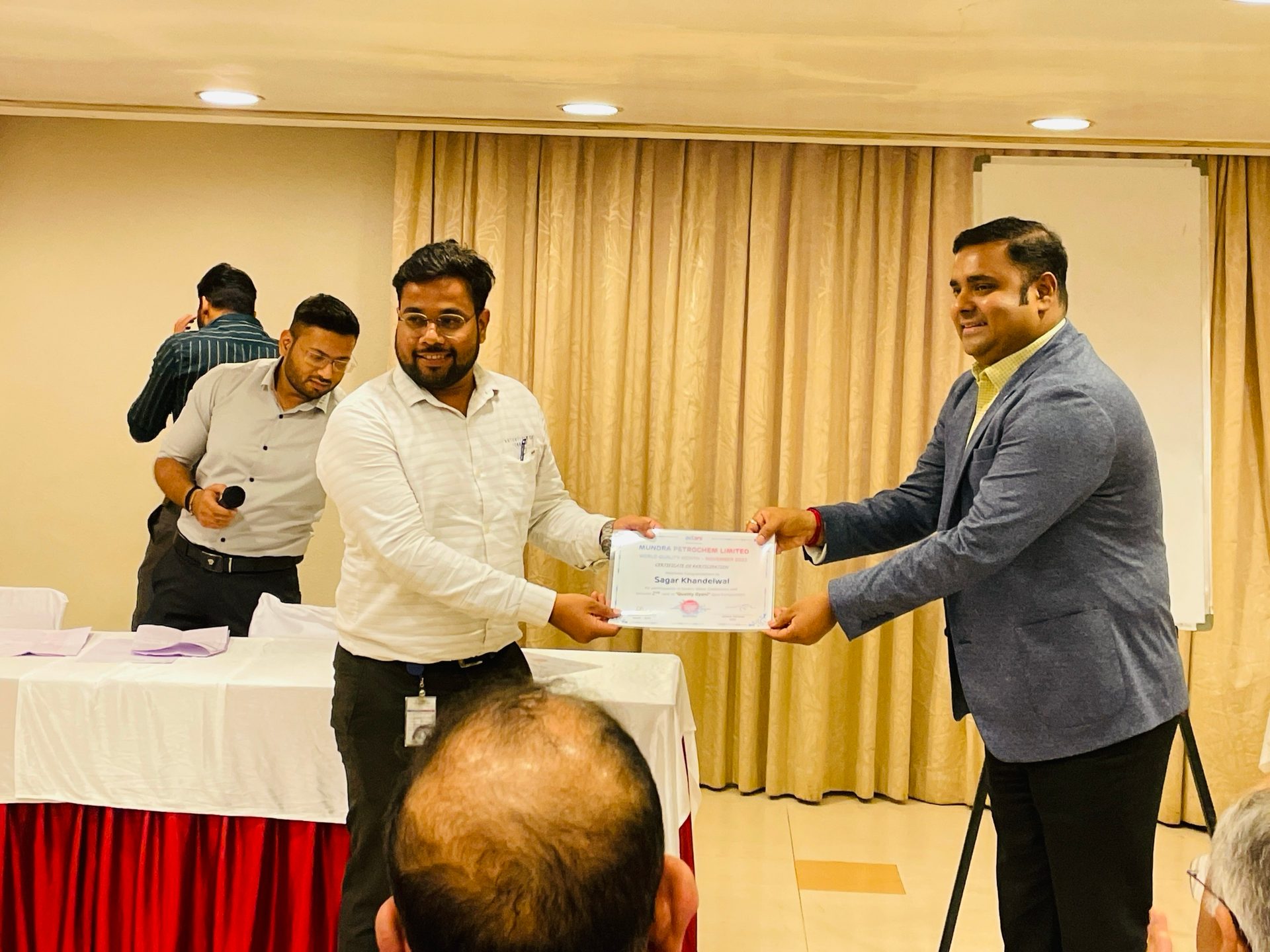

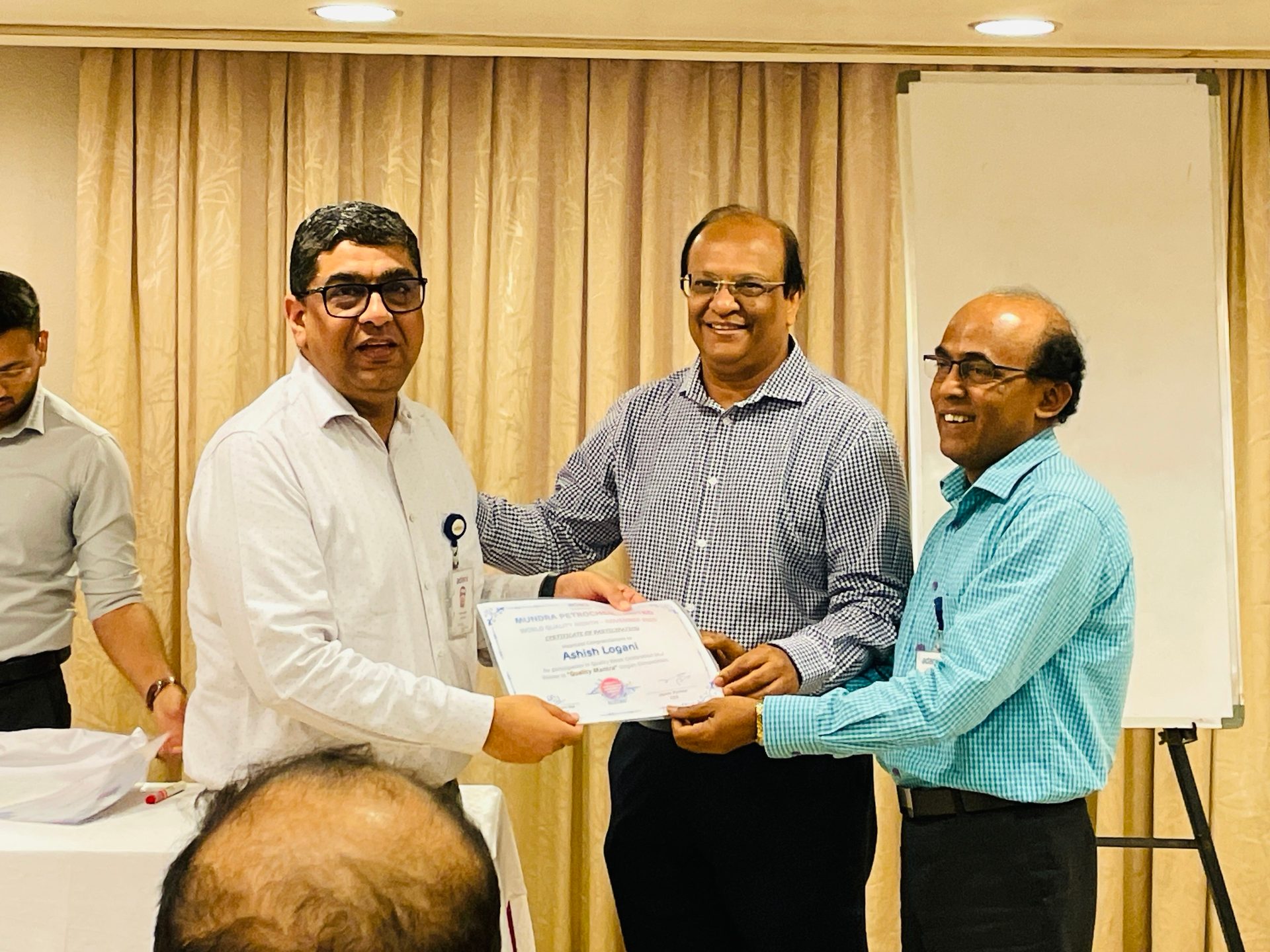
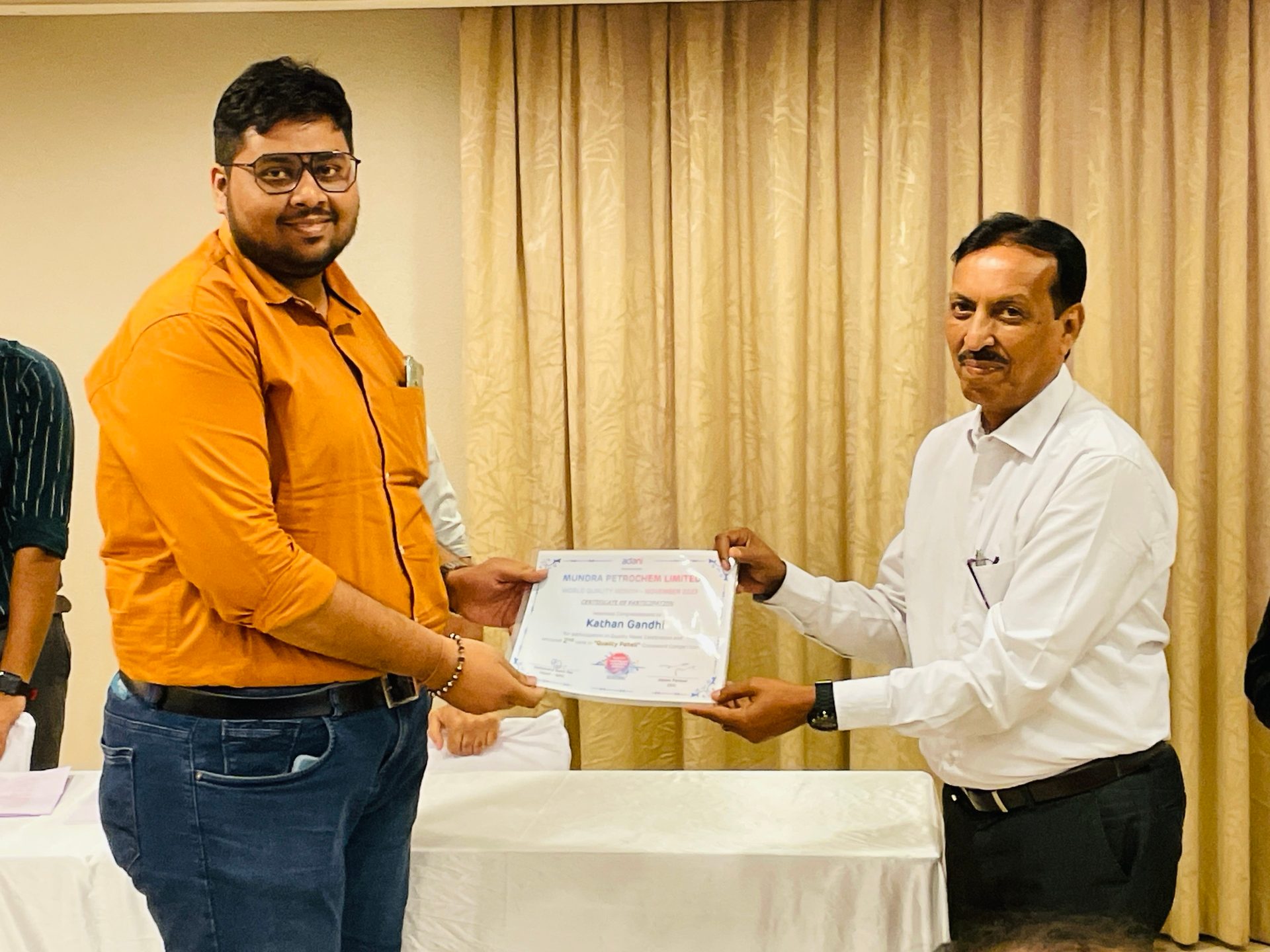
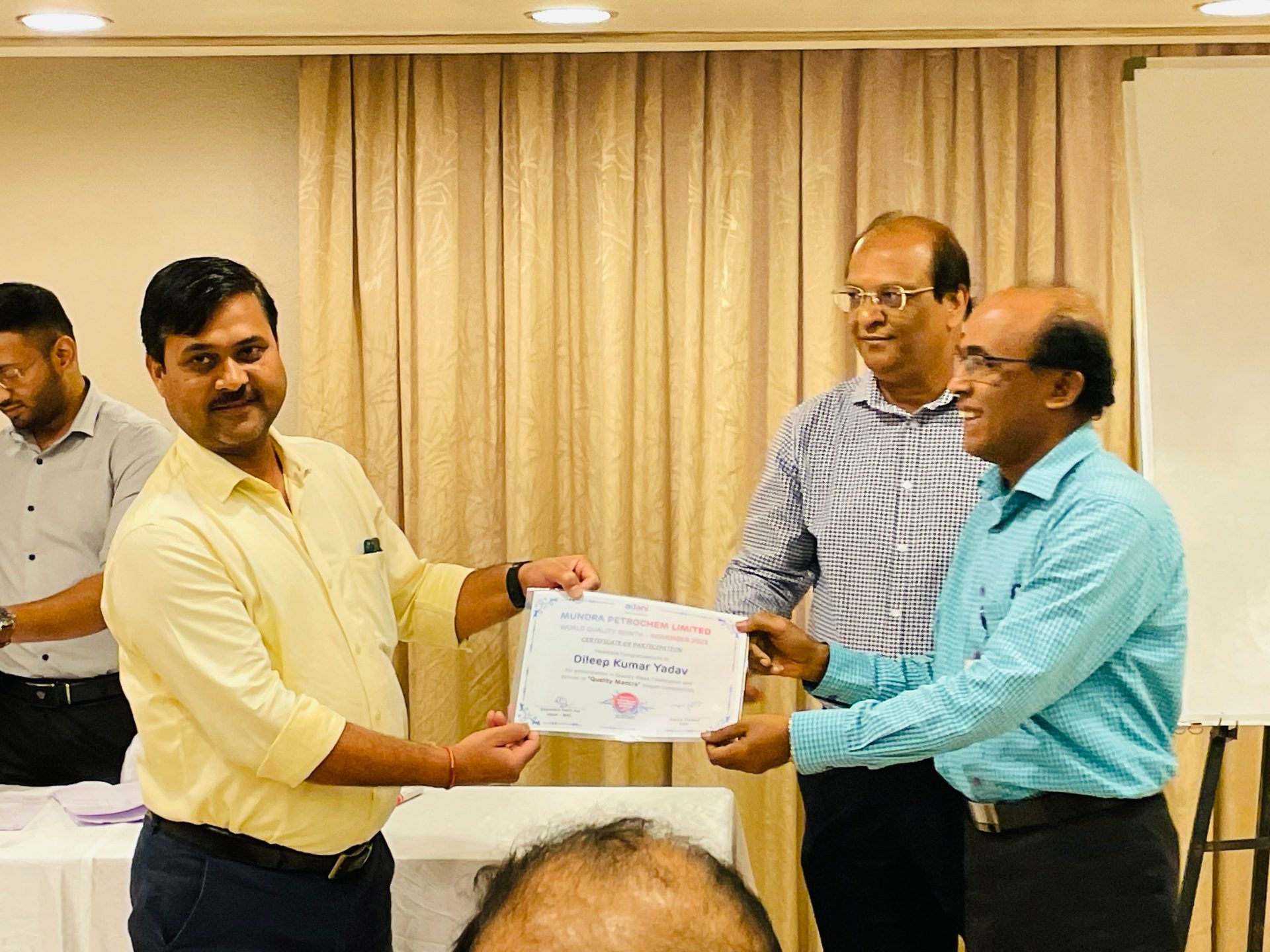
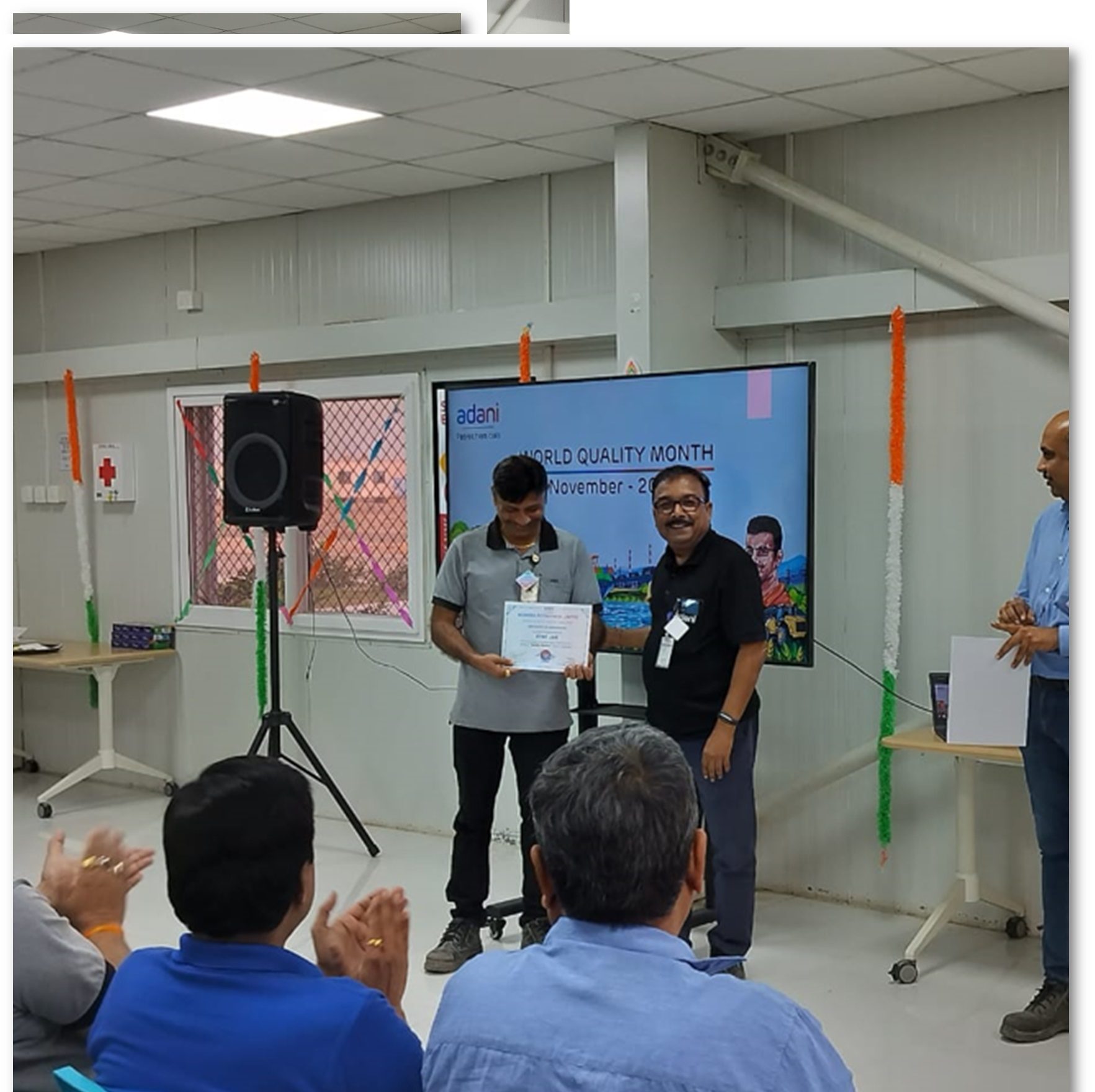
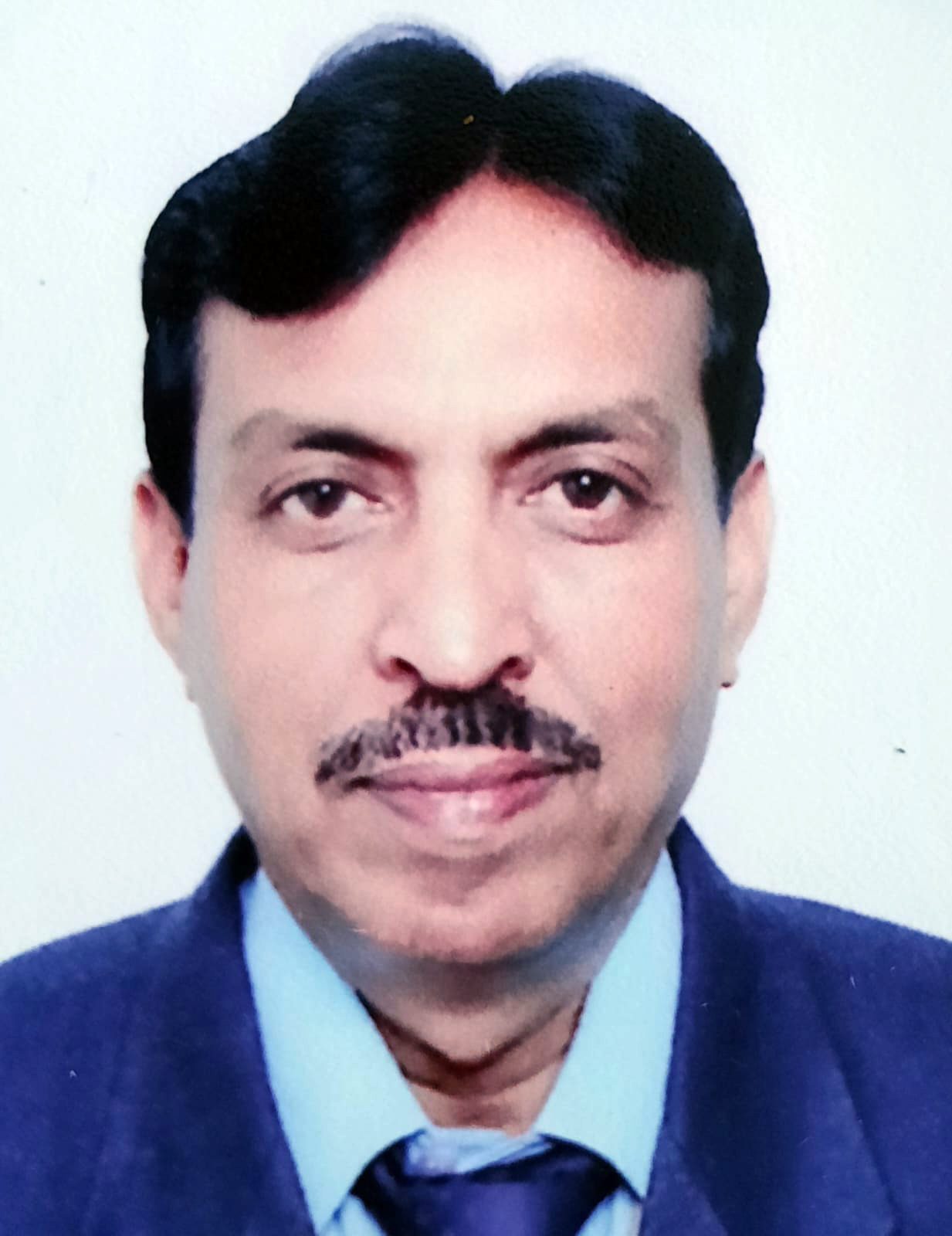
In the vibrant tapestry of business, quality is not just a word; it is our guiding light, the essence of our sustainable journey. At MPL, we carve our path to excellence, wielding the Swords of Quality with courage, trust and an unwavering commitment to achieve global competitiveness.”
Shining Bright
Adani Green Energy illuminates the global stage, as a solar powerhouse, signalling a radiant future in sustainable energy endeavours.
Newsmakers
Adani Green Energy
Poonam Advani
In an internationally significant achievement, Adani Green Energy Ltd (AGEL) has secured the coveted position of the world’s second-largest solar PV developer, as disclosed in Mercom Capital Group’s Annual Global Report. Boasting an impressive total solar capacity of 18.1 GW across operational, under-construction and awarded projects, AGEL has emerged as a key player in the global renewable energy landscape.
Chairman Gautam Adani expressed a steadfast commitment to large-scale renewables, emphasising the development of an integrated manufacturing ecosystem and green hydrogen solutions. With a visionary investment plan of USD 75 billion by 2030, the Group aims to reach 45 GW of renewable energy capacity, further propelling India’s journey towards decarbonisation.
The report, encompassing data from Jul 2022 to Jun 2023 and compiled by Mercom Capital Group, a distinguished clean energy research firm, spotlights the top ten global solar PV developers. Leading the chart with a total capacity of 41.3 GW is the French energy major TotalEnergies. AGEL’s remarkable rise underscores its pivotal role in shaping India’s green future and solidifies its position as a formidable force in the dynamic realm of solar energy. ●
Discover The Essence Of Opulence
A symphony of luxury, leisure, and community, where every sunset marks a perfect blend of fitness, fine dining, and family entertainment - Belvedere Golf and Country Club
clublife
Poonam Advani & Sania Ahmad
P
icture a pleasant evening after work. You have walked to the Belvedere Golf and Country Club with your family and are now sitting at the restaurant by the pool. As a soft breeze blows, you sit back and let your mind be finally at peace, while the kids dip their feet in the pool and chat. A server brings you fresh juices and a delectable selection of starters as the silence is only disturbed by the musical tinkling of cutlery and the soft murmur of guests sitting inside the restaurant. And after a long, tiring day, you finally relax.
Nestled in the heart of Adani Shantigram, the Belvedere Golf & Country Club is an oasis of peace, of fun and recreation, of fitness and food, of wellness and networking, not just for the residents of Shantigram but also for visitors. It stands as a testimony to luxury, tranquility and unparalleled amenities. Surrounded by a protective cover of lush green, the club’s modern architecture is simple yet elegant, a balm for the eyes and the soul, welcoming you with open arms.
If opulence had a synonym, it would be spelled Belvedere. In the words of Belvedere's Marketing Director Chandan Bharti, “The spacious and vastly beautiful scenery the club provides along with top quality facilities and various services is one of the main reasons why people choose our establishment. On top of that, the play area for people of all ages and the good, healthy food which is served in the restaurants are also an additional luxury for our customers. In terms of a comfortable and relaxing stay, the Belvedere Club does not fail.”
Ever since its inception 7 years ago, the Belvedere Club has been home and sanctuary for the entire Adani Group family, thanks to the many facilities that they have to offer. There is something here for everyone.
For Sports Enthusiasts
If you eat, sleep and repeat fitness, and have a penchant for a quick game of tennis or football on cozy Sunday winter afternoons, the Belvedere Club is just the place for you. It boasts four international standard synthetic lawn tennis courts with night playing facilities, a box sports arena for playing cricket, volleyball and football, and a multipurpose air-conditioned sports hall with 4 international standard badminton courts convertible into a full-fledged basketball court. Debasmit Khanda, who works at Adani Natural Resources, has found his fitness needs fulfilled in the Belvedere Club.
For those who like quiet sports, the club does not just have a golf course with driving distance of over 220 yards and separate bunker and practice greens with 22 driving bays and night facility, it also has a golf academy where you can train under experts and hone your skills. Vivek Kumar who works at Adani Energy Solutions has been enjoying his Sunday golf game at the Club for quite some time.

Belvedere Club is a place where shuttlecocks soar in the best badminton court. A place that’s an oasis of camaraderie. Friendly coaches, vibrant ambiance where the workday stress dissolves, for me, the Belvedere Club is a place where, amidst games and laughter, friendships flourish, and every swing is a refreshing exercise for the body and mind." - Debasmit Khanda
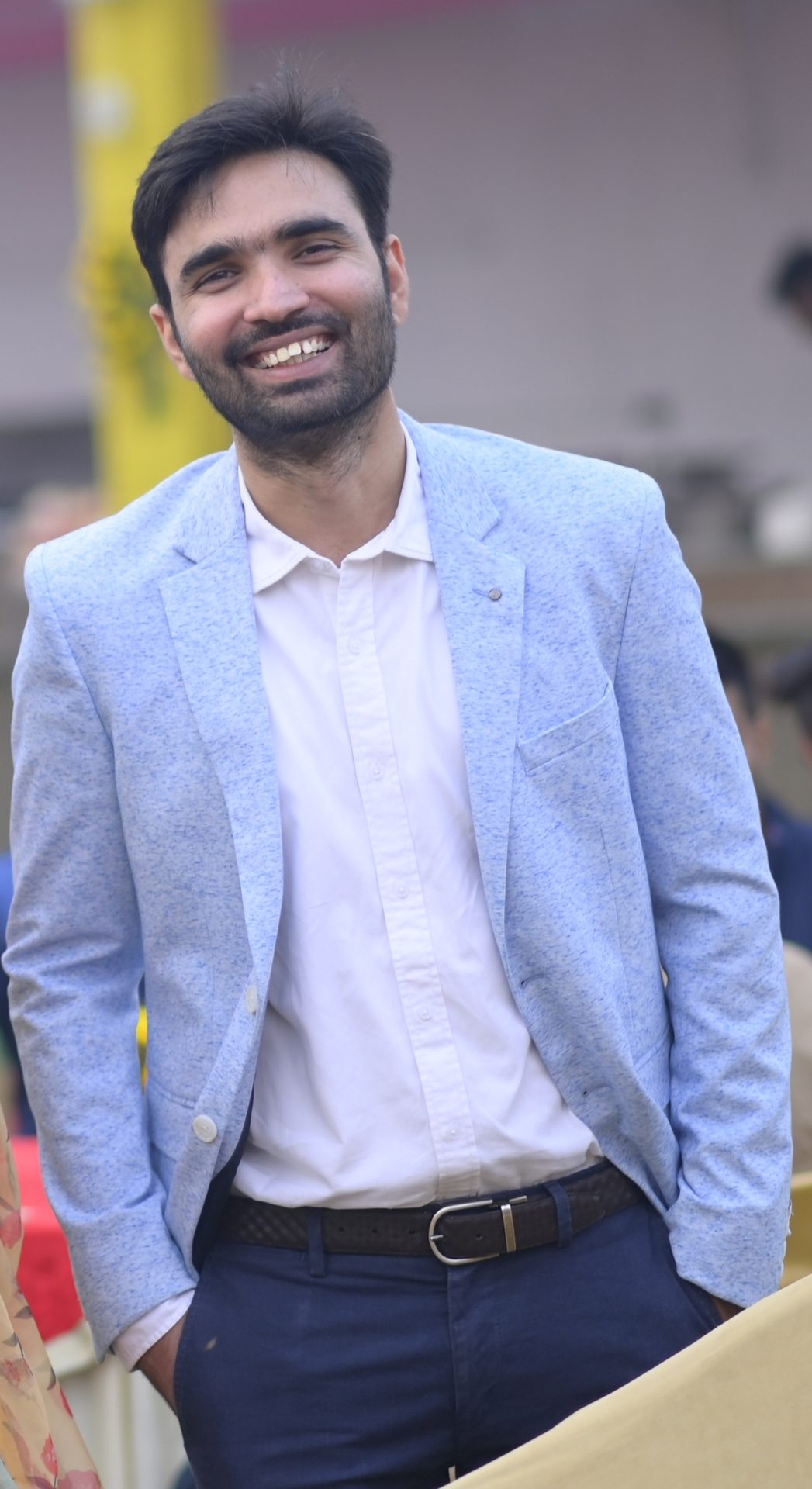
My time at the Belvedere Golf Club has been a blast! The top-notch training setup and cool outdoor sessions with expert trainers make learning golf a breeze. Rolling in with buddies, we have not just played golf, we have made unforgettable memories. Belvedere isn’t just about recreation. It’s about friends, fun, and picking up golf skills. Can’t recommend it enough for a good time on the greens!” - Vivek Kumar
For Fitness Afficionados
There is no way you are going to miss out on completing steps or burning those extra calories with the Belvedere Club around. Once you are done breaking a sweat in the international standard gym, you can cool down with a couple of laps in the infinity swimming pool overlooking the lush green meadows of the golf course. There is always the steam and sauna chambers to rejuvenate your body later.
Working in the IT team at Adani Energy Solutions, Subhash Bankey has long been a member of the Belvedere Golf and Country Club and truly finds it a ‘haven of excellence’. “The club’s architecturally stunning buildings create the perfect backdrop for an exceptional experience,” Mr Bankey says. Being a member of the club, he has access to a wide range of facilities—from the swimming pool to the spa and diverse range of indoor and outdoor sports, including badminton, lawn tennis, squash, table tennis, bowling alley, volleyball, and cricket.
And if you are not somebody who likes excessive exercise, there is always calming yoga for you to try, followed by a serene walk in the 1.5 km long promenade stretching around the golf course, with sit-downs available for you to soak in the views and the quiet.

Personally, I take great pleasure in the top-notch facilities of our table tennis and gym, both equipped with the finest gear, including the renowned technogym from Italy. The lodging rooms, situated on the first floor, provide spacious accommodations with sit-outs that offer a delightful view of the inviting swimming pool. It’s a place that truly has it all.” -Subhash Bankey
For Food Connoisseurs
From live mocktail bars for an evening out with friends or your colleagues from work to whole Indian dinners for the family night out, Belvedere Club offers cuisines to satisfy all palates.
The Fairway — Indian fine dining restaurant with a picturesque view of the golf course, Spice Kitchen — India & Oriental specialty restaurant exclusive for club members, and Café Belvedere that offers all-day multi-cuisine dining along with lavish Sunday brunches and buffet dinners for both members and non-members are just some of the many offerings. For your coffee dates or barbecue parties, there is always The Palms- Lounge and Coffee Shop and the BBQ Hut.
Vijil Jain works in the Finance and Accounts team at Adani Energy Solutions and satiates his sugar cravings by a quick visit to the club. “Life is uncertain, so eat dessert first,” Mr Jain says.
If this is not picture perfect, we don’t know what is.

At Fairway & Belvedere Cafe, exceptional culinary craftsmanship meets warm hospitality. From artfully presented dishes bursting with flavours to attentive staff, every detail is a testament to a memorable dining experience. A true gastronomic delight worth savouring.” - Vijil Jain
For Entertainment Maniacs
All work and no play makes Arjun a dull boy. But not if Arjun happens to live in Shantigram and can access the many avenues for entertainment offered by the Belvedere Club. From international standard pool and snooker tables to a full-fledged cards room with an attached bridge room open for members, you will often find Shantigram residents chilling here on weekends.
You are bringing in the kids, you say? The video-games room with PS4, the virtual gaming room, the bowling alley and the air-hockey table are bound to keep them occupied to give you some moments alone. And there is always the in-house movie theatre for family movie scenes.
The Belvedere Golf and Country Club is a haven where memories are made, bonds are affirmed, and life is lived to the fullest. Those who have embraced the many facilities the club has to offer celebrate its commitment to a fine cocktail of nature, luxury, top-notch amenities and comfort. The Club is, truly, an oasis for Shantigram. ●
Elevating Preparedness
Infusing a culture of proactive safety through CPR training.
safety
Shaminder Singh Jamwal
At the Adani Group, safety takes centrestage. Recently, our floor marshals and security staff underwent essential CPR (Cardio-Pulmonary Resuscitation) training, a life-saving technique crucial for emergencies when someone’s heartbeat or breathing stops. This training, conducted by the renowned expert in Critical Care Medicine, Dr Raj Rawal (MBBS, MD), included a live demonstration on 7 Dec 2023.
Under Dr Rawal’s guidance, the floor marshals and security officers actively participated in a concise yet impactful First Aid and CPR training session, reflecting Adani’s commitment to proactive safety measures.
This initiative by the ACH Security & Fire team serves as a testament to Adani’s unwavering dedication to the well-being of its employees. As this chapter unfolded, lives became intertwined with knowledge, readiness, and a collective commitment to safety, leaving a lasting impression on Adani’s ethos of prioritising state-of-the-art safety measures. ●
The writer is Head- Security & Fire.

happenings
The arrival of Zhen Hua 24 marked a major milestone for the Vizhinjam International Seaport in Thiruvananthapuram, as it introduced six cutting-edge Cantilever Rail-Mounted Gantry (CRMG) cranes to enhance port capabilities. In conjunction with the two yard cranes and two Ship-to-Shore (STS) cranes already in operation, these additions signify a leap into a future of growth and prosperity for the port. The CRMG cranes, along with the existing infrastructure, are tailored for swift, secure, and automated container handling, accommodating diverse loads. The port’s order of 24 CRMG cranes underscores a commitment to efficiency, positioning it as a key player in the maritime industry. The initial receipt of 11 cranes in the first phase will set the stage for improved operational capabilities and will underscore the port’s strategic vision for expansion.
In another significant development, APSEZ achieved robust cargo volumes, totalling 36 MMT in Nov 2023, marking an impressive 42% YoY surge. This growth was observed across key cargo categories: dry bulk with over 60% YoY, containers with over 26%, and liquids and gas with over 23%. Over the initial eight months of FY24, APSEZ successfully handled 275 MMT of cargo, reflecting a healthy 21% YoY growth and surpassing 70% of its annual guidance range of 370-390 MMT.
A monumental achievement comes from the Adani International Container Terminal Private Limited (AICTPL), the joint venture terminal at Mundra, which set a national record by handling over 300,000 containers in Nov 2023. AICTPL’s feat of 300,431 TEUs across 97 vessels surpassed its own record from March 2021 by handling approximately 10,000 TEU’s every day.
APSEZ’s other key ports, Dhamra and Ennore, recorded their highest-ever monthly volumes at 3.96 MMT and 65,658 TEUs, respectively. The logistics sector witnessed record growth, with year-to-date rail volumes exceeding 379,000 TEUs and General-Purpose Wagon Investment Scheme (GPWIS) volumes reaching 12.3 MMT, recording the highest-ever monthly GPWIS volumes at 1.72 MMT in Nov 2023. ●
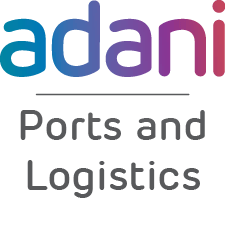
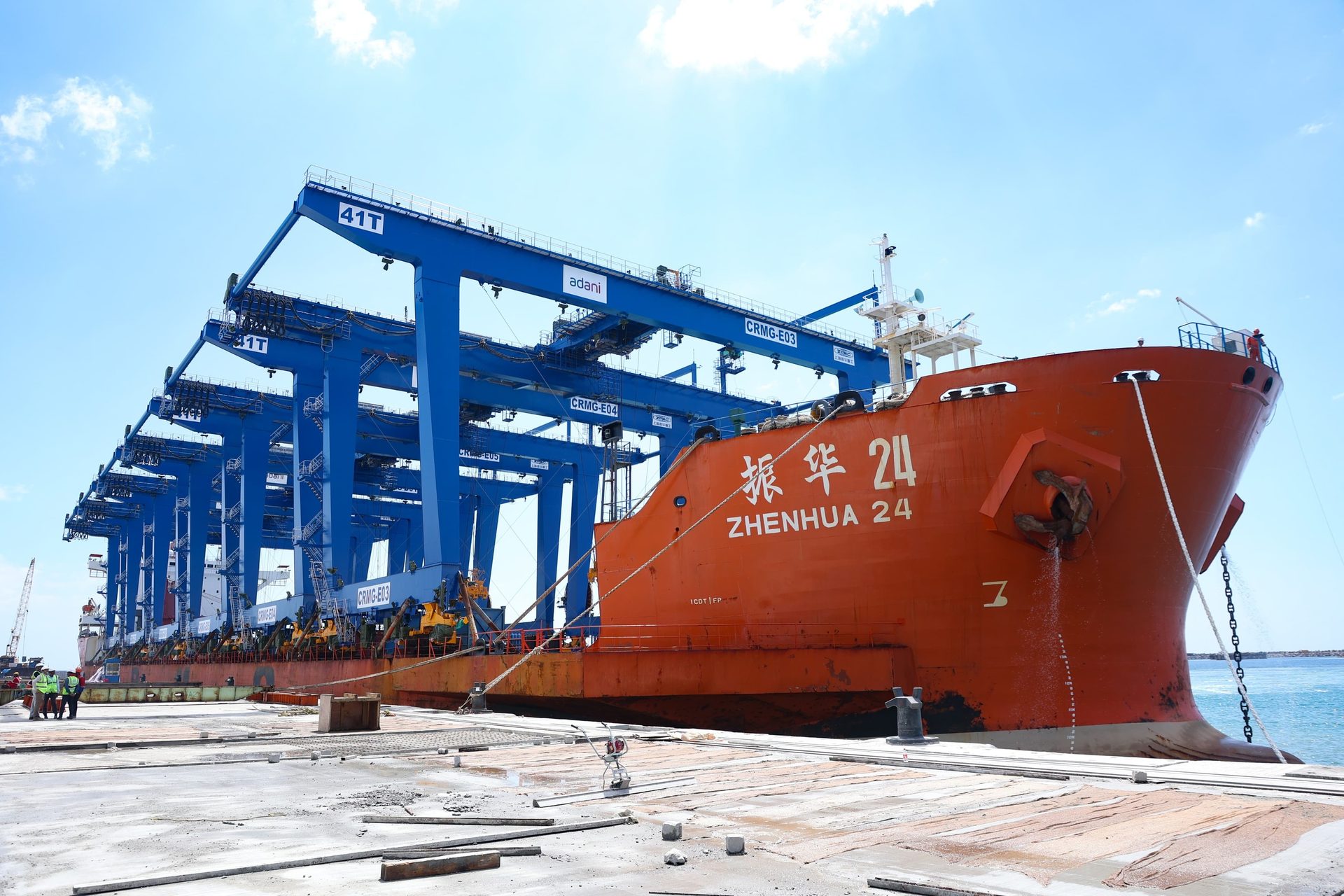
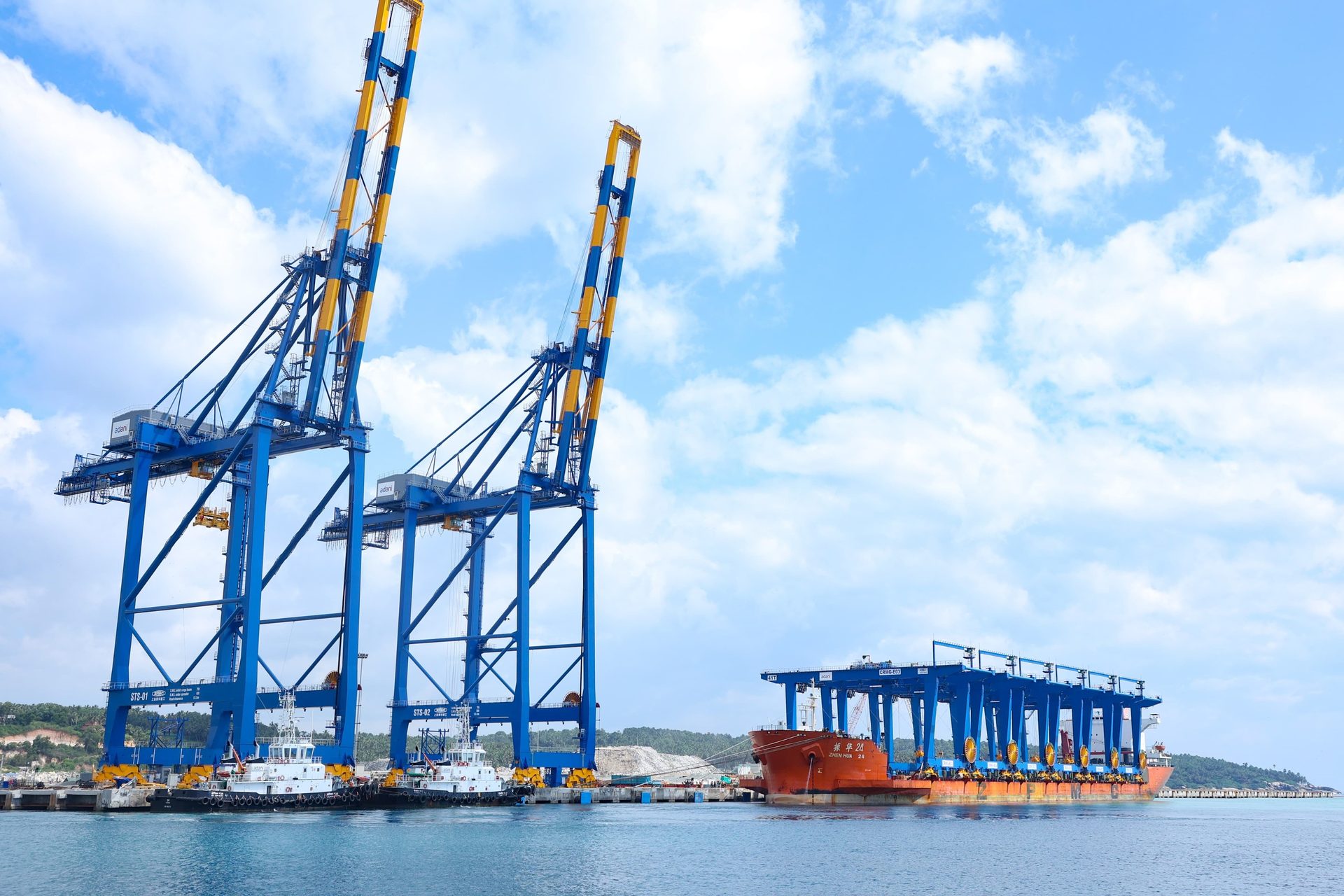
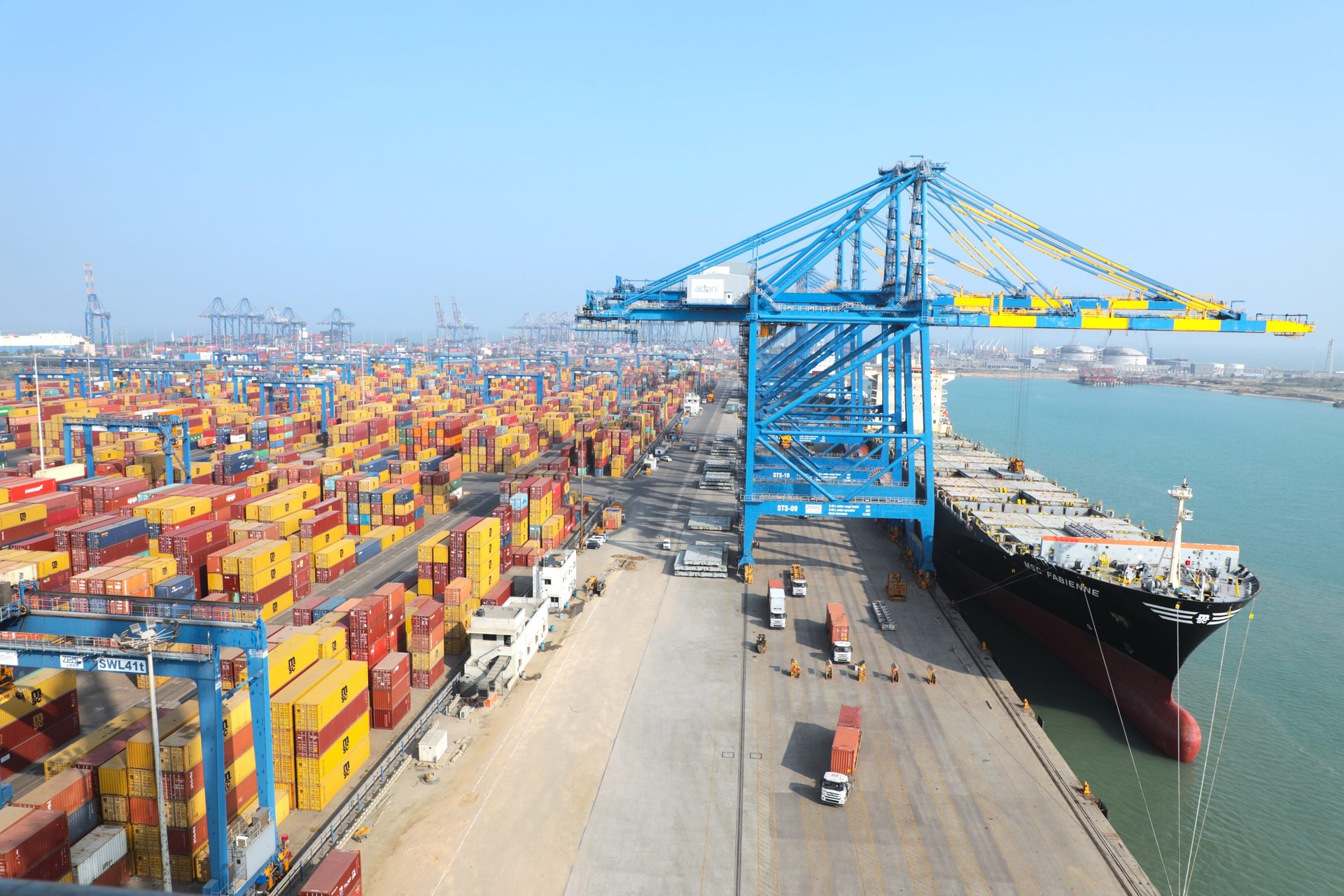

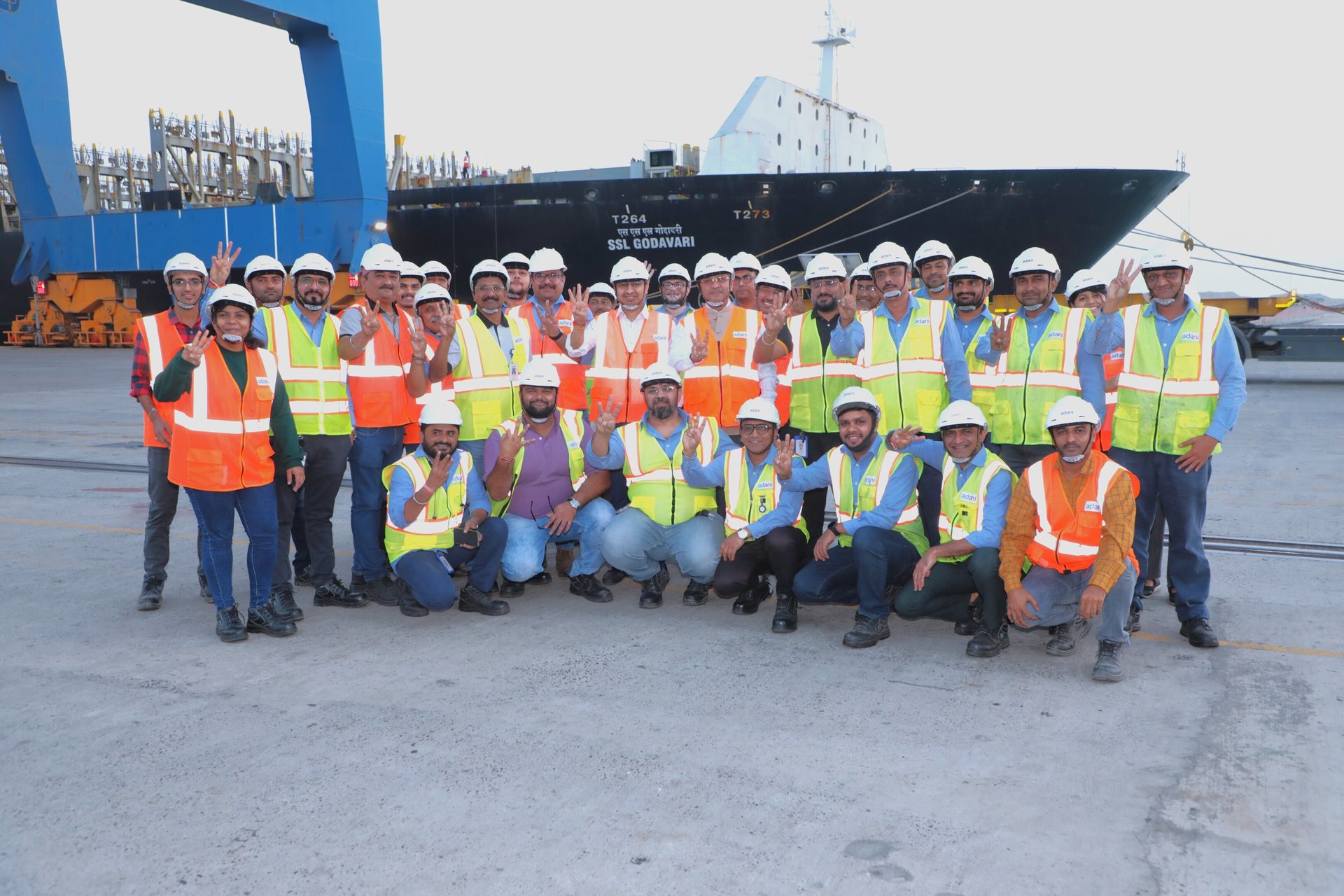
travel
Epic Trails & Himalayan Tales
Embark on a breathtaking adventure to the foot of the Annapurna Mountains in Nepal.
Arpita Vadgama
P
icture this: 3,300 steps, 2,500 steps, 1,700 steps – etched in my memory as the rhythm of the Annapurna Base Camp Trek unfolded. I was in Nepal, for the first time in my life, for the Annapurna Base Camp Trek.
Nestled in the Annapurna Conservation area, this trek promises the best in spring and autumn, offering clear skies and jaw-dropping mountain views. A rule of the Nepali trails – whether you are a lone wanderer or a trio of adventurers, a guide is a must. Porters are optional, but the freedom to pace yourself is a luxury.
Starting in charming villages, the journey winds through forests, bids farewell to the treeline, and becomes a cultural odyssey. Endure the relentless ascent and descent, punctuated by Nepali flats – a little up, a little down. Suspension bridges greet you, adding an extra thrill to the trek.
The Rhythm of The Trek
The route unfolds like a story: Nayapool – Tikhe Dungha – Ghorepani (2,840 m) – Tadapani via Poon Hill (3,210 m to 2,610 m) – Chhomrong (2,140 m) – Dovan – Deurali – Annapurna Base Camp via Macchapuchare Base Camp (4,130 m) – Bamboo (2,345 m) – Jhinu Danda (1,780 m).
Spanning 110 km over nine days, our daily journey of 5 to 8 hours led us from 2,070 m to a staggering 4,130 m. The days kicked off with a hearty breakfast at 7 am, a lunch pitstop, and culminated in reaching our final destination by 3-4 pm. Evenings were a delightful blend of tea, camaraderie with fellow trekkers, and preparations for the next day’s adventure.
The ultimate climb from Deurali to Annapurna Base Camp via Macchapucchare Base Camp tested our mettle. As we braved the incline, temperatures plummeted, and swirling fog enveloped the trail. The final twist came when, on reaching the base camp amid snowfall, we discovered a room scarcity due to miscommunication. The dining hall became our refuge, revealing a night sky adorned with stars and a sunrise casting a golden glow over the mountains.
To trek every day for nine days outside of the comfort zone is not easy and some may even find it boring. The truth is that exploring a place on foot is a very deep experience. You have all the time in the world to be with your own thoughts, to learn about the local life, to meet new people from across the world, to fall and get up, to soak in the most gorgeous and towering mountain views, to barely make it on some days and feel like a winner on others. The sense of achievement upon completing the trek is often overpowered by a sense of humility – the wonders on this Earth are so large and our problems so small. Maybe this is why some of us keep retuning to the mighty mountains for this gentle reminder. ●

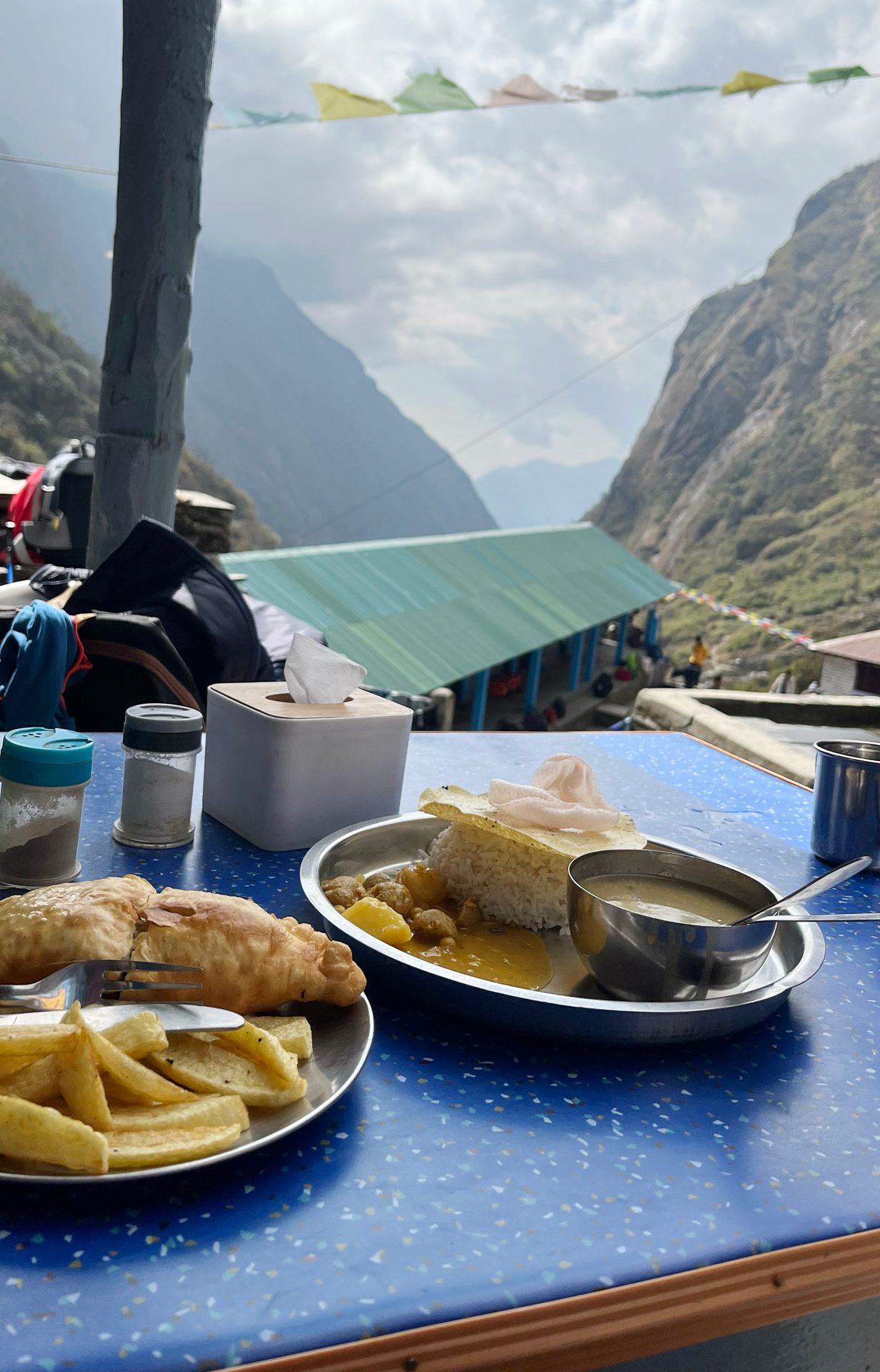

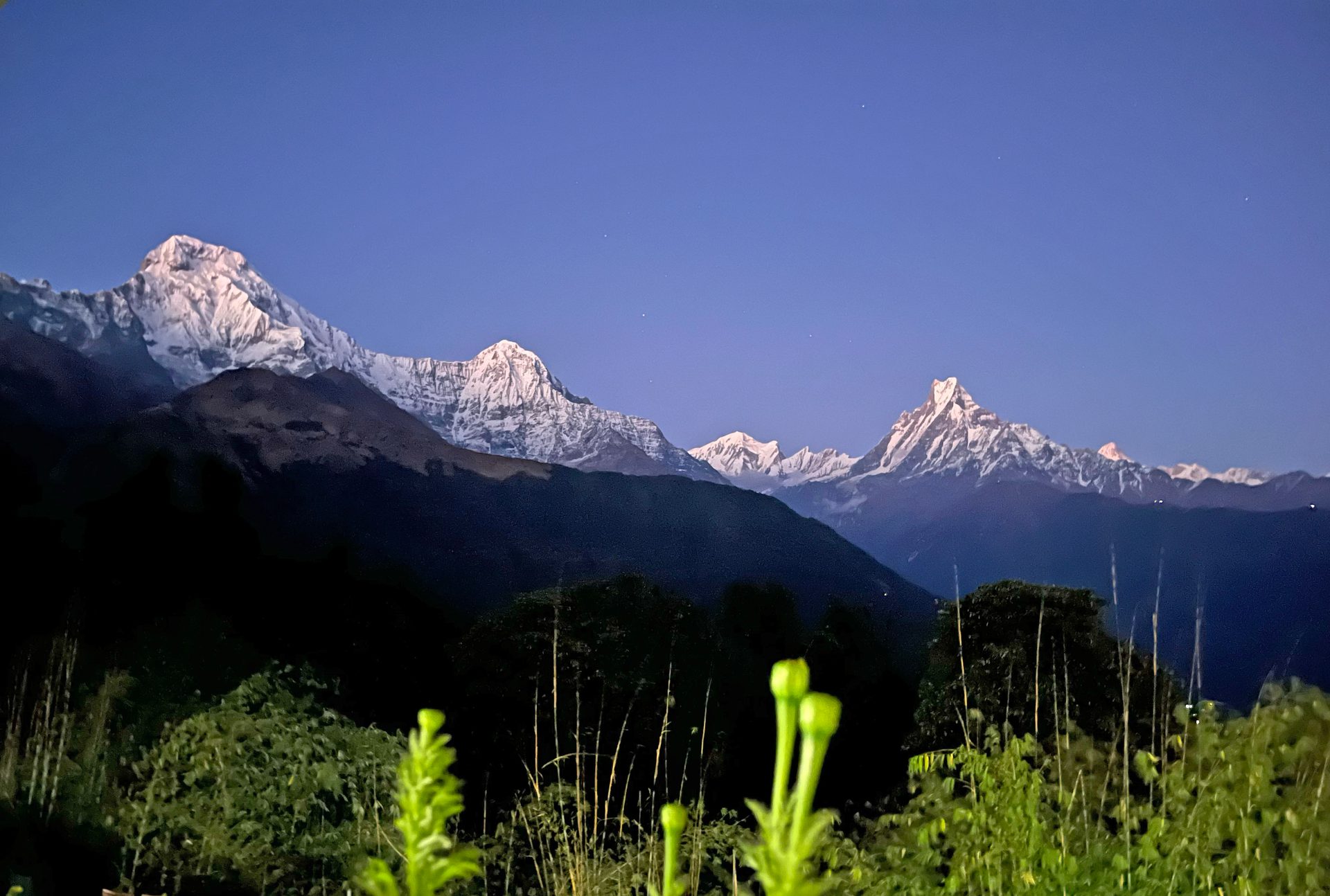

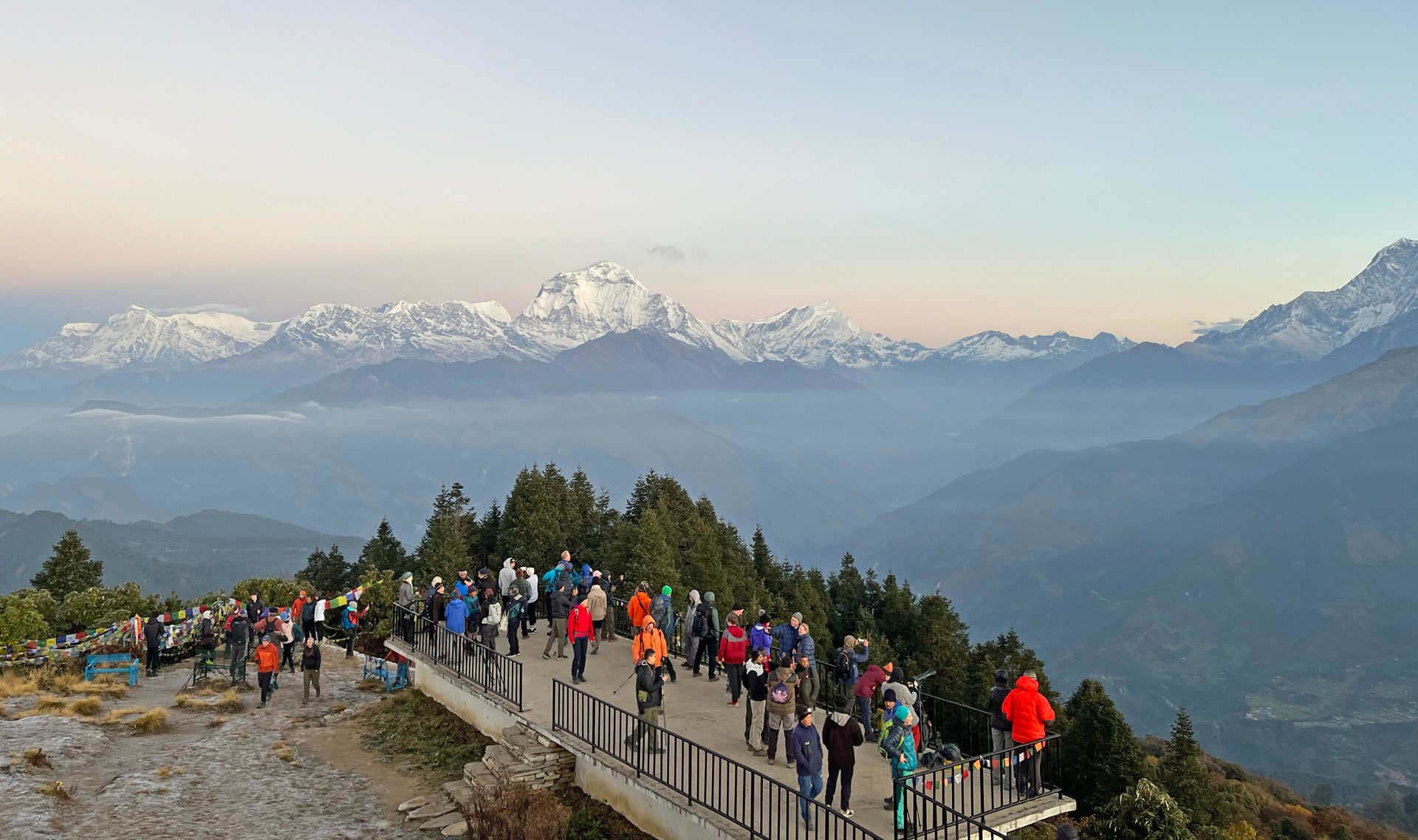
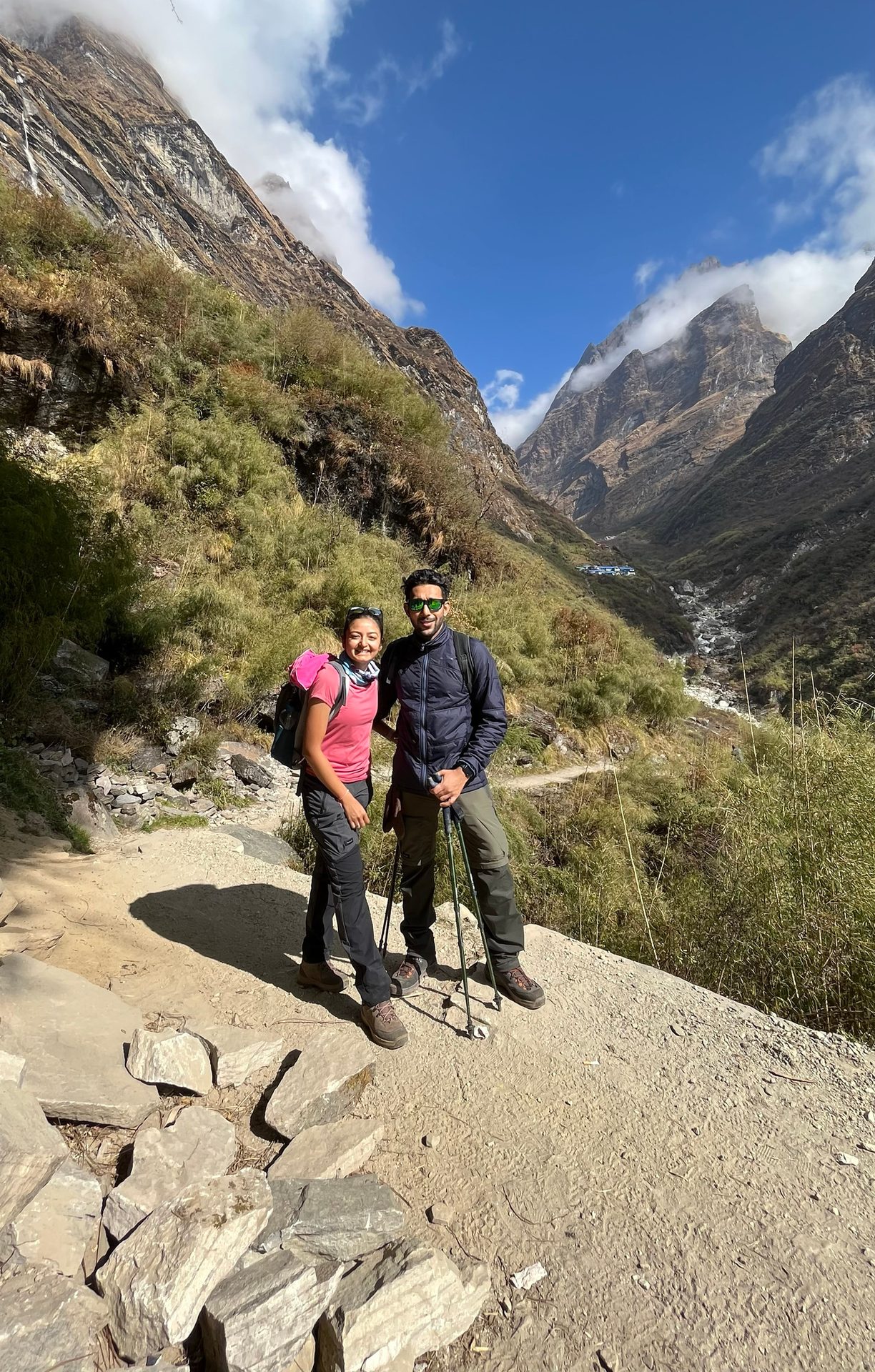
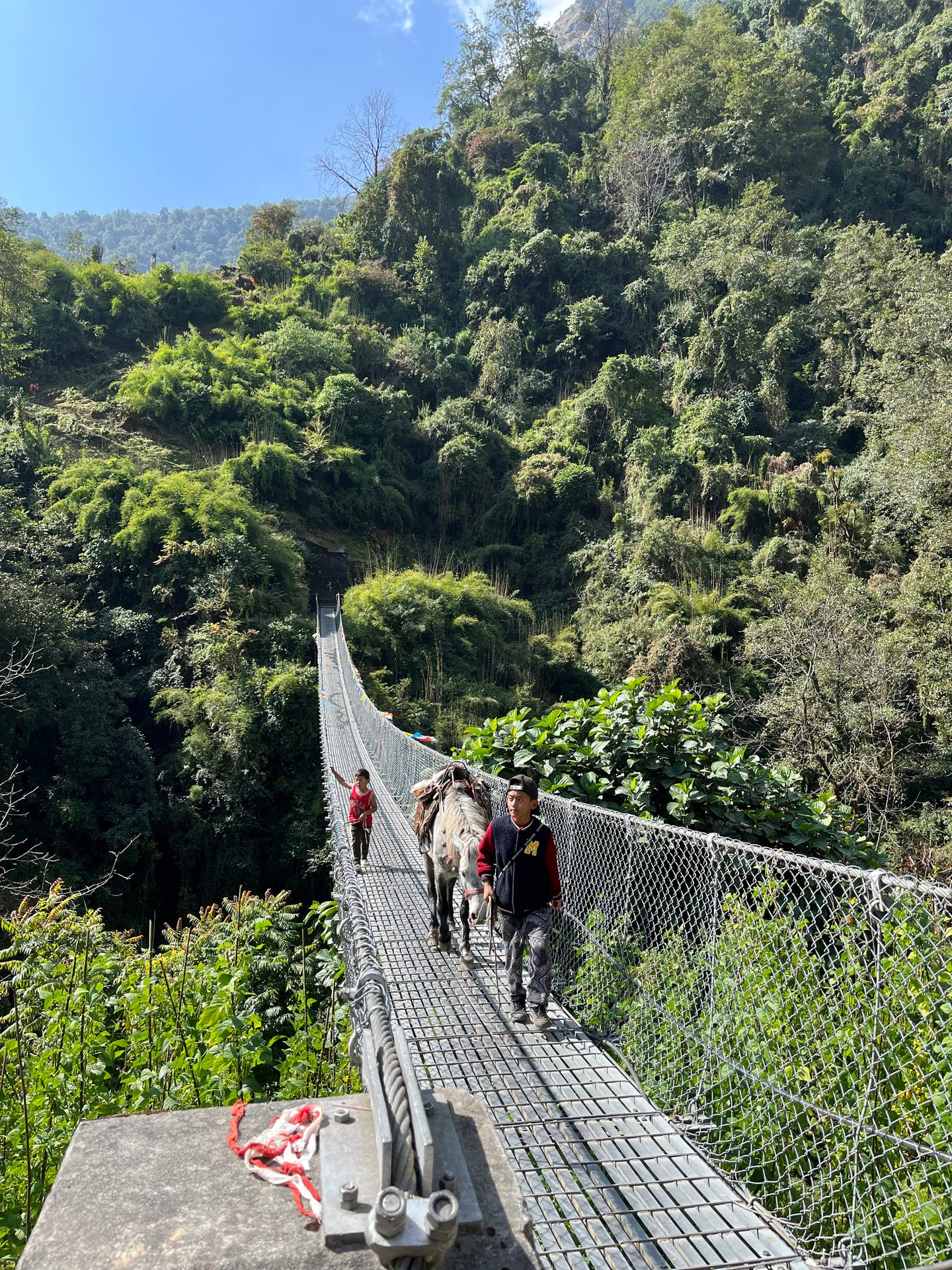
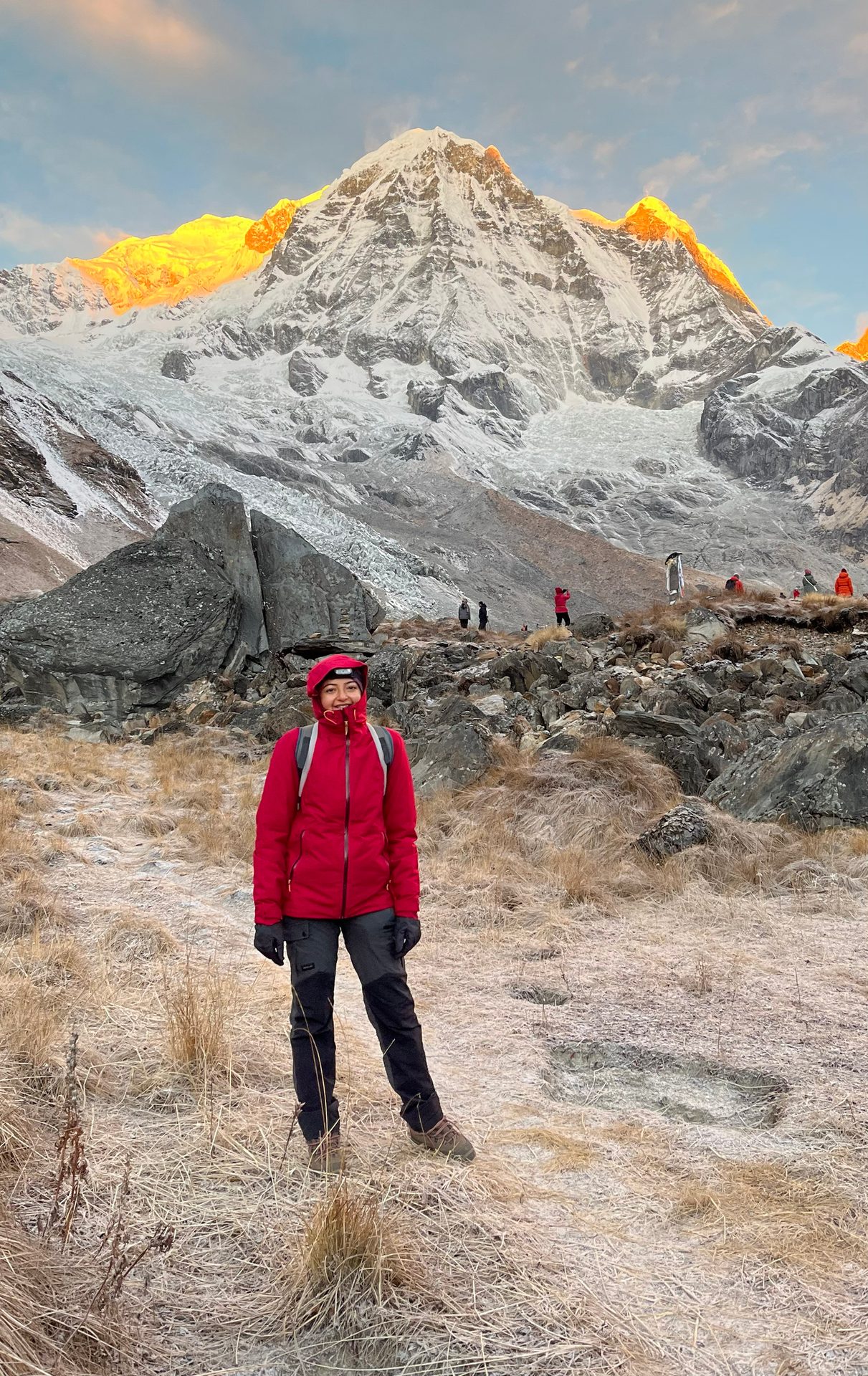
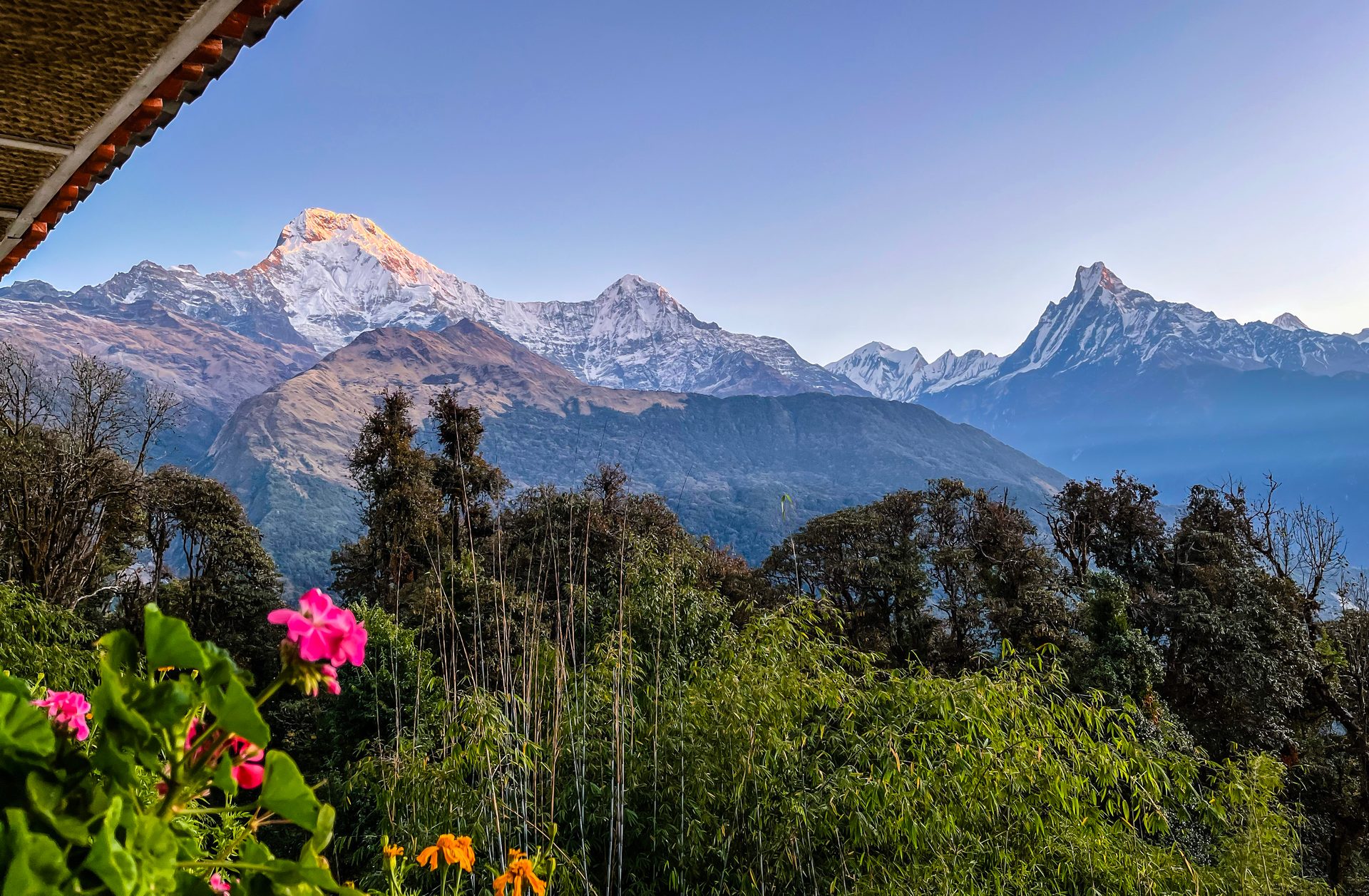
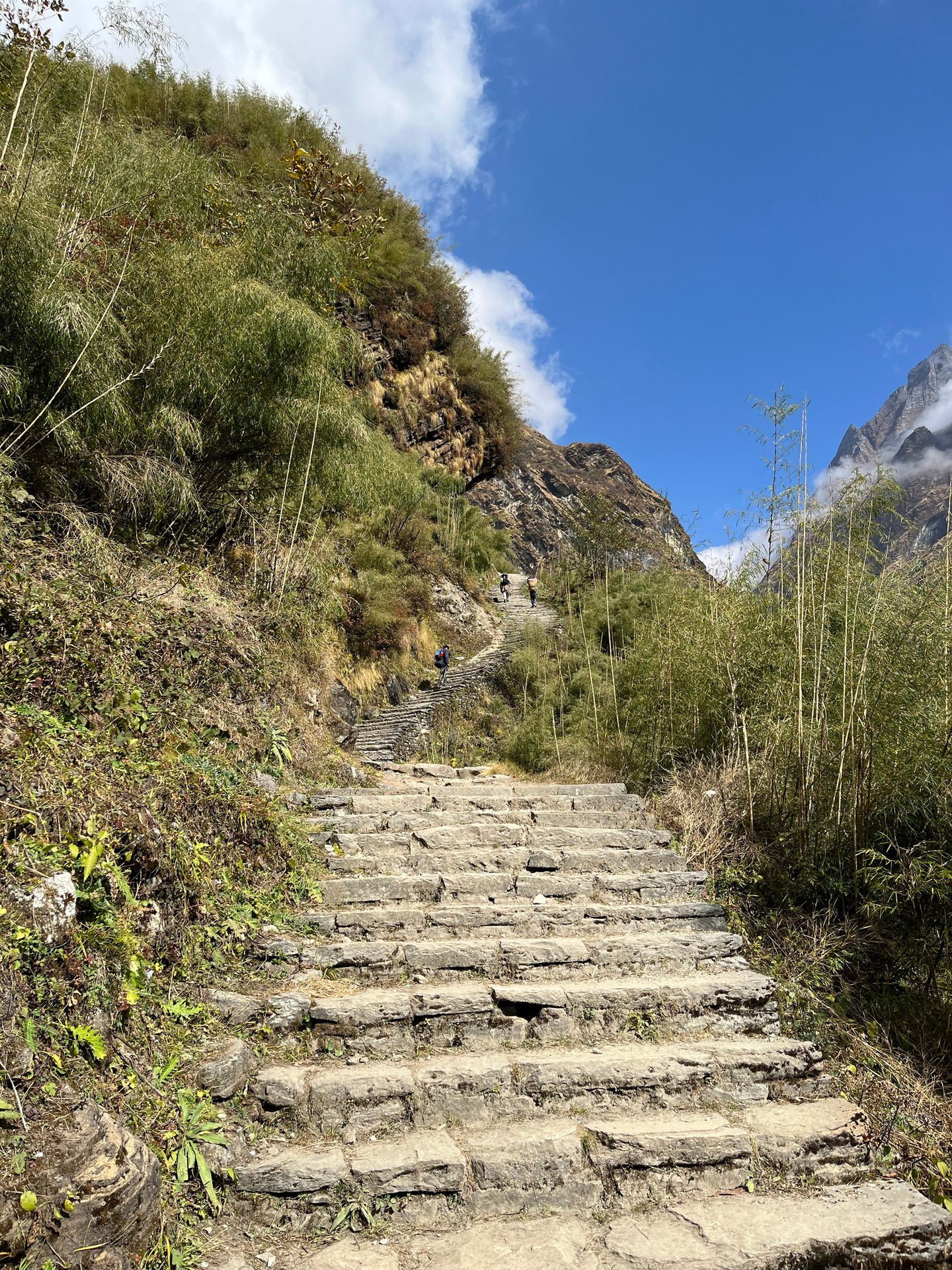
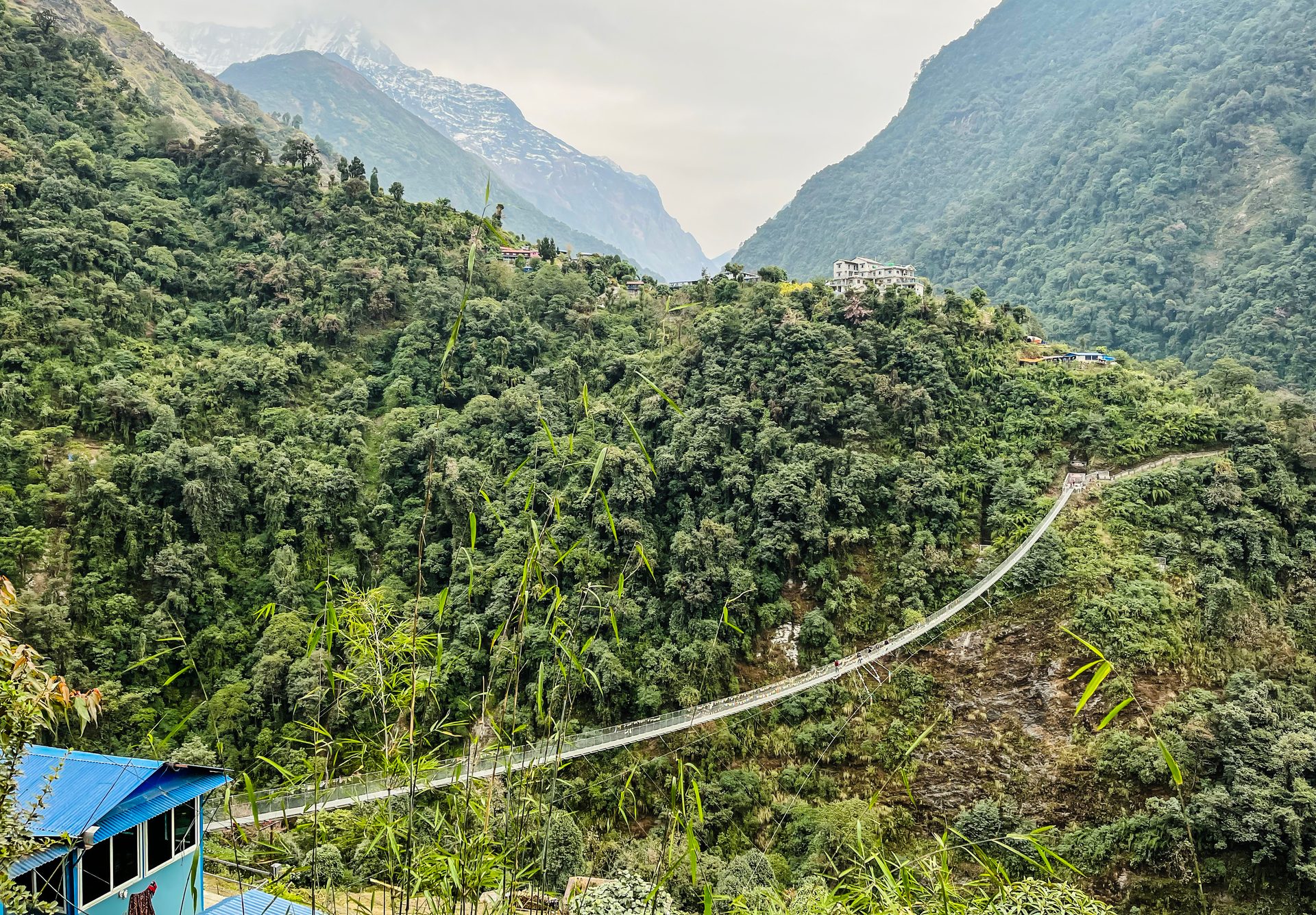
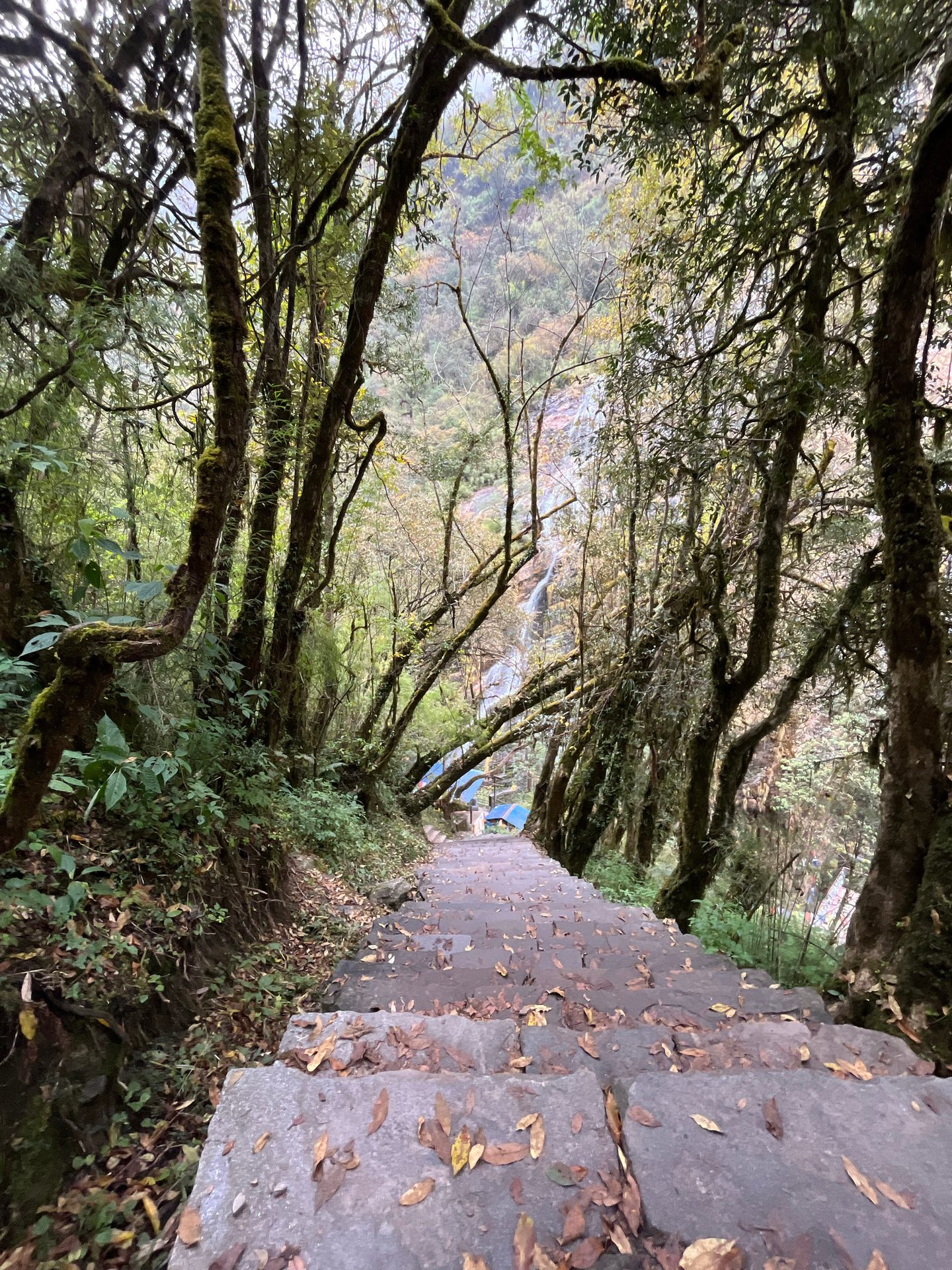
How to reach
For Indian travellers, a free visa awaits at Kathmandu airport. With the luxury of time, one can also reach Nepal by road. Kathmandu is the base for all tourists, trekkers and mountaineers from across the world. A flight or a shared taxi to Pokhara, followed by a drive to Nayapool, marks the beginning of this epic trek.
What you eat on the trek
The standard, most filling, reliable and yummy food is Dal Bhaat. The local swear by its goodness and are often heard saying, “Dal Bhaat Power, 24 hours!” You also get different egg dishes, meat (until Deurali) and items like momos, spaghetti, pasta, soups, noodles, spring roll etc. Copious doses of ginger lemon honey tea, mint tea, milk tea, coffee keep you warm!
Prepare for this 'Moderate to Difficult' trek with prior trekking experience, strength training, and aerobic workouts. A trek of 7-9 days to an altitude of 4,130 meters demands preparation, ensuring you savor every moment.
Some travel tips
Exchange your INR for Nepalese rupees, pack water purification tablets for mountainous regions, and brace yourself for shaky flights at the compact airports. The Annapurna Base Camp Trek is not just a trek; it is a symphony of nature, a cultural dance and an exhilarating climb to the roof of the world.
How to acclimatise
- The golden rule - Hydrate, hydrate, hydrate.
- Eat well – this is generally not a problem as the physical exertion leaves you famished.
- Rest well – sleep at least 8 hours each night to help your muscles recover.
- Symptoms of altitude sickness are nausea, vomiting, lack of hunger, headache.
Trek Essentials
Essentials on this journey include sturdy trekking shoes, trekking poles, dry-fit tees, warm layers, medicines, a first-aid kit, and pocket snacks.
A stark difference from Indian treks – here, tea houses and lodges offer beds, blankets, and even Wi-Fi, though it comes at a cost.
lifestyle
Savouring Wellness
Healthy versions of Christmas Classics featuring Indian Flavours
Don’t forget to leave a generous batch out for Santa!
Enjoy these healthier alternatives with your family while paying homage not just to the rich history of these treats but also to your health and well-being. Merry Christmas! ●
Sania Ahmad
I
t is December. As malls and shopping complexes are decked in festive finery, there is a sense of warmth and belongingness even in the cold winter nights. It is the spirit of Christmas - the time for introspection - of looking back at the year gone by with gratitude, and of getting ready for the year ahead with resolutions, new promises. Top of that list definitely has to be a healthier lifestyle without compromising on your happiness. No? This is not another preachy article telling you to quit the finest things of life. We simply replace the unhealthy with healthier options to satiate your Christmas dessert cravings guiltlessly and add in that desi tadka as well.





The marathon commemorates the legendary run of the Greek messenger Pheidippides from the Battle of Marathon to Athens, a distance of about 40 km (25 miles). According to the story, he ran the entire distance without stopping to deliver the news of the Greek victory over the Persians and then collapsed and died from exhaustion immediately after delivering his message. This legendary run is the inspiration behind the concept of the marathon race.
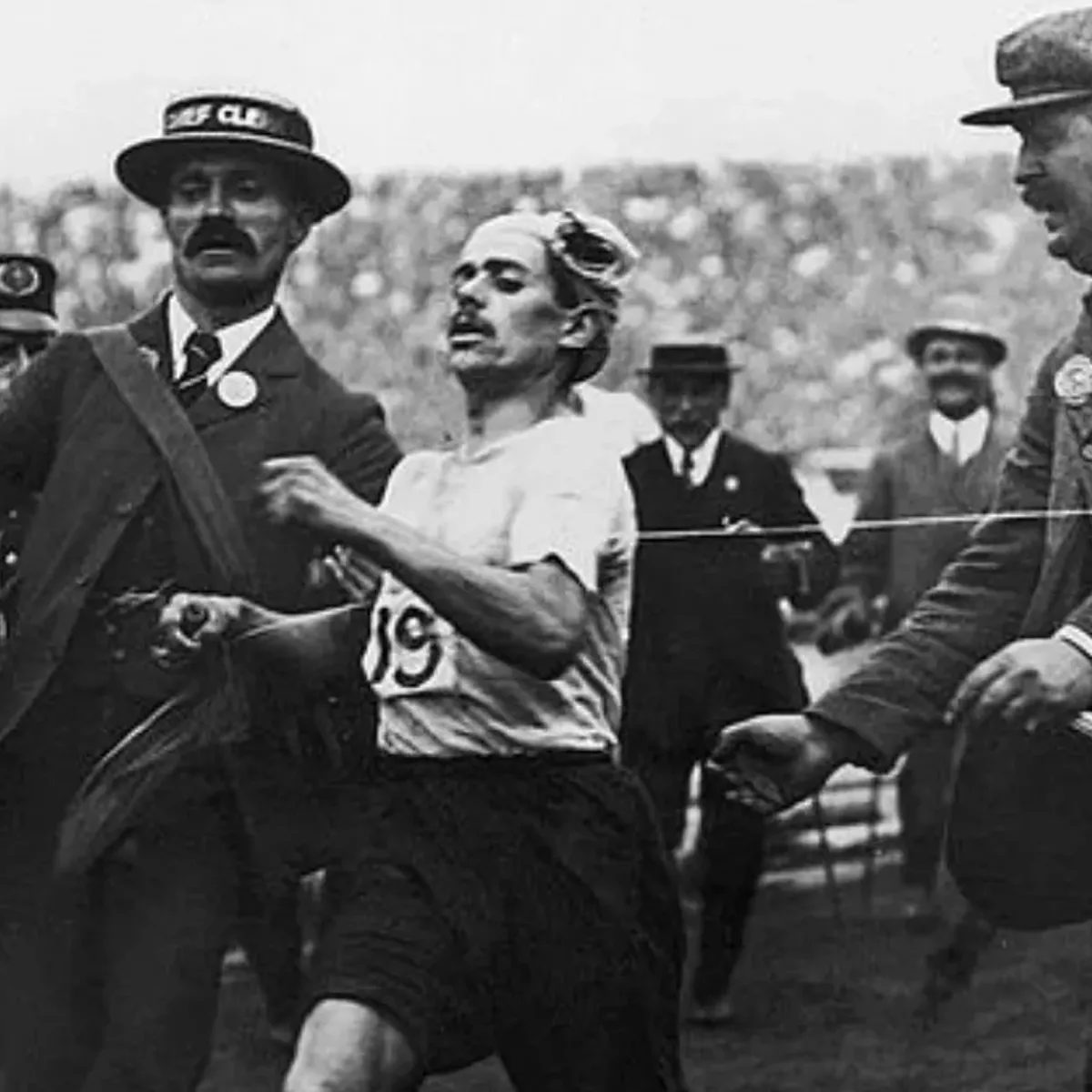
The modern marathon distance of 42.195 km (26.385 miles) was established during the 1908 London Olympics. The course was originally set at 40.233 km (25 miles), but an extra 1.962 km (1.385 miles) was added so the race could start at Windsor Castle and finish in front of the royal box at the Olympic Stadium, as per the request of Queen Alexandra. This specific distance became standardised by the International Amateur Athletic Federation (IAAF) in 1921.

The fitness of marathon runners depends a great deal on their nutrition and hydration plans. A typical marathon runner's diet consists of 65% carbs, 25% protein, and 10% fat. During a marathon, it's recommended to drink 400–800 ml of water per hour and consume energy gels every 45 minutes.
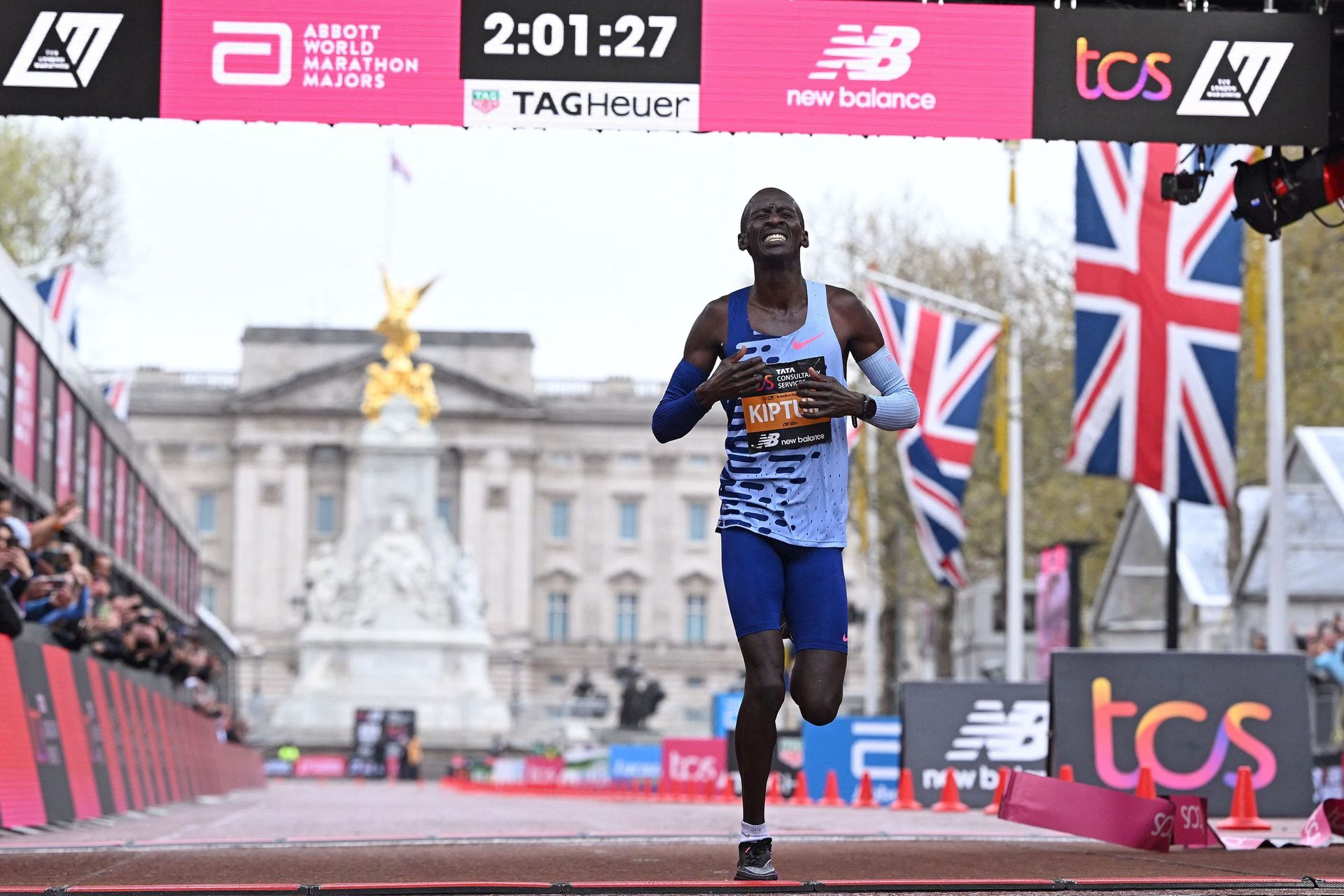
24-year-old Kelvin Kiptum of Kenya holds the current world record in the marathon. On 8 Oct 2023, he won the Chicago Marathon with a new world record time of 2 hours 35 seconds, which was 34 seconds faster than the existing record (set by Eliud Kipchoge at the 2022 Berlin Marathon). Kiptum is the only person in history to run the marathon under two hours and one minute in a record-eligible race.

Desert Run
In what is perhaps the most extraordinary marathon feat, three ultra-endurance athletes ran across the entire Sahara in 2007, covering about 6,400 km (4,000 miles) in 111 days. This is equivalent to running two marathons per day.

Specials
The marathon world has quite a number of unique events. The Great Wall Marathon includes climbing 5,146 steps along the Great Wall of China. The Istanbul marathon is the only one in the world where runners start on one continent (Asia) and finish on another (Europe).
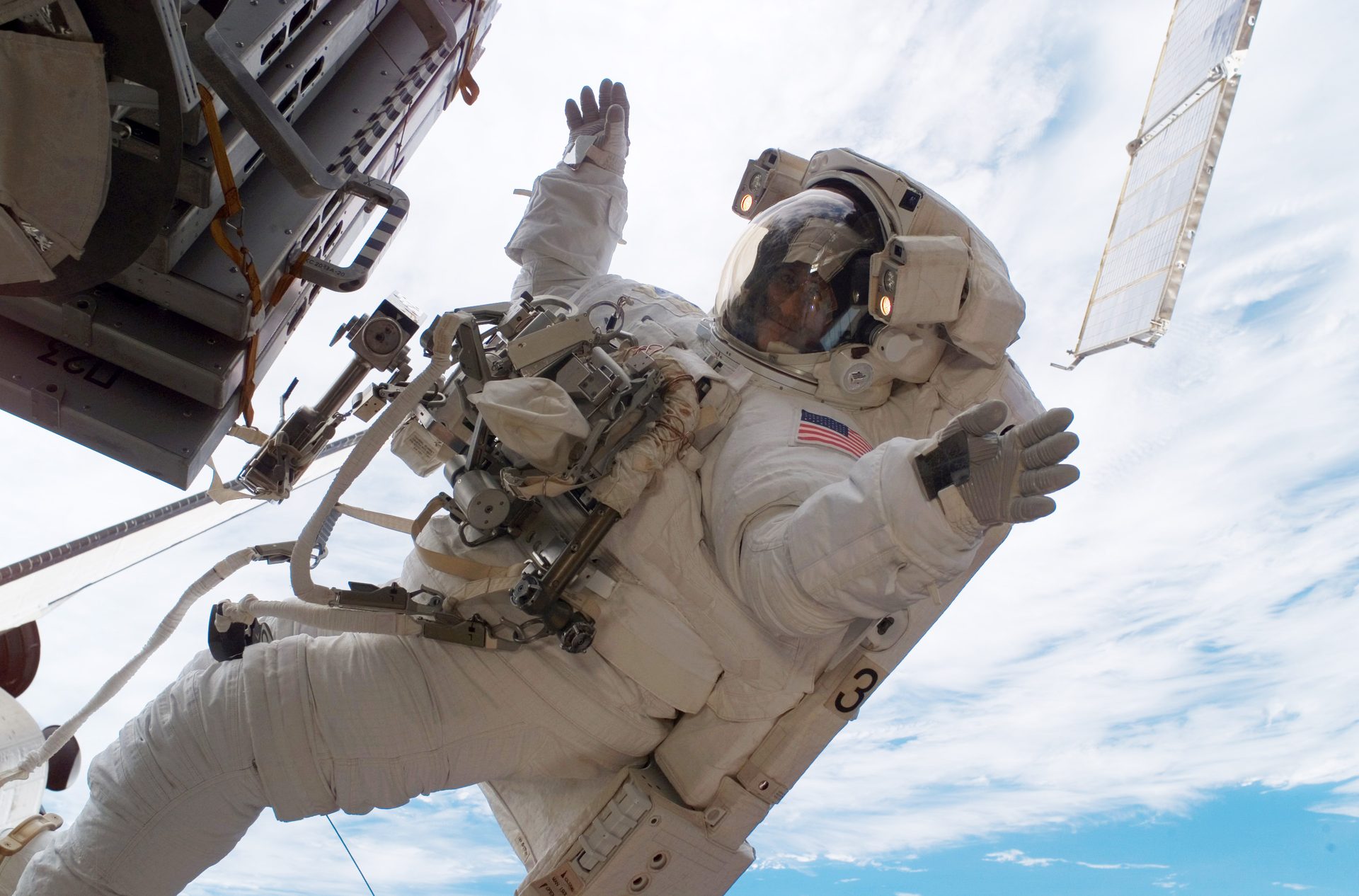
Beyond
It seems the popularity of the marathon extends beyond our earthly bounds. In the first ever marathon in space, American astronaut Sunita Williams (whose paternal roots lie in Jhulasan, Gujarpat) ran 26.2 miles on the International Space Station during the 2007 Boston Marathon, finishing in 4 hours and 24 minutes.
your corner
Unleash your creativity.
Send in your original contributions to connect@adani.com
Please do not forget to attach relevant details.
Office Views & Work Goals!
Aarush Patel
Adani Enterprises
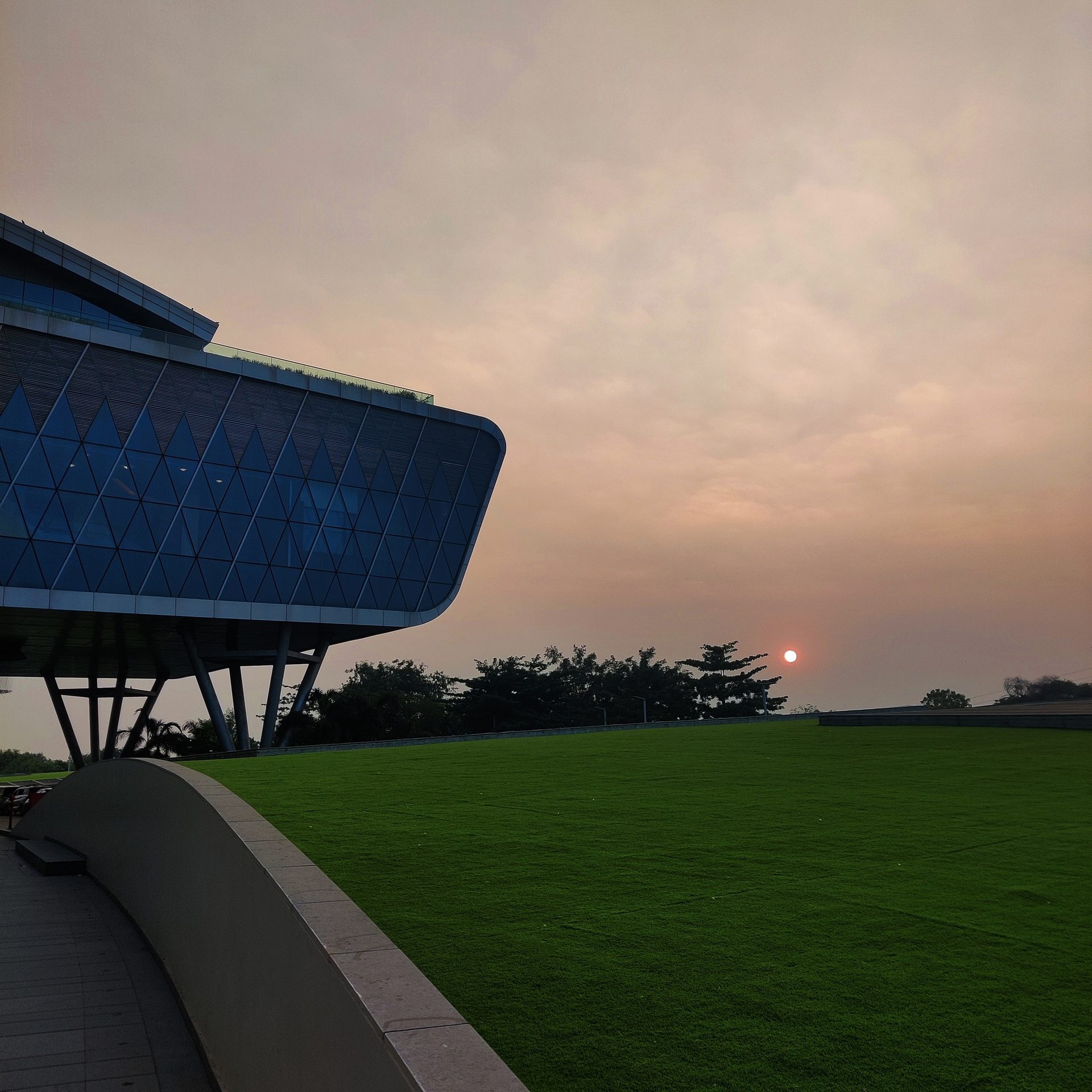
Adani Corporate House, Ahmedabad
Blending In
Jitendra Barve
Adani Logistics

It's Not Over Until We Win. Jai Hind!
Kaustubh Mokal
Adani Total Gas

Narendra Modi Stadium, Ahmedabad
The Nostalgic Streets
Dhruv Trivedi
Adani Skill Development Centre

Pols of Ahmedabad
Happy Diwali
Rangarajan Vijayaraghavan
Strategy & Chairman Office

Sketching Randy Orton
Karn Kedar
Adani Energy Solutions
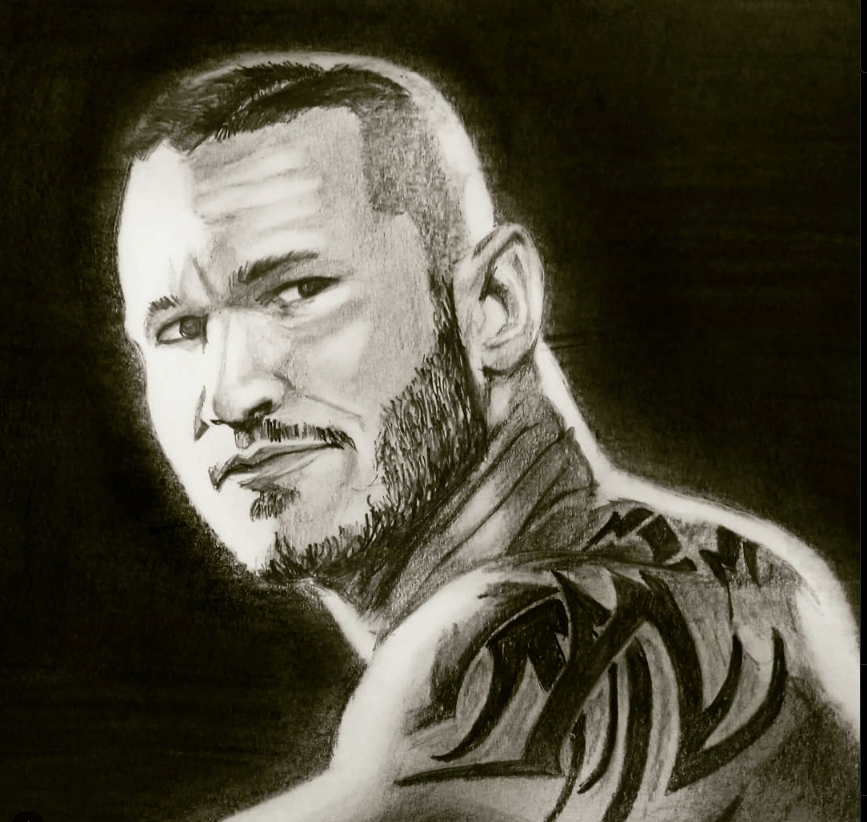
The Architectural Beauty
Jay Prajapati
Export MIS

Mehrangarh Fort
Transforming Business News into a Visual and Intellectual Masterpiece
I wanted to take a moment to share my thoughts on a-connect, our monthly magazine dedicated to the Adani business world. The transformation of a-connect is simply outstanding. Your team’s creativity shines through every page of the magazine. a-connect has evolved into more than just a business publication; it is a work of art. Your ability to present complex information in a visually engaging and intellectually stimulating manner is truly remarkable. Each issue feels like a carefully crafted masterpiece, and the attention to detail is evident.
Reading it feels like embarking on an adventure where you uncover fascinating facts at every turn. Your meticulous attention to detail is praiseworthy. It is clear that every element, from design to language, receives a high level of scrutiny. The magazine’s presentation is top-notch, and this commitment to quality is highly appreciated.
The recent enhancements in a-connect are truly impressive. The magazine has become more engaging, informative and refined with each new edition. I eagerly anticipate each new issue and look forward to witnessing how the magazine continues to evolve in the future.
Mahesh Kumar Ramawat
CPO’s Office, Adani Airport Holdings
Of Unity and Pride
Reading a-connect feels like embarking on a captivating journey through our organisation, skillfully weaving together the pulse of news and trends. Thoughtfully curated content strikes a perfect balance, offering detailed insights in a reader-friendly format. The visually engaging design turns mundane information into an enjoyable experience, fostering unity and pride. Kudos to the editorial team for delivering a publication that truly captures the heartbeat of our organisation.
Mrunmayee Mendhe
Legal, Roads, Metro, Railways and Water (RMRW)
Navigating the Ever-Expanding Adani Universe
a-connect serves as a compass, guiding readers through the Group’s diverse and ever-expanding universe. Through insightful content, engaging writing and stunning visuals, the magazine bridges the gap between complex operations and various stakeholders. From infrastructure and logistics to renewable energy and agribusiness, a-connect provides a holistic understanding of our company’s impact, fostering connections and inspiring people.
Siddharth Srivats
Iron Ore, Adani Enterprises
Empowering Success, Uniting Culture
a-connect fosters a positive work culture by celebrating achievements, sharing updates, and promoting employee engagement through features like Spotlights and ExpertSpeak. It contributes to building a sense of community and identity within the company.
Vaibhav Barde
CEO Office, Adani Enterprises
Inspiring Stories of Growth and Transformation
The magazine’s coverage of the Vizhinjam Seaport project was a delight. The story of overcoming seemingly the challenges and emerging is truly inspiring and reaffirms the Adani Group’s unwavering commitment to India’s progress.
Parul Patel
Legal, Adani Ports & SEZ
Gratitude for a-connect
Thank you for a well-curated collection of insights, inspiration and information about our expansive conglomerate, highlighting achievements, leadership perspectives, and celebrations i.e. a-connect. The articles featured in the magazine are unparalleled, offering a wealth of knowledge and sharing diverse information on both cultural and developmental aspects.
Mritunjay Jha
Legal, Adani Electricity Mumbai
Adani’s Seamless Blend of Communication and Culture
a-connect stays true to its title and ties the organisation with its fabric of communicative pieces. It is but only natural to walk into the office, one glance at the news stand and be captivated by the refreshing graphics on the cover page every month; to skim through the ‘what’s what & what’s new’ in the organisation. a-connect is the perfect, blend & wrapped, at Adani, by Adani and for Adani. Each article curates a one-of-a-kind experience that is relatable yet informative.
Devshree Patil
Legal, Adani Ports & SEZ
A Kaleidoscope of Global Achievements
a-connect magazine is a window into the multifaceted world of the Adani Group, offering readers a curated exploration of the company’s achievements, projects and vision. From breakthroughs in renewable energy to transformative infrastructure endeavours, the magazine captures the essence of Adani’s global presence. Through compelling narratives and visually captivating content, a-connect keeps readers informed and inspired, illustrating the Group’s commitment to shaping a sustainable and impactful future.
Diveshaa Kumar
Fuel Management, Adani Power
letters

Keep the feedback flowing. We value every letter from you.
We’d love to hear More from you!
a-connect is your magazine.
We are committed to providing you informative and engaging content through a-connect. To do this, your insights and feedback are crucial.
As we strive towards excellence, we value your inputs. We want to know what you liked, what you did not, and how we can improve.
We would love to keep hearing from you on what more we could cover, explore or highlight in a-connect. Are we missing something? Is there a particular topic you would like to learn more about? Are there any trends you would like us to follow?
Your suggestions will help us to deliver the content most relevant to you. Please connect with us. We will publish a selection of the comments we receive.


